- Meet the Team
- Work with Us
- Czech Republic
- Netherlands
- Switzerland
- Scandinavia
- Philippines
- South Korea
- New Zealand
- South Africa
- Budget Travel
- Work & Travel
- The Broke Backpacker Manifesto
- Travel Resources
- How to Travel on $10/day
Home » Europe » Travel Safety

Is Italy Safe for Travel? (Insider Tips)
Italy gave the world the Renaissance, opera and a lot of classical music. It gave the world the Romans and all their art, culture and philosophy. It gave the world pizza. A cultural powerhouse, Italy also boasts nature and beautiful villages galore for ultimate charm.
However, Italy isn’t without its problems: petty theft is a big issue here. And let’s not forget that Italy also gave the world the mafia. Organised crime is still a big deal in this European country, and so are volcanoes.
There’s a whole lot of stuff about Italy that could understandably leave you wondering, “Is Italy safe?” Which is exactly why we have created this epic insider’s guide for safe travel in Italy. If you’re wondering whether it’s safe to drive or travel as a solo female in Italy, we’re here to make sure you know the score when it comes to travelling smart!
You may also be concerned as someone thinking of taking their family to Italy for the first time, or you may simply be worried about something a little more every day – like whether or not you can drink the water in Italy; whatever it is, don’t worry. We’ve got you covered!

Unlock Our GREATEST Travel Secrets!
Sign up for our newsletter and get the best travel tips delivered right to your inbox.
How Safe is Italy? (Our take)
Is italy safe to visit (the facts), italy travel insurance, 26 top safety tips for traveling to italy, keeping your money safe in italy, is italy safe to travel alone, is italy safe for solo female travellers, is italy safe to travel for families, is it safe to drive in italy, is uber safe in italy, are taxis safe in italy, is public transportation in italy safe, is the food in italy safe , can you drink the water in italy, is italy safe to live, how is healthcare in italy, helpful italy travel phrases, faq about staying safe in italy, final thoughts on the safety of italy.
Pretty much the birthplace of Western culture (thanks to Romans) and home to an incredible amount of World Heritage Sites, you’re going to want to visit Italy. On top of this, it’s generally a pretty safe country.
But with all those attractions come a whole truckload of tourists, which means petty theft.
Violent crime might be relatively low, but pickpocketing, bag snatching – that sort of thing – it’s fairly common.
Organised crime obviously has roots in Italy, and unfortunately, it’s still here. In fact, it’s been going on for centuries. There are five major and quite active mafia organisations in Italy and they’re pretty notorious. Usually, tourists are unaffected, but some elements can make an impact on your trip.
Also, there’s nature that can be worrying. Earthquakes, volcanic eruptions sometimes happen. Avalanches are a thing to watch out for if you’re skiing and at the other end of the spectrum, forest fires can happen in summer.
So you probably want to know…
There is no such thing as a perfect safety guide, and this article is no different. The question of “Is Italy Safe?” will ALWAYS have a different answer depending on the parties involved. But this article is written for savvy travellers from the perspective of savvy travellers.
The information present in this safety guide was accurate at the time of writing, however, the world is a changeable place, now more than ever. Between the pandemic, ever-worsening cultural division, and a click-hungry media, it can be hard to maintain what is truth and what is sensationalism.
Here, you will find safety knowledge and advice for travelling Italy. It won’t be down to the wire cutting edge info on the most current events, but it is layered in the expertise of veteran travellers. If you use our guide, do your own research, and practise common sense, you will have a safe trip to Italy.
If you see any outdated information in this guide, we would really appreciate it if you could reach out in the comments below. We strive to provide the most relevant travel information on the web and always appreciate input from our readers (nicely, please!). Otherwise, thanks for your ear and stay safe!
It’s a wild world out there. But it’s pretty damn special too. 🙂
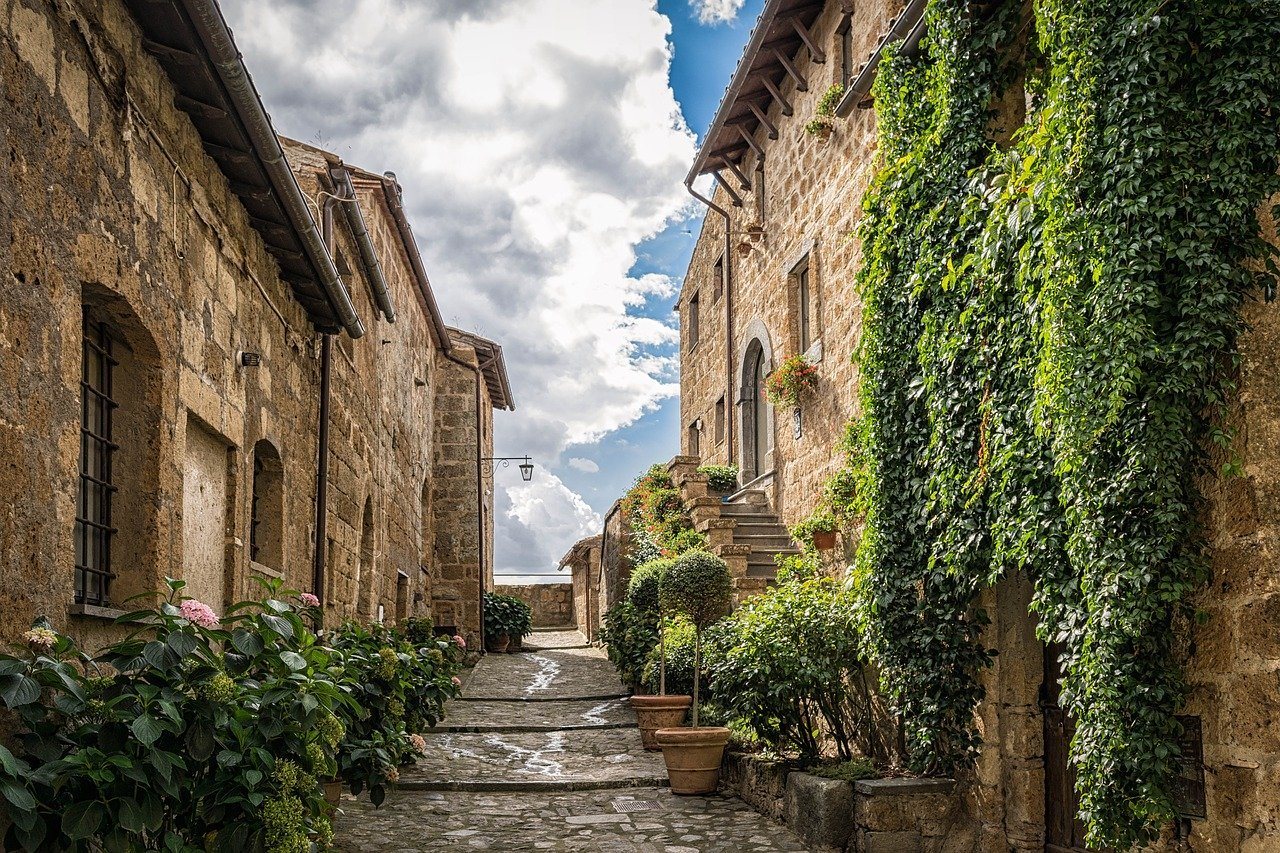
Italy is absolutely safe to visit. In 2017 Italy played host to 58.3 million tourists and that figure is up 4.4% compared to 2016! Tourism in Italy is quite literally booming. Of course, almost everyone ends up visiting Rome . It gets a 27 million person slice of the pie.
In fact, tourism has grown so much in Italy, that in 2017 (for the first time) the number of foreign people staying in hotels outnumbered Italian people travelling in their own country. That says a lot, as Italians prefer domestic to international trips.
Like many similar spots around the world, Italy’s top tourist spots are suffering from major overcrowding during peak season. There’s actually a growing anti-tourism sentiment, particularly in the UNESCO-designated Cinque Terre and Venice , where locals have actually protested against tourists.
As far as safety is concerned, however, Italy comes 38th on the list of 163 countries measured on 2018’s Global Peace Index. That’s a good score.
But as mentioned earlier, there are serious issues with organised crime that really runs deep throughout the country and that directly affects 22% of citizens. Murders, including those of judges and lawyers, have happened, especially in Southern Italy more than in the north. However, this won’t be affecting you.
ALWAYS sort out your backpacker insurance before your trip. There’s plenty to choose from in that department, but a good place to start is Safety Wing .
They offer month-to-month payments, no lock-in contracts, and require absolutely no itineraries: that’s the exact kind of insurance long-term travellers and digital nomads need.

SafetyWing is cheap, easy, and admin-free: just sign up lickety-split so you can get back to it!
Click the button below to learn more about SafetyWing’s setup or read our insider review for the full tasty scoop.
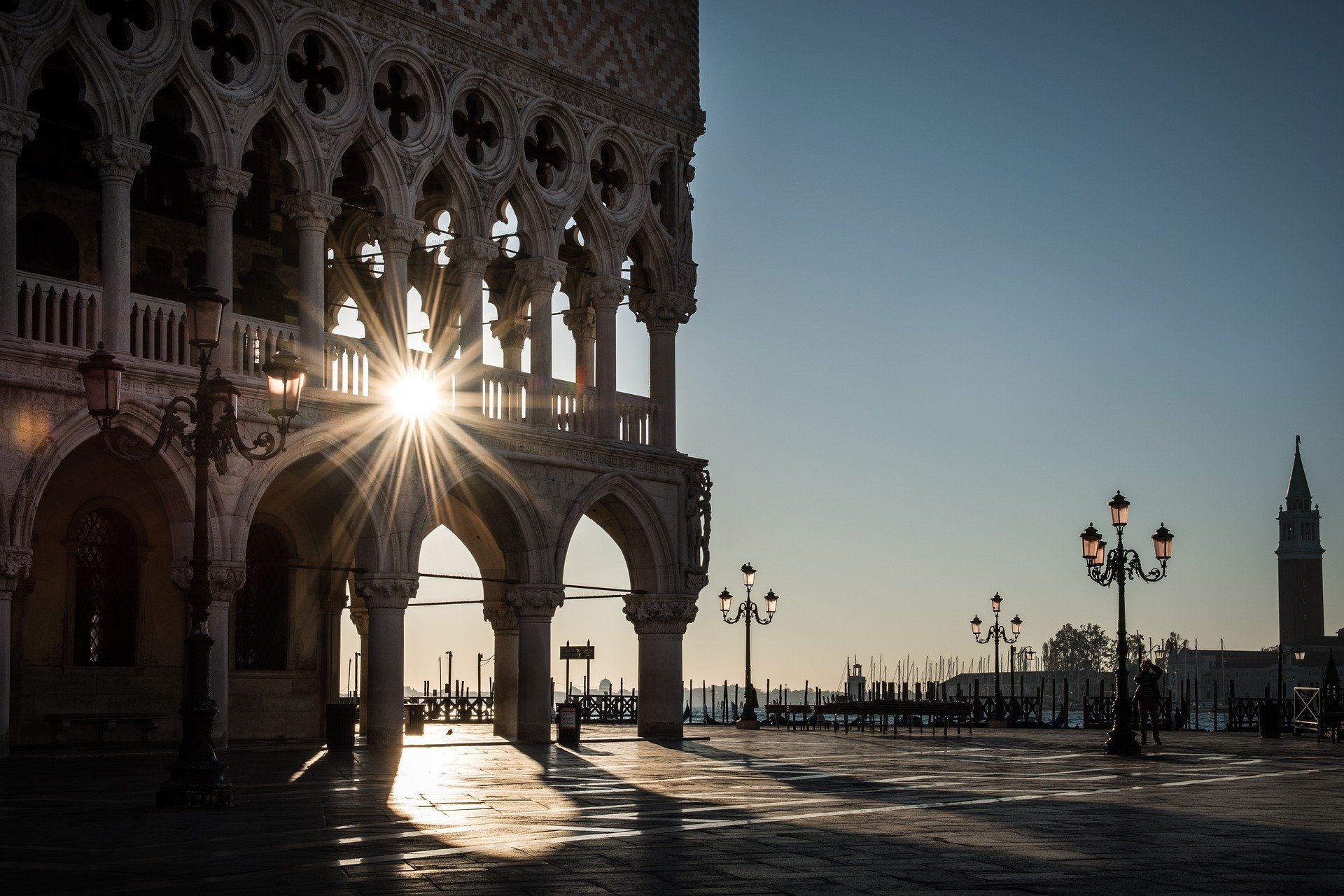
For the food alone, Italy is worth a trip or even multiple trips. Then there’s driving around Tuscan wine country, exploring the rocky coast of Calabria and beach-hopping in Sardinia. There’s literally a ton of stuff to be getting on with when you’re planning a backpacking excursion to Italy . Because it pays to travel smart, we’ve decided to share with you our pro travel tips for Italy.
- Keep away from protests – they can occur without any warning in the cities, and they’re not fun to get caught up in.
- Be careful of public transport and big stations – high levels of not just petty theft but actual muggings, too.
- In particular, be vigilant on the Circumvesuviana Train between Naples and Sorrento. This is true especially in port areas, and also Fumichino Airport.
- Watch your belongings in busy tourist areas – more tourists = more targets for pickpockets. Make sure that you wear a money belt to mitigate the risk of theft. Try not to look too much like a tourist as well as for pickpockets, they’re rich and stupid.
- Try to dress like an Italian – in cities, people dress well. Sportswear and designer weirdness won’t look good. Something chic, simple, well-groomed to fit in will do.
- Clutch your bag in cafes – leaving or hanging your bag on a chair, even putting it on the floor is risky. In a busy city, it may just disappear.
- Leave valuables in your safe (if you’ve got one) – if not, leave them hidden in your room and purchase a padlock to keep them safe.
- Use pedestrian crossings – be careful of speedy vehicles, especially in big cities.
- Clue yourself up on the weather before skiing – you can even contact the Italian State Tourist Board about this.
- Don’t go off-piste skiing if you don’t know what you’re doing – it’s too dangerous. If you do go off-piste, carry a tracking device – it’s the law and will help you get found in an avalanche.
- Follow local advice/laws for skiing and snowboarding – not worth the risk.
- Check for severe weather warnings – these can really put a dampener on any outdoor activities, especially in the mountains.
- Go with a guide if you’re visiting Etna or Vesuvius – access can be restricted. Plus, it’s more interesting with some information and local knowledge to go with it!
- Take care in the sun – or like Italians, stay out of it when it’s at its peak. Stay hydrated and cover-up.
- Carry ID on you at all times – it’s the law. A photocopy is fine, but you should comply with the police with things like this.
- Beware of beggars – in large cities they can get aggressive. Much of the time, they’re part of organised groups.
- Similarly, beware of the Roma community – many have been known to target tourists for scams, pickpocketing, begging with sedated babies, that sort of thing.
- Know that you don’t have to tip the musicians near restaurants – if you don’t want to tip them, don’t look like you’re enjoying it; they will hassle you.
- Keep vigilant – distraction techniques abound in Italian cities. It’s all a front to take your stuff. Don’t fall for suspicious things.
- Don’t buy counterfeit bags on the street – you can be fined up to 300,000 Euros!
- Be careful in Naples and Mezzogiorno (southern Italy) – they have a higher crime rate – the north, like Milan, has less.
- Know about the flag system on Italy’s beaches – strong currents and things like jellyfish are signified by various flags.
- Take your rubbish with you – especially in forested areas in summer. Glass can literally burn it all down.
- Watch out if there’s a forest fire happening nearby – they can change direction with the wind and trap you so make sure you watch out for it.
So there you are – quite a few safety tips for travelling Italy. It may seem like there’s a lot that you should be looking out for, but at the same time, Italy is still a relatively safe place to visit. Violent crime is pretty low and most of the time, it’s going to be your money that people want. Be smart in the cities, and be sensible in nature, and you’ll be bound to have an awesome time exploring Italy.
With all that stuff about distraction techniques, scams, and pickpockets, no wonder you’ll be wanting to keep your money safe in Italy. The last thing you want is to reach into your pocket and find your wallet is no longer there!
To keep your Euros safe in Italy, there is one thing you can do that’s going to stop would-be pickpockets in their tracks. And that thing is to have nothing to steal in the first place. How? With a travel money belt !

The Pacsafe Money Belt is our best bet. It’s affordable, it looks and acts like a belt, and it’s sturdy – what more could you ask for out of a money belt!
We’d definitely recommend this one! It looks like a normal belt, it’s sturdy, and it’s affordable. Triple win. All you have to do is tuck your Euros into the Pacsafe Money Belt; that means even if you do end up letting your guard down, there’s nothing in your pockets for pesky pickpockets to pilfer.
If you need a little more room for your passport and other travel valuables, have a look at a full-size money belt that tucks under your clothes instead.
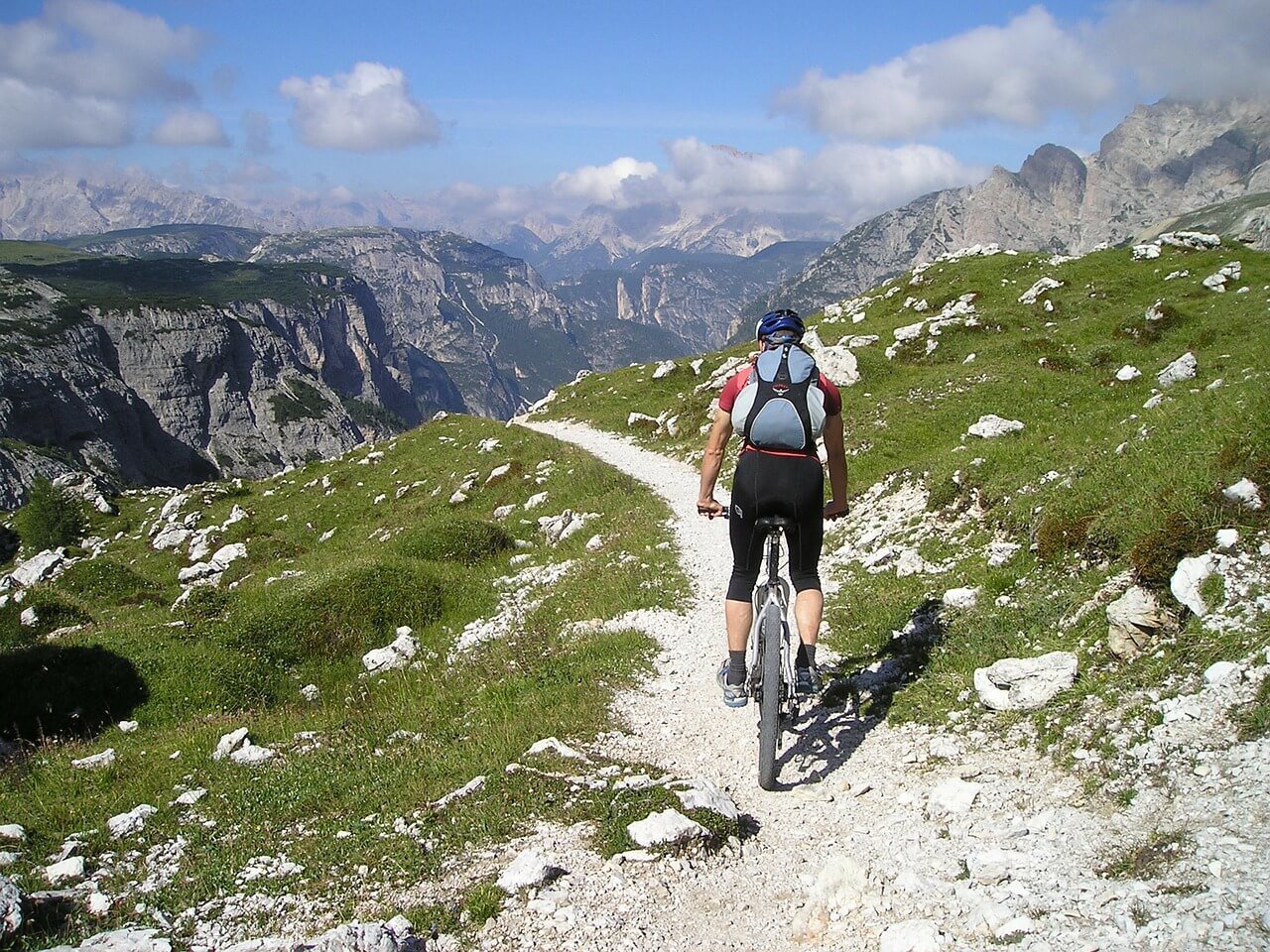
There are quite a few reasons why we think solo travel is pretty much awesome. Firstly you get to challenge yourself, follow your own itinerary, and you get to see the world for yourself and no one else.
But there are downsides. It can get pretty lonely sometimes, and you can even get pretty jaded. You can be more at risk of crime too. But luckily Italy is safe for solo travellers. Even so, it pays to be in the know so here are our top tips for travelling solo in Italy.
- Stay vigilant at all times. When you’re travelling solo, you’re going to be more of a target for petty crime. You’ll have no one else to look out for you, so just be alert.
- Get yourself a sim card either at an airport or a shop. This helps with maps, so you can actually find your way around without getting lost. It also helps to stay connected with people, too.
- Let people know what you’re doing at all times. Don’t ghost your friends and family back home, or go off-grid completely. Make some Facebook updates, call your mum, just do something so people back home know where you are. It’s better and safer if someone knows.
- Don’t drink too much when you’re out. We’re all up for a drink, of course, but getting completely trashed is a good way to be unsafe. You might not be able to find your way home and you could be more open to bad suggestions.
- Stash your money in different places. Have a few different cards, a credit card for emergencies or some euros stashed somewhere. If all your stuff gets stolen, you’ll be grateful to have some emergency money.
- Stay in a social accommodation with good reviews. Doing your research on the hostel, hotel or guesthouse you want to stay at is going to help you stay somewhere that suits you. If you want to be social and make friends – good to get rid of those solo travel blues – then checking into a social hostel that’s perfect for solo travellers who want to meet people is the best idea for you. If you decide to stay at a vacation rental in Italy , be sure to choose a trusty website such as Airbnb or VRBO with previous guest reviews.
- Get chatting to the staff at your hostel, or even locals, for some local tips. This sort of advice is really helpful when you’re travelling by yourself. You’ll get to discover interesting areas, cool hangouts and historic gems.
- Learn some Italian. English isn’t widely spoken, especially in more rural areas. Even a few words and phrases will help you chat with local people.
- Don’t try and do too much. Trust us: there’s a ton of things to see and places to visit in Italy . Your guide book will tell you the same thing, but don’t feel like you have to do absolutely everything. Remember, sometimes just having an admin day, or a day to chill out, or even just hanging out in cafes all day, can be a good time to relax and rejuvenate away from a busy schedule of Italian sightseeing and travel.
- Try to travel as light as possible. It’s just not fun dragging around a load of crap, half of which you most likely won’t need anyway. So pack for Italy wisely.
Basically, Italy is a super interesting place to travel around. Do not feel like it’s a cop-out to visit Italy. Just because it’s not a ‘backpacking mecca’ or whatever, doesn’t mean you shouldn’t go there. It’s touristed, but it doesn’t take much to find yourself in an incredible rural village with no other English-speakers, or on a remote hike soaking up some epic views. Honestly? Italy is a stunner.
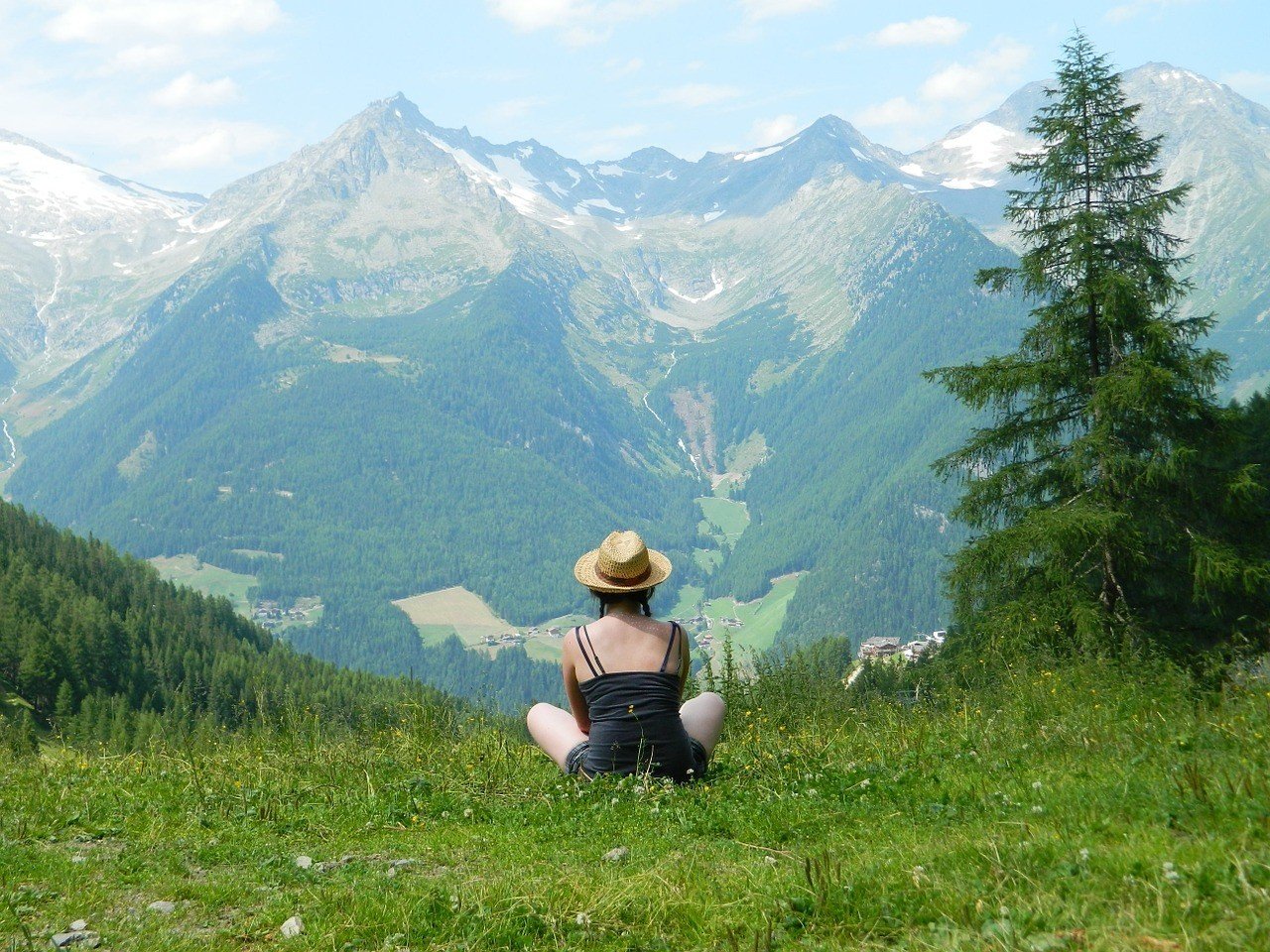
It is safe in Italy for solo female travellers. If you already know about travelling solo as a female, then you’re going to be well equipped to deal with anything that gets thrown your way in Italy. Some places are amazing, some places could be skipped and may require street smarts.
But whilst it is safe, you’ll always have to assess the risks to make sure you stay safe. That said, we’ve got some tailored tips for solo female travellers making their way around Italy.
- Be careful with drinking too much. Drinks in Italy can be stronger than in your own country, and being overly drunk can make you more of a target.
- Don’t leave your drink unattended. Nor your food – spiking victims are robbed or assaulted.
- Be aware of overt catcalling. Things like ciao bella! – touching you, grabbing you – all that sort of stuff can happen in Italy. If it happens to you, try to ignore it and move on as Italian women do.
- Italian women can be more forceful towards foreign women. If you feel uncomfortable, ask for help from a local.
- Say (or shout) che schiffo! (kay-skee-fo) if you feel that someone’s groping you on crowded public transport. That means ‘how disgusting’ or ‘eww that’s gross’ and will most likely shame the person into stopping.
- Don’t feel like you have to tell people everything about yourself. You don’t need to tell strangers anything! Whether you’re married, where you’re staying, where you’re from, where you’re going… If it feels like a man is asking too many questions, just make stuff up.
- Don’t wear overly revealing outfits. In Italy, women wear what they want, but nothing too revealing. A tip would be to just try to imitate what they’re wearing. Helps you blend in.
- Don’t walk around secluded areas and parks at night time. Especially not by yourself. Even in your home country (most likely), this is a sketchy thing to do.
- Stay in female-only dorms in hostels and make friends with other female travellers. This is a good way to swap stories, tips, make some drinking buddies or even some friends to travel onwards with. A great way to stop feeling jaded about solo travel is to hang out with other people.
- Go on a guided tour or hire a guide. This is a good way to explore the city if you’re not feeling comfortable doing so by yourself. They’ll also be able to tell you a lot more about places and make the whole experience a lot more interesting.
At the end of the day, Italy is a super fun place to visit as a solo female traveller, and loads of women do travel by themselves here. There’s quite literally no end of things that you can get up to in this cool country, and it’s easy to travel around as a woman, too.
But that doesn’t mean you shouldn’t be careful. Italy is no different from your home country so just because it’s relatively safe in terms of travel destinations, doesn’t mean you should let your guard down. Usual rules apply in Italy: trust your gut and keep out of trouble. Italian men can be pretty tricky. It can be hard work batting off all the catcalls without reacting and in person, men can be overly flirtatious, too. Be confident and enjoy yourself! These things shouldn’t define your Italian trip, so don’t let them.
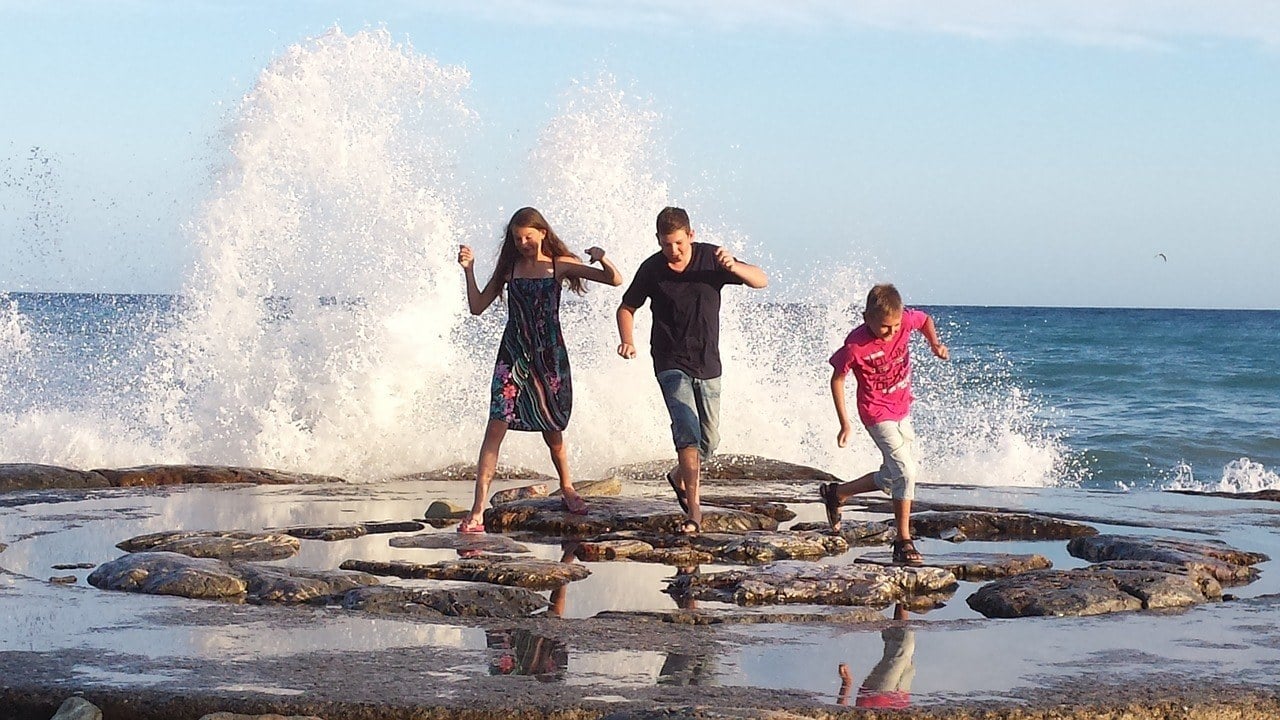
Italy is absolutely safe to travel for families.
It’s well-trodden when it comes to family holidays. Everything from Eurocamp to family-friendly hotels by the sea makes it very easy to find a place to stay.
Add that to scenic drives and a great train network and you’ve got yourself an amazing family destination. And what’s more, in tourist areas English is actually quite widely spoken.
Italian culture is all about food and family, and an easygoing pace of life. It’s a super fun and place to take children of all ages.
Children will be in awe of old architecture, Roman ruins, getting the chance to learn how to be a gladiator for the day, and enjoy the amazing nature on offer.
Out of the cities, which can be a little bit of a nightmare in peak tourist times (summer is the most popular time to visit Italy), the rural side of Italy is old fashioned and low key. There are beautiful beaches to have fun on and lakeside resorts to enjoy.
You won’t have to worry about eating as most restaurants welcome kids. Also, you won’t have to worry about picky eaters – a simple tomato pasta or Margherita pizza always goes down a treat! One thing though: Italian people eat late. Don’t expect to be having dinner before 8 pm. But we say adjust those bedtimes and join in!
You won’t always be able to get hold of everything whenever you want it. For example, loads of stuff is closed on Sundays.
And when it comes to the summer months, that sun can get really hot. Do as the locals do and seek shade when the sun’s at its hottest and be liberal with that sunscreen.
There’s also the hazard of ticks. These can be pretty nasty so if you’re out hiking, bare legs and arms aren’t a good idea. Mosquitoes, too. There have been cases of Chikungunya (carried by mosquitoes) in Rome and northern Italy.
But other than that, it’s an awesome place for kids. Skiing, snowboarding, ancient history, lounging on the beach, hiking, eating tasty food… You name it.
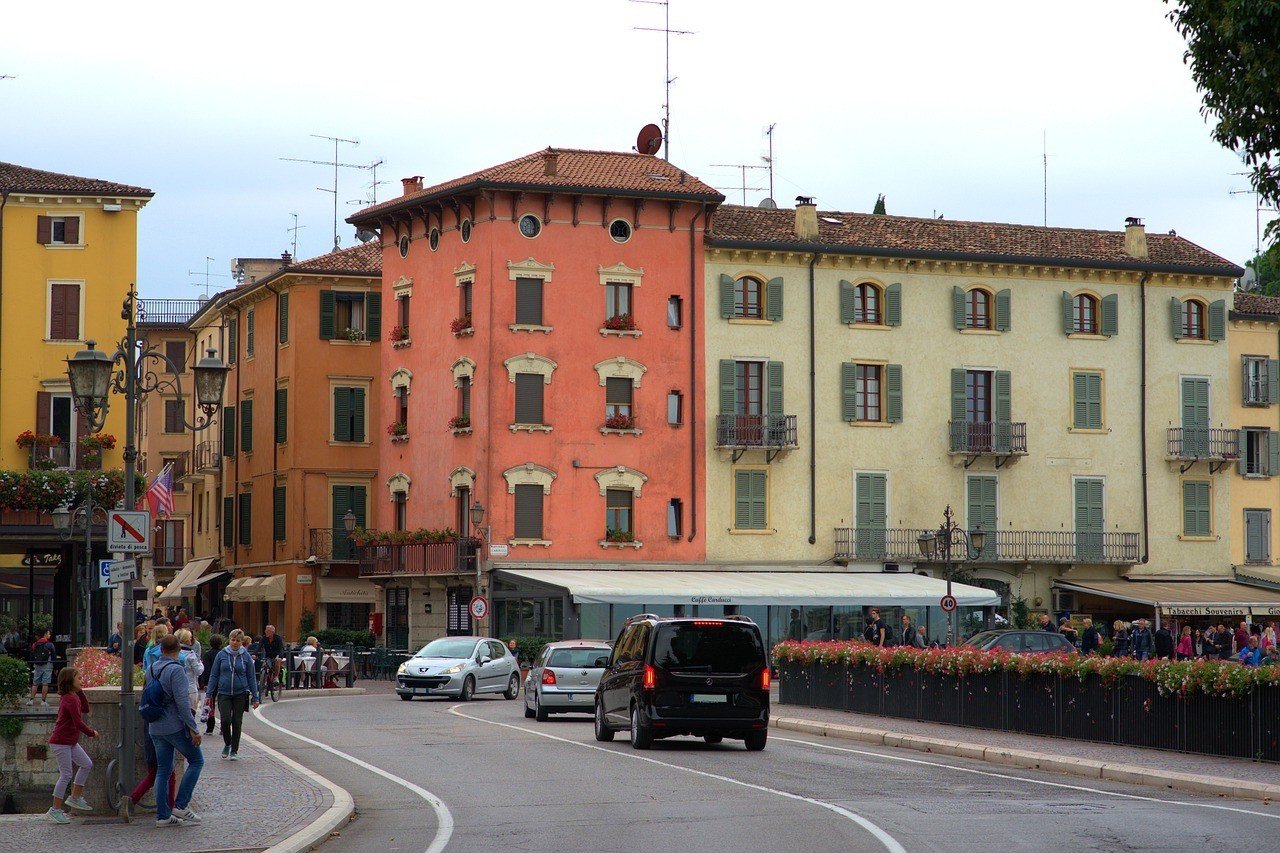
It is safe to drive in Italy but it can be very intense.
Cities particularly can be crazily busy and hard to navigate. Mopeds parked everywhere, narrow streets and one-way systems. Sicily, in particular, is notorious for tricky driving.
In the Mezzogiorno, particularly Naples , you may have trouble with parking. Organised gangs run parking rackets; you find a place to park, someone sidles up to you and says you’ve got to pay ‘in case something happens to your car’ and you either have to pay or find somewhere else to park.
Car robbery is also a thing. We’re talking Milan, Rome, Pisa and at service stations along highways. Potential thieves may try a distraction technique to lure you away from your car whilst someone else steals your stuff – or the whole car.
In some historic city centres you can’t enter with a car without an official pass. The boundary is usually marked with the letters ZTL and you’ll be fined if you go past these signs. Do some research on where to get your pass and which cities it applies to.
In Milan there is a congestion charge and Rome has restrictions on vehicles in certain areas (based on random number plates).
However, Italy is awesome for road trips. Driving through Tuscany or the Italian Alps makes for stunning journeys. But do beware of narrow winding roads in mountainous areas – there can be some pretty hair-raising sheer drops!
Outside built-up areas it’s compulsory to have your headlights on at all times . It’s also the law to use your seatbelt and it’s obligatory to have a high visibility jacket and warning triangle in your car.
To sum up how safe it is to drive in Italy: cities = bad, countryside = good. It’s a great place for a scenic drive, though, so don’t let local traffic discourage you. If you decide to rent a vehicle, make sure you also purchase solid rental insurance.
Uber is completely safe in Italy. However, it is a little bit limited – it is only available in Rome and Milan.
Some taxi drivers might try to tell you that Uber is illegal, but ignore them – it’s not.
Of course Uber is safe. The usual benefits apply: knowing what your driver looks like, the make of the car, reading the driver’s reviews, tracking your journey, paying by card in-app, not worrying about the language barrier and so on.
All in all, Uber is pretty safe and convenient in Italy.
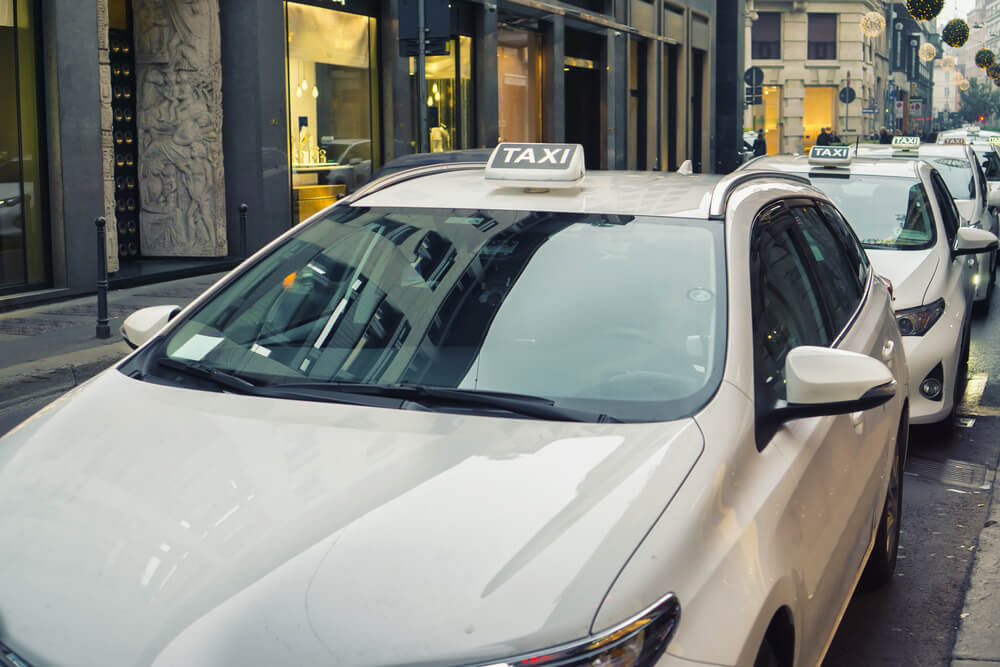
Most taxis are safe and professional in Italy.
There are, however, taxi drivers out there who will try to rip you off, especially if you’re a tourist. You should only use official licensed taxis. These have a ‘TAXI’ sign on the roof and you can pick them up at a taxi rank.
If somebody tries to offer you a taxi in the street, or at the airport, or whatever, don’t bother with it. Always order them in advance or get them from a taxi rank.
When the taxi turns up after you’ve called it, don’t be alarmed to see money on the meter already. This is because the charges start from when you call, not when your actual journey starts. Might seem weird but it’s not a scam. Make sure the meter is running, though. If you try to arrange a flat rate you won’t come out on top.
It may feel like people are trying to drive you around the houses in places like Rome – but it really is just a very winding city. If you are worried, follow the journey on Google Maps or something similar.
When it comes to paying, have small change handy. Paying with a massive note isn’t a good idea and isn’t considerate. Also, check your change to avoid being shortchanged.
But all in all, the taxis are safe in Italy.
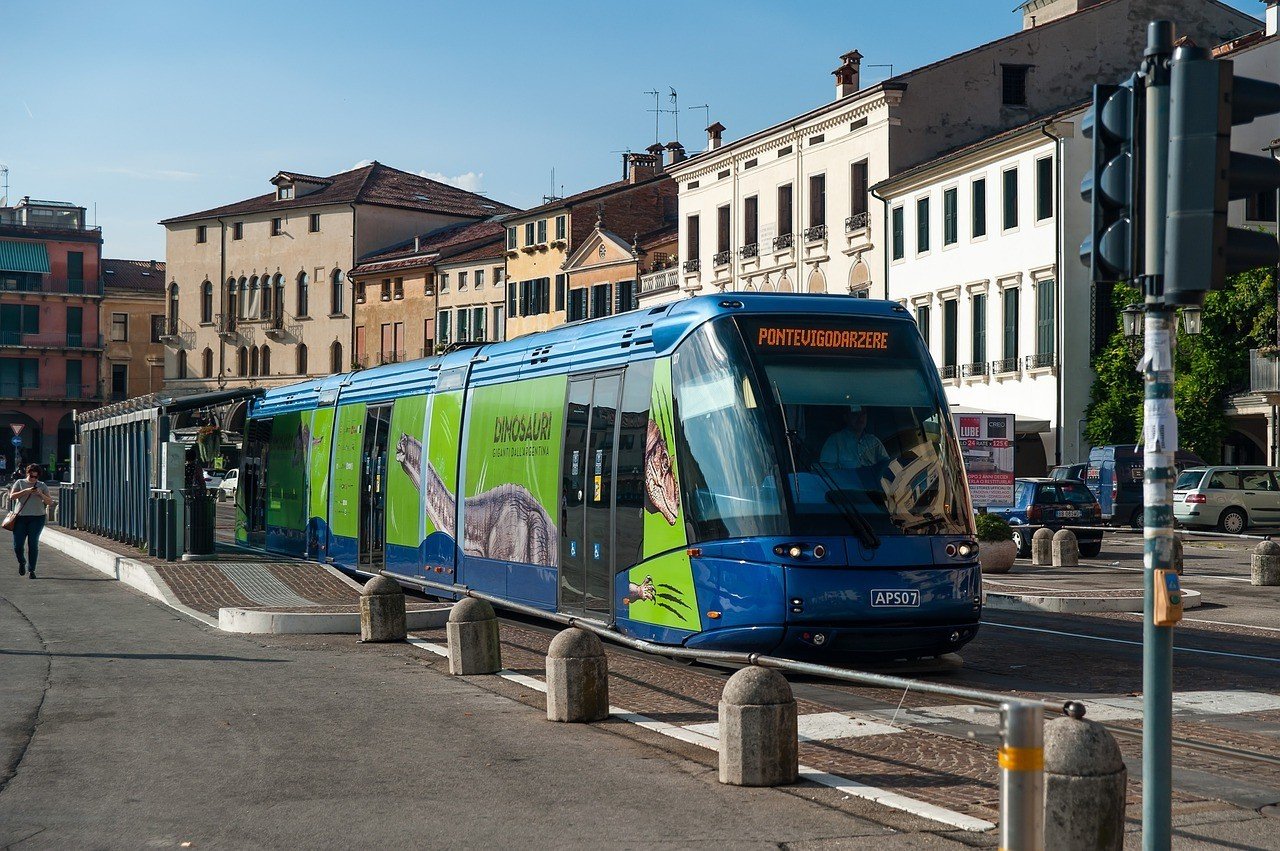
Italy is blessed with pretty decent public transport – and generally safe and reliable on top of it.
There are trains connecting major cities – and smaller towns, too – which make it quick and easy to get where you want to go. Second class seats are cheaper but don’t let your belongings out of your sight. Petty theft isn’t unheard of.
In cities, there are extensive trains and buses.
As for a metro system, you’ll find one in Rome, Milan, Turin, and Naples. There are smaller metro systems in Genoa and Catania.
All of these are perfectly safe to travel on but as always, be smart. Don’t leave your phone next to you on the seat and be careful of your luggage when you’re waiting on the platforms, too.
In most cities and small towns, there are urban and suburban bus systems too. These can be more complicated to use than the metro, but you just need to do a bit of research on routes and schedules. Again: safe, but your belongings might not be.
For long-distance buses, research the company you’ll be using – especially if you’re heading into mountainous areas.
So for the most part, public transport in Italy is safe.
However, beware of pickpockets and other thieves – they can be a real issue. Don’t let anything out of your sight!

Italy is food . Italy has given the world culture. Italy has also given the world some glorious food! Some of the most well-known food (and drink) in the entire world is Italian: pizza, mozzarella, lasagne, pasta, spaghetti, calzone, gelato, focaccia, coffee, and wine. Wow.
So yes, it’s all about food. And you’re going to have no problems being a vegetarian. Nothing wrong with a bit of tomato sauce and pasta, right? But whilst the food in Italy is safe, standards aren’t always high so we have a few tips for eating your way around Italy…
- Don’t get drawn in by tourist traps. They’re not going to be serving the best food, they’re out to make money and their hygiene won’t be high up on their list. So really, just avoid these types of places. Anyone trying to get you into a restaurant, well, it’s probably not a good one. Also, anywhere with a multi-language menu or a picture menu isn’t going to be amazing.
- Instead, go to places bustling with people speaking Italian. The busier a place is, the better is – and more often than not it will be worth the wait.
- Trying to gelato at a real-life gelateria is a great shout. However if you get to one and their pistachio (or mint) flavour is luminous green, they’re not using natural ingredients . It probably won’t be the best place to try out this amazing foodstuff.
- Don’t order every single course at a restaurant. Even though you’ll probably want to stuff yourself to bursting point, you don’t have to order every single course at a restaurant. Ordering antipasto, primo and then secondo, with contornos, followed by dolce will definitely make you feel sick.
- Be aware that breakfasts in Italy are sweet. Cakes, bread, jams – all are sweet. This isn’t something for tourists, it’s generally just how people start the stay. So you’ll have to be brushing your teeth extra well!
- Do as the Italians do. Take time over a meal, enjoy, linger, talk, make merry… It’s better for your digestive system to eat slowly as well.
- You can drink a cappuccino in the early morning. Anytime after 10 or 11 am, however, is a no-no.
- And more coffee etiquette… Italians don’t order ‘espresso’. There is no such thing. You order ‘un caffe’. And hey presto: you get what English speakers call an ‘espresso’. Go figure.
- Definitely learn some Italian phrases to get you around the food in Italy. You’re really going to want to navigate those delicious menus. Knowing how to order them, and more importantly, what they actually are , is really going to help.
- Don’t expect to eat Italian American food. If you’re coming to Italy expecting ‘fettuccine al fredo’ or ‘spaghetti and meatballs’ you’ll be disappointed. These Italian American dishes are just that: Italian American.
- Don’t forget that the food in Italy is regional. Calzone is from Naples , you can get a great steak in Tuscany (to go with all that good wine), and so on.
- Remember to wash your hands. Walking around dusty old Roman ruins and all that sort of stuff is going to leave your hands pretty grubby. Give them a wash before you eat, it’ll save you from getting any ancient illness.
So there you go. Italy is a hotbed of amazingly delicious food and if food is something you really like then we’re not going to lie: you’re going to really like Italy and its food! And for the most part, you’re not going to get ill eating anything here, except if you go to places that are deserted, or dirty, or tourist traps, or some combination of all three of those things. Go where the locals go. Do what the locals do. Follow our pro tips for food in Italy and you’ll have more memories of pasta than Etruscan ruins!
You actually can drink water in Italy, it’s all safe to drink. Just check if a tap is marked aqua non potabile , in which case it means that it is not suitable for drinking.
So bring a refillable bottle to save the planet and your wallet. If you’re overwhelmed with the number of bottle options, not to worry anymore, we’ve put together a guide for the best travel water bottles in 2024 .
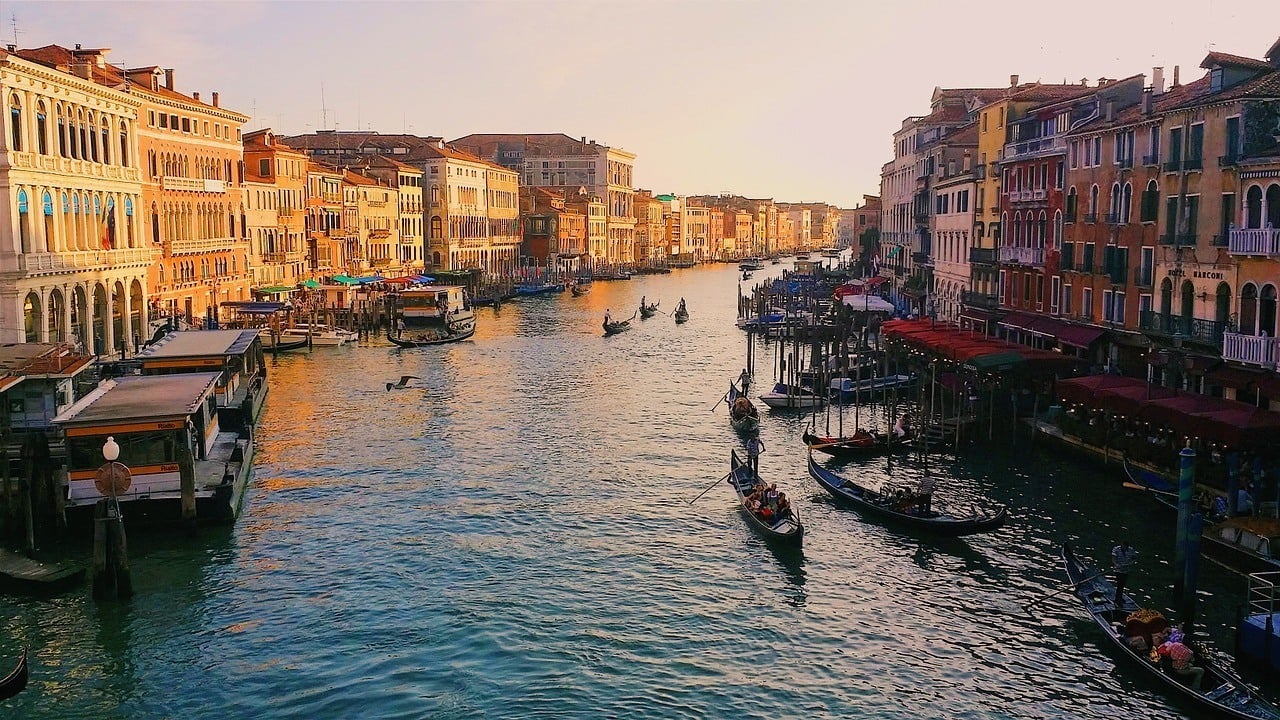
Absolutely! Italy is safe to live in.
It’s the home of the dolce vita – how could it not be safe to live in?
Rome has loads of international organizations (a good place to find work), plus expat communities and a relatively high number of English speakers.
Naples is the big port city of Italy: versatile, lively and with a diverse population and cheaper than Rome. There’s a reputation for crime in Naples , but it’s no worse than any other international city really .
Or if you’re looking for a slower pace of life altogether, head to the island of Sardinia. Good shops, great food, clean air – very high quality of life. Places like Oristano are very walkable. Generally, you’ll be enjoying the Italian lifestyle in Italy.
Late dinners mean things don’t close early, so you can go shopping pretty late if you want.
But you may find it hard at first – people may think you’re a tourist all the time. A good way to not be seen as a tourist is to learn some Italian. In places like Venice, Rome, and Florence, people are beginning to get just a little bit hostile towards tourists. Speaking Italian is going to endear you to people a lot more.
All in all, Italy is safe to live in. The number of expats and digital nomads in Italy is increasing every day.
Just research well the places you want to live in, whether you want a quiet countryside or a bustling city. Get on expat forums, join Facebook groups, learn the lingo and make local friends.
Then, get ready to live in an amazing slice of the Earth’s culture!

A new country, a new contract, a new piece of plastic – booooring. Instead, buy an eSIM!
An eSIM works just like an app: you buy it, you download it, and BOOM! You’re connected the minute you land. It’s that easy.
Is your phone eSIM ready? Read about how e-Sims work or click below to see one of the top eSIM providers on the market and ditch the plastic .
Italy has a decent public healthcare system and you won’t have much trouble finding a doctor. In fact, life expectancy in Italy is really high . It’s 86 for women, 81 for men, on average. That’s not only down to a good lifestyle, but good healthcare too.
You can find healthcare throughout Italy, but it can vary depending on where you are. In rural towns and villages, there won’t be much in the way of top-quality healthcare. And in the Mezzogiorno they’re not amazingly well equipped, we’re not going to lie.
If you’re not feeling good you can always head to the pharmacist, called farmacisti in Italian. They can give you over the counter advice, medication, and will advise you to see a doctor if you need to see one. These close at night and on Sundays; emergency ones open 24/7 do exist, however.
In big cities and larger towns, it won’t be hard to find an English speaking doctor.
The casualty/A&E unit is called Pronto Soccorso (also the place for emergency dental treatment). Call 118 for an ambulance.
Overall, healthcare is good in Italy. Also, Italy has a lot of reciprocal healthcare agreements with many countries around the world, so just check and make sure your country is one of them (or not). But definitely, still, have health insurance.
Did you know that “certified Italian” is only spoken in the center of Italy – around Rome – and that there are, in fact, 34 other languages and dialects that are officially recognized?
Most Italians will comment on how they can’t understand their neighbors and how frustrating it is. A person from Milan would probably have a lot of difficulties when talking to a Sicilian because their dialects are so different. For those backpacking through Italy, this can make things difficult as a lot of the Italian that they’ve learned will become redundant depending on where they are.
There are, of course, certain staples of the Italian language that will always be universal though. Learning a few of them will be better than knowing nothing at all. Below, I have written the pronunciations for a few helpful Italian phrases with English translations.
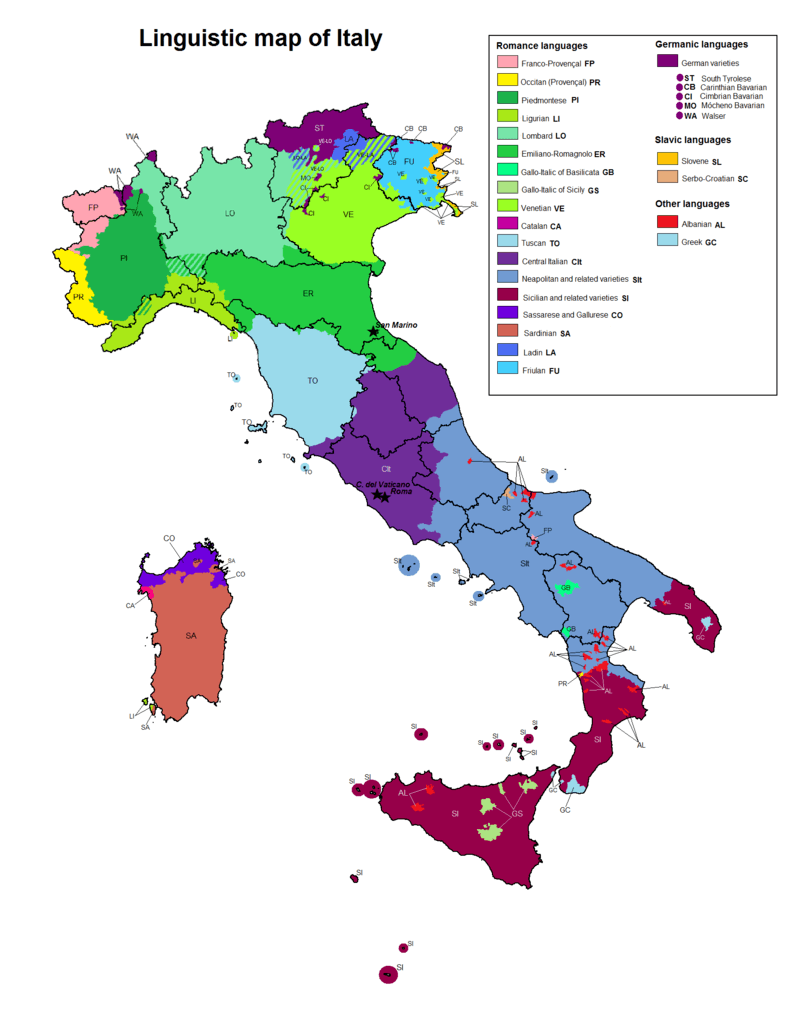
Piacere – nice to meet you
Come va? – how are you?
Mi può aiutare? – can you help me?
Quanto costa? – how much does that cost?
Un caffé, per favore – one coffee, please
Buon Giorno / Buona sera / Buona notte – good morning/ good evening/ goodnight
Mi scusi – excuse me
Nessun sacchetto di plastica – No plastic bag
Nessuna cannuccia per favore – No straw please
Nessuna posate di plastica per favore – No plastic cutlery please
Come ti chiami? – what’s your name?
mi chiamo… – My name is…
Tutto bene – all’s well
Grazie mille – thank you so much
If speaking Italian proves to be too difficult, English is still widely spoken in most of the larger cities and by the majority of the youth. Certain regions that share a border with another European nation will also speak more of that particular country’s language. For example, many people from the Valle d’Aosta region speak French while those from Trentino use a local dialect of German.
Here are some quick answers to common questions about safety in Italy.
What should I avoid in Italy?
Avoid these things in Italy to stay safe: – Be careful at public transport hubs and big stations – Don’t let your belongings out of sight – Avoid being careless when visiting famous sights – Don’t go off-piste skiing if you don’t know what you’re doing
What is the most dangerous part of Italy?
Statistically speaking, Italy’s famous city Milan has the highest crime rate and is, therefore, the most dangerous part of the country. Milan is often known as the capital of theft.
is it safe to live in Italy?
Yes, it is perfectly safe to live in Italy. Healthcare and quality of life are generally very high and the crime rate ranks from low to moderate.
Does Italy have a high crime rate?
Luckily, crime rates in Italy are fairly low. As in most European countries, the biggest safety issue that tourists have to face is petty theft or pickpocketing.
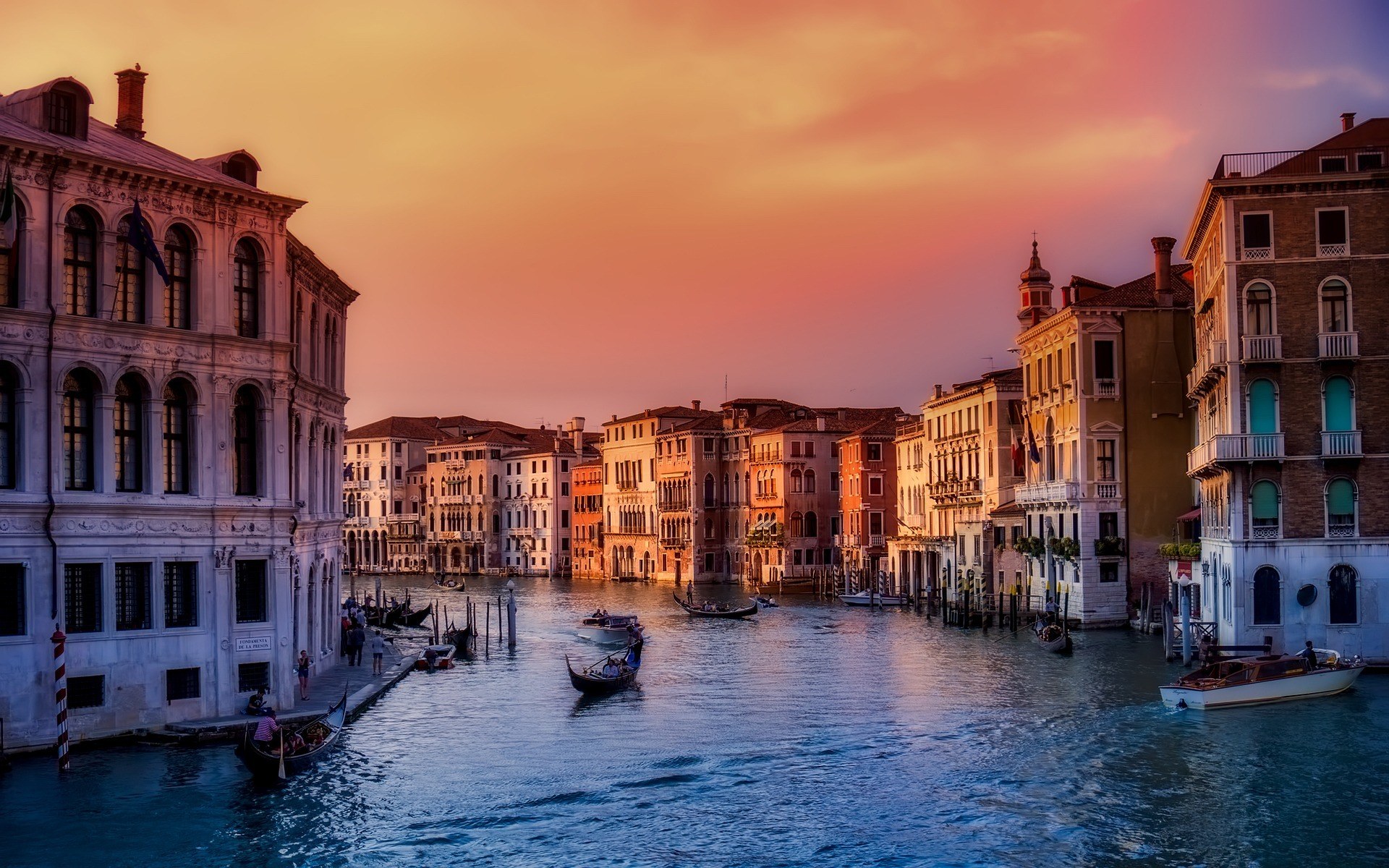
If you’re wondering about how safe Italy is to travel to, we would say don’t worry. It’s absolutely safe, just about the least safe thing about it are the earthquakes and volcanoes. We all know what happened to Pompeii, right? In terms of outright deadliness, safety-wise, seismic activity is the real villain.
That’s not to say there aren’t everyday annoyances that pose more of a threat to your wallet than to your actual health. Petty theft is a real thing here, so we highly recommend dressing down and not flashing your cash around. Anything that could make you less of a target, basically. Be like an unsuspecting tourist and you’re likely to get treated like one – not just by would-be thieves, but people, too.
Tourism is reaching a kind of cliff edge in Italy. Places in Rome, UNESCO World Heritage Sites like Cinque Terre and pretty much all of Venice are feeling the strain and people are getting understandably frustrated. So be considerate! Travel smart by learning some Italian, even if it’s just a bit. And go to the countryside, areas that don’t get tourists. This is the real Italy anyway.
Disclaimer: Safety conditions change all over the world on a daily basis. We do our best to advise but this info may already be out of date. Do your own research. Enjoy your travels!

And for transparency’s sake, please know that some of the links in our content are affiliate links . That means that if you book your accommodation, buy your gear, or sort your insurance through our link, we earn a small commission (at no extra cost to you). That said, we only link to the gear we trust and never recommend services we don’t believe are up to scratch. Again, thank you!

Share or save this post

Leave a Reply Cancel reply
Your email address will not be published. Required fields are marked *
Save my name, email, and website in this browser for the next time I comment.
Notify me of followup comments via e-mail.
Is It Safe to Go on a Cruise?
Is It Safe to Travel to China?
Is It Safe to Go Hiking?
What to Do If You're Stranded Abroad
US, Mexico, and Canada
Australia, New Zealand, and the South Pacific
Central and South America
Africa and the Middle East
Airline Cancellation Policies
Travel Insurance & COVID-19
Policies of Home Exchange Services
How to Cancel a Vacation
Getting Miles Back After Canceling Award Flights
How COVID-19 Could Change Travel
Future of New Zealand Tourism
How Tourism in Italy Will Change
What to Do About Your Current Trips
Visiting a National Park Right Now
Trips That Require Advance Planning
Is It Safe to Travel in the US?
Is It Safe to Travel to Europe?
Is It Safe to Travel to Italy?
:max_bytes(150000):strip_icc():format(webp)/ElizabethHeath-Headshot-horiz-e7525e97616245958bf3d94e8db7f119.png)
Italy was one of the hardest-hit countries in Europe at the beginning of the coronavirus epidemic, and made international headlines not just for the high rates of infection but also the strict lockdown that ensued. After months of strict limits, the government began to ease restrictions throughout the summer, possibly making way for the second wave that hit the country—along with the rest of Europe—in November 2020.
While thousands of travelers have already been forced or encouraged to cancel or reschedule their Italy travel plans, others are looking ahead and wondering: When will it be safe to travel to Italy?
When Will It Be Safe to Return to Italy?
As of December 31, 2020, many tourists from outside of the EU are still banned from entering the European Union, including those from the U.S. However, the EU began to slowly open up borders to nationals from certain countries beginning in October. However, restrictions are rapidly changing and the most up-to-date measures can be found directly through the Italian Ministry of Health .
With cases rising and the uncertainty of what's to come after the winter holidays, travelers are advised to wait before planning a trip to Italy. Even international tourists who are allowed to enter the country are required to sign a declaration promising to self-quarantine for 14 days after arrival, so it's still not an ideal time for a vacation. The Italian government is preparing to start vaccinating residents, meaning that travel restrictions may start to ease throughout the spring of 2021. If all goes well, it's possible that tourism will start to bounce back by that summer, but it's still too soon to tell.
Until more is known about the country's recovery and when you can visit again, keep researching the best places to visit in Italy and planning that dream trip .
Coronavirus in Italy
The first case of COVID-19 in Italy was reported in late January. Soon after, a cluster of cases was reported in the northern Italian region of Lombardy, where Milan is located, and the disease quickly spread, first in the north and then to other regions and neighboring European countries. A strict national lockdown brought the number of cases down to a controllable level by the time summer arrived, and restrictions were slowly lifted but on a region by region basis. Cases started to rise again throughout the fall and by November, a new second wave had hit the country with even more daily cases than in the spring. As of December 31, 2020, Italy had over two million cases and over 70,000 deaths, one of the highest number of cases and highest death rates in the world.
The relatively high death toll is mainly due to Italy's large population of senior citizens. More than 20 percent of Italians are age 65 years and over, and that age group is the most vulnerable to serious illness and death from coronavirus. At first, the government of Italy attempted to contain the virus in a handful of northern regions but when those efforts failed, the entire country was ordered into lockdown in a drastic effort to slow or halt its spread.
Lockdown Restrictions
The nationwide lockdown was announced on March 9, 2020, and was extended until May 3, essentially requiring that Italians stay home at all times. Because the virus can spread so rapidly, even among those who show no symptoms (and therefore don't suspect that they are coronavirus-positive), strict rules were in place to limit person-to-person contact and possible transmission. As of May 4, however, those restrictions were slowly loosened and by the time summer arrived, Italians were allowed to move around and restaurants, bars, and shops were reopened.
After the emergence of the second spike, the Italian government re-instated new lockdown measures on November 4, 2020. The new measures are in effect until at least the end of January 2021, although they aren't quite as extreme as the original lockdown. There is a nation-wide curfew at 10 p.m. and all bars and restaurants have to close by 6 p.m. Specific regions are color-coded as red, orange, or yellow, depending on their number of cases. Red-coded regions have the most restrictive measures and are not allowed to travel outside of their region.
Travel Restrictions and Regulations in Italy
On March 16, the EU (which includes Italy) proposed a ban on all non-essential travel to its member countries for 30 days, and that was later extended to May 15 . As of December 31, 2020, the EU has slowly lifted travel restrictions on a country-by-country basis, although tourists from the U.S. are still not permitted to enter. Under the ban, only EU residents, residents' family members, or essential workers such as healthcare workers, are allowed to enter these countries.
For those who are permitted to enter, there are different entry requirements depending on the country you arrive from , ranging from a written declaration to self-quarantine to a confirmed negative COVID-19 test taken just before your flight. Make sure you know what is required of you, or you could be denied entry into Italy.
U.S. Government Restrictions
On March 11, 2020, the U.S. president announced a ban on travelers entering from Italy and most other European countries with a yet-to-be-determined expiration. Although the ban does not include U.S. citizen/resident travelers returning home, those doing so will have to arrive through one of 13 designated airports for screening and may also be subject to a mandatory 14-day quarantine.
The State Department has Italy under a Level 3 "Reconsider Travel" Advisory , for those who are permitted to enter the country.
World Meters. "Italy Coronavirus: 2,083,689 Cases and 73,604 Deaths." Retrieved December 31, 2020.
Statista. "Italy: share of elderly population 2009-2020." Retrieved December 31, 2020.
Market Watch. "Italy imposes a nationwide curfew, closes all museums and galleries." November 4, 2020. Retrieved December 31, 2020.
The Future of Tourism in New Zealand
Hotels Across the World are Being Repurposed to Help Fight the Pandemic
Is It Safe to Travel in the U.S. Right Now?
These Countries Are Allowing Vaccinated Travelers to Visit
Travel to Europe: A Reopening Timeline, Country by Country
Croatia Bucks the E.U.'s Decision to Ban American Travelers
Travel to Asia: A Reopening Timeline, Country by Country
Timeline of the U.S. Reopening: A State-by-State Guide
Is It Safe in Europe?
Why the EU Travel Ban (Mostly) Doesn't Matter if You're Vaccinated
Where to Go in 2023: The Most Exciting Destinations to Explore This Year
Travel to the Caribbean: A Reopening Timeline, Country by Country
Morocco Reopens Its Borders to Citizens of 67 Countries, Including the U.S.
Everyone's Going to Europe This Summer—But Here's How You Can Beat the Crowds
What Travelers Should Know About the Delta Variant
What you need to know about traveling to Italy right now

Aug 23, 2021 • 6 min read
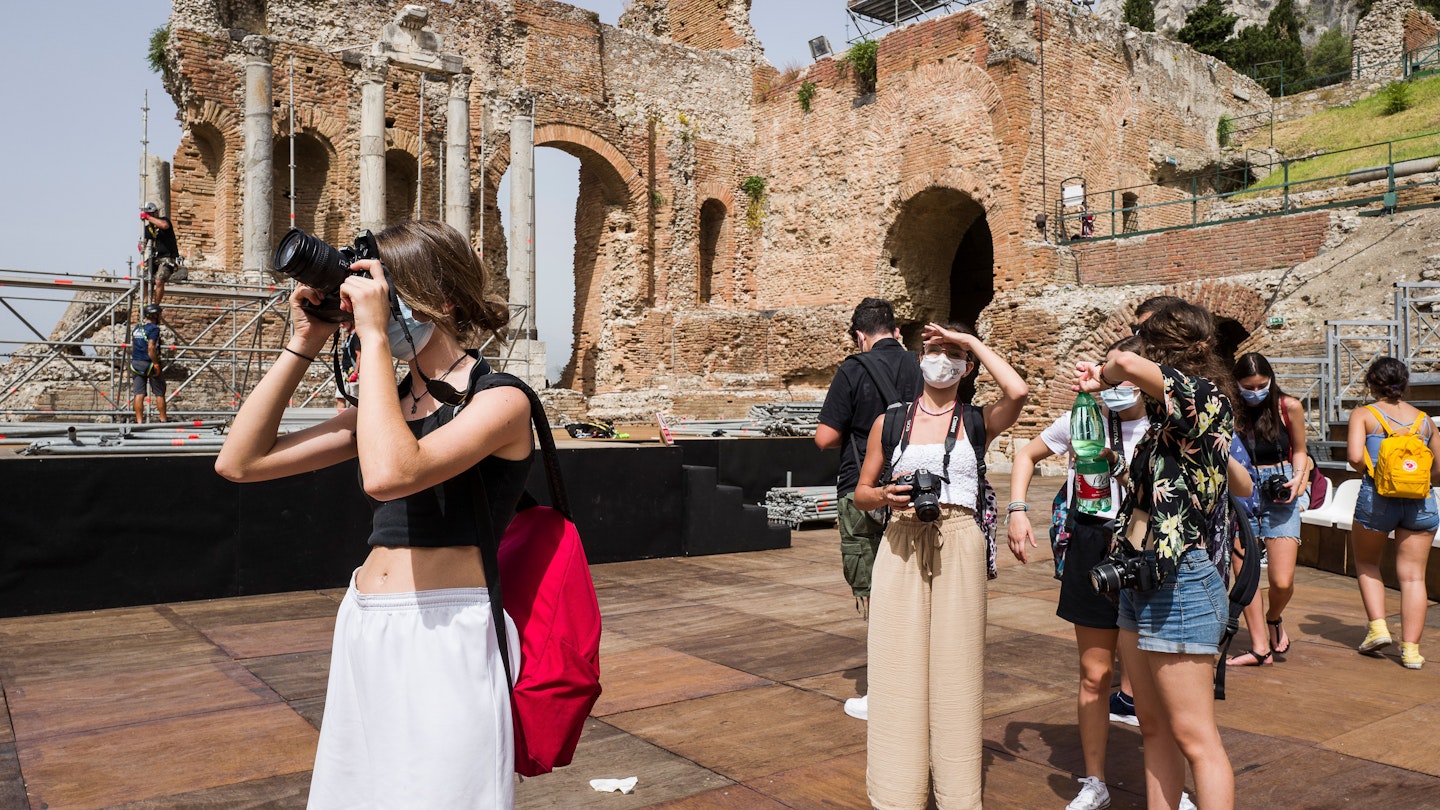
Tourists return to the Teatro Antico in Taormina, Sicily as Italy relaxes border and domestic restrictions © Fabrizio Villa/Getty Images
Italy has gradually relaxed border controls and most restrictions as travelers return to one of the world's most popular destinations. And while there are plenty of new attractions to enjoy, from newly-opened secret tunnels in the Colosseum to recent discoveries in Pompeii , it isn't business as usual. Italy is still in a state of emergency and some pandemic-related restrictions apply, including the requirement of a green pass to enter indoor venues and large events.
With the ongoing threat of the Delta variant, travelers are warned that increased measures could be enforced with little notice. If you're planning a trip to Italy this year, here's what you can expect.
Can I travel to Italy from the EU?
Italy has adopted the EU digital COVID certificate which facilitates the return of free movement across the bloc. It's a digital or paper certificate that indicates the holder meets the conditions for travel: is fully vaccinated (the last dose administered at least 14 days before departure), or has recovered from COVID-19, or holds a negative COVID-19 result from a PCR or antigen test taken within 48 hours of travel.
Read more: Planning your perfect trip to Italy's Amalfi Coast
You will need to present this cert to enter Italy, regardless of where you are traveling from in the EU. That's because Italy does not classify risk areas in accordance with the EU's recommendations and currently no country is classified as low risk. So even if you are coming from an EU country that is classified green (low risk) in the European Center for Disease Prevention and Control’s traffic light system, you are still required to present a digital COVID cert to travel to Italy.
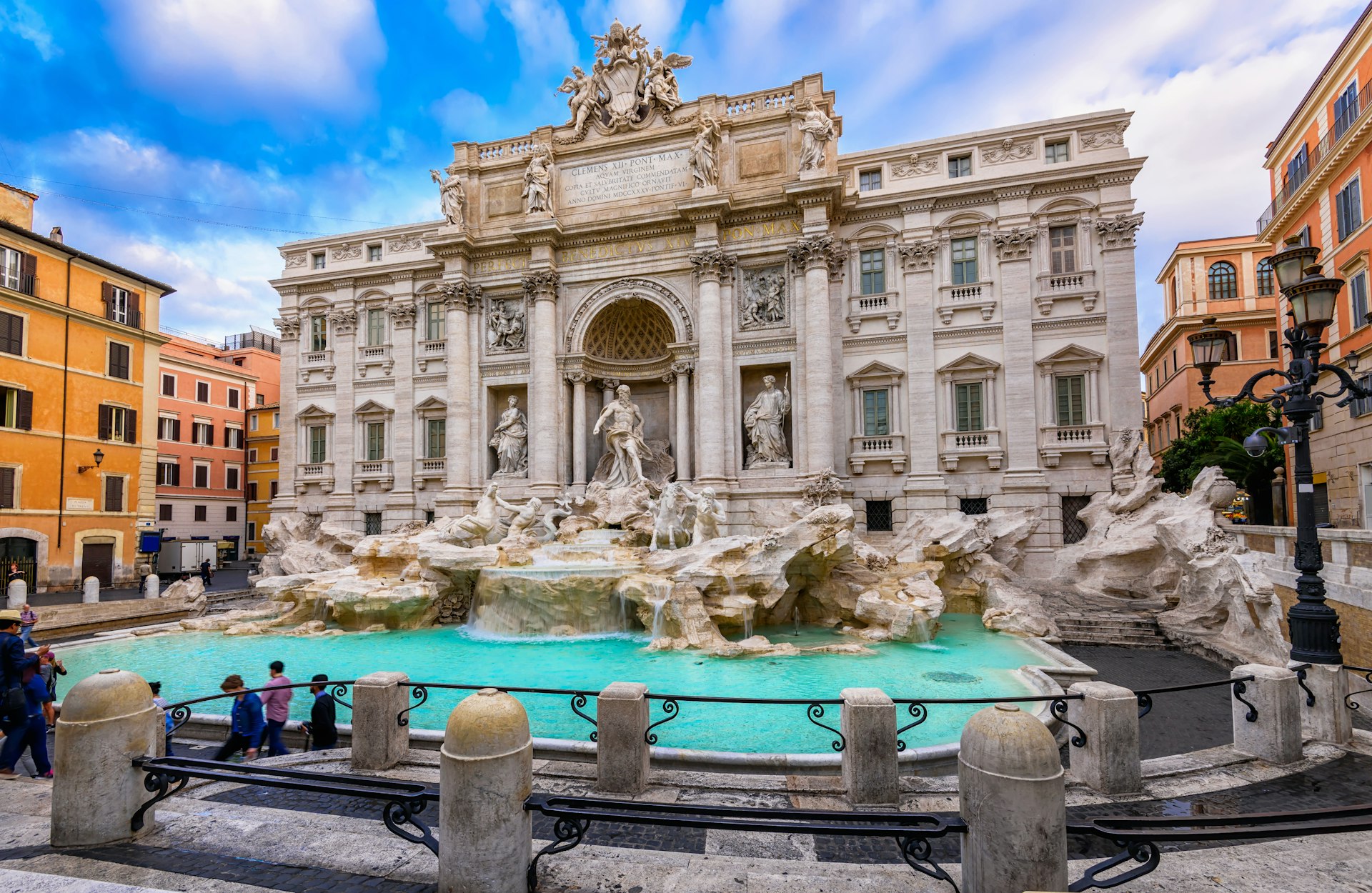
Can I travel to Italy from a non-EU country?
Italy applies border restrictions on travelers depending on the COVID situation in the country they are departing from. Most countries are on the C and D list and quarantine restrictions apply to all of them except for the US, Canada, Japan and Israel . People arriving from those countries are permitted to skip quarantine provided they present proof of vaccination, proof of recovery from COVID-19, or a negative result from a test taken no more than 72 hours before traveling to Italy, using official vaccination or medical documents issued in either of those countries.
Those arriving from the UK will have to undergo a five-day quarantine upon arrival with mandatory testing until at least August 30.
Entry restrictions for individual countries can be found here .
What vaccines does Italy accept?
Italy requires that travelers are fully vaccinated with both doses of an EMA-approved vaccine: Pfizer, Moderna, or AstraZeneca; or with the one-shot Johnson & Johnson vaccine.
Do children need to be vaccinated to enter Italy?
Children under six-years-old are exempt from all vaccine, testing or quarantine requirements in Italy. However, children between the age of six and 18 are required to present a negative COVID-19 test result before arrival.
What else is required?
All arrivals are required to fill in a passenger locator form before arrival, regardless of their COVID status or point of departure.

Do I need a green pass in Italy?
Yes, if you want to enjoy most of Italy's cultural attractions, you'll need a green pass. The pass proves that the holder has been vaccinated, has recovered from COVID-19 or has recently tested negative for the virus. People need to present it to enter indoor spaces such as museums, football stadiums, gyms, theme parks, spas, swimming pools and theaters. It's also required to sit indoors at bars and restaurants; and from September 1, it will be required to board public transport in Italy.
Anyone traveling from another EU country, can present their EU digital COVID cert wherever the green pass is required. People traveling from a Schengen Zone country can present their official health documents too.
The Italian government confirmed that it will accept official COVID documents that were issued in Canada, the US, the UK, Japan and Israel from tourists too in place of a green pass. This was later extended to cover all official vaccination certificates that are compliant with Italian or EU guidelines. In order for it to be accepted in lieu of the green pass, the certificate must be in Italian, English, Spanish or French and contain the following information: type of vaccine (Pfizer, Moderna, J&J or AstraZeneca), date of doses and lot number, as well as the person's name and the name of the medical authority issuing the certificate.However, despite the guidelines, some tourists have reported difficulty with having their certificates accepted at venues.
If you're not vaccinated, you'll need to be tested via a PCR or antigen test within the previous 48 hours.
Read more: Italy has expanded the use of it 'green pass' - here's what travelers need to know
Can I get tested in Italy?
Many countries, including the US, require passengers to present a negative COVID-19 test result before boarding their flight home from an international trip. Fortunately, tests are widely available across Italy in pharmacies, labs and testing centers. Antigen tests cost approximately €20, while PCR tests are generally around €65.
The Red Cross has pop-up testing sites in train stations across Italy , including Roma Termini, Milano Centrale, Venice Santa Lucia and Florence Santa Maria Novella for antigen tests. On-site testing is available at Italy's major airports too, and most offer both antigen and PCR tests but check the website of the airport you are traveling through in advance for details.
Read more: Italy visa requirements
What's open in Italy?
Italy is home to many of the world's greatest works of art, architecture and gastronomy, and has more Unesco World Heritage cultural sites than any other country. Among its popular attractions are Pompeii , where visitors can walk in the footsteps of ancient Romans, and Ravenna , home to glittering Byzantine treasures. The gondolas of Venice take in the famous Rialto Bridge , while Rome is home to St Peter's Basilica, the Vatican Museums and the Colosseum, as well as the iconic Trevi Fountain.
Thankfully, you can experience these sites with relative ease as all Italian regions are now classified as "white zones". Italy classifies its regions into colored areas based on the epidemiological risk; different restrictions apply, depending on the color. White zones are very low-risk zones. Most restrictions have been lifted but social distancing guidelines remain in place in public areas, as do mask requirements in crowded outdoor places, on public transport and in indoor public spaces.
Indoor dining has returned to Italy's restaurants, cafes, bars, ice-cream parlours and pastry shops. Some capacity limits apply but the general rule is no more than six people per table. Anyone who wishes to eat inside will need to show proof of vaccination, recovery from COVID-19 or a recent negative test. Hotels, spas and swimming pools are open, as well as beaches but visitors must keep at least one meter apart when setting up towels, deck chairs or umbrellas.
Museums and cultural attractions are open for walk-ins with capacity limits Monday to Friday and for those with pre-booked tickets on weekends. Cinemas, theaters and concert halls are generally open at 50% capacity. Again, remember to bring your vaccination card if you're planning to visit any museum or cultural attraction in Italy.
For a full breakdown of restrictions per region, see here .
This article was first published on May 5 and updated on August 23, 2021.
You might also like:
Eat Italy: learn about Italian food culture with Lonely Planet's new book 12 essential places to visit in Italy The 10 best beaches in Italy
This article was first published May 2020 and updated August 2021
Explore related stories
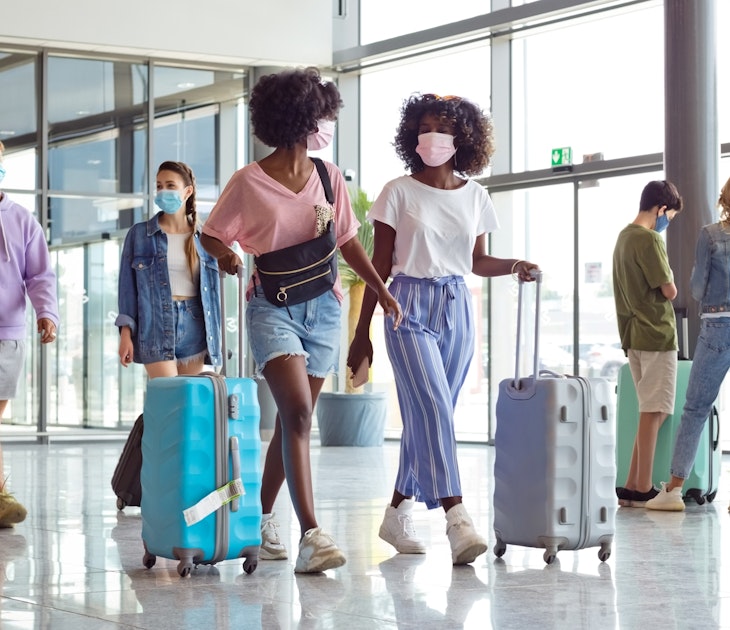
May 16, 2022 • 4 min read
The policy changes on May 16, but there are still many countries who require passengers to keep masks on during flights.

May 10, 2022 • 4 min read

May 4, 2022 • 3 min read

Apr 29, 2022 • 2 min read

Apr 22, 2022 • 3 min read

Mar 31, 2022 • 9 min read
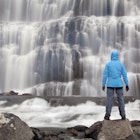
Feb 24, 2022 • 2 min read

Feb 18, 2022 • 3 min read

Feb 3, 2022 • 3 min read

Jan 18, 2022 • 7 min read
- Skip to main content
- Skip to "About this site"
Language selection
Search travel.gc.ca.
Help us to improve our website. Take our survey !
COVID-19: travel health notice for all travellers
Italy travel advice
Latest updates: The Need help? section was updated.
Last updated: April 26, 2024 11:55 ET
On this page
Safety and security, entry and exit requirements, laws and culture, natural disasters and climate, italy - take normal security precautions.
Take normal security precautions in Italy
Back to top
Petty crime
Petty crime such as pickpocketing and purse snatching occurs, and tourists are frequently targeted.
Organized groups of thieves often use distraction techniques and are particularly active:
- at tourist sites and attractions
- in hotels, restaurants and bars
- on public transportation
- at airports and railway stations
While you’re in Italy:
- ensure that your belongings, including your passport, are secure at all times
- don’t keep your passport and other types of ID at the same place and carry a photocopy rather than the original when you’re out
- avoid showing signs of affluence
- avoid carrying large sums of cash or unnecessary valuables
- pay attention to your surroundings, particularly in crowded and tourist areas
- be wary of unsolicited offers or advice from strangers
On the road
The theft of items from vehicles is common, and thieves often target rental cars. They may use distraction techniques or simulate accidents. Thefts can occur at gas stations, highway service areas, and parking lots.
Be especially vigilant when stopped at traffic lights. Thieves on scooters or on foot often snatch bags from passenger seats.
- Keep your windows and doors locked at all times
- Keep your belongings out of reach
- Use secure parking facilities, especially overnight
- Never leave belongings unattended in a vehicle, even in the trunk
On public transportation
Thefts on public transportation and passenger trains are common, particularly on those servicing major tourist sites, main cities and airports. Thieves will often steal your belongings while you’re asleep or distracted and may hassle or crowd you.
Keep your valuables secure and out of sight.
Home break-ins
Home burglaries occur mainly in main cities and coastal areas and sometimes affect holiday rental accommodation.
Whether staying in private or commercial accommodation, make sure you lock windows and doors at night and when you are away.
Spiked food and drinks
Never leave food or drinks unattended or in the care of strangers. Be wary of accepting snacks, beverages, gum or cigarettes from new acquaintances. These items may contain drugs that could put you at risk of sexual assault and robbery.
Victims of crime
If you are a victim of a theft, go to the nearest police station (Carabinieri or Polizia di Stato) to report it. Keep a copy of your report, as you may need it to make a claim to your insurance provider.
It’s possible to file a preliminary complaint online, in Italian, for certain types of minor crimes, such as theft of belongings. This could help speed up the process at the police station.
If you are a victim of sexual assault:
- seek medical assistance, whether or not you appear to have been physically harmed
- contact the local police immediately and ensure they file a report
- inform consular officials at the nearest Canadian embassy or consulate
Useful links
- Online preliminary complaint - Arma dei Carabinieri (in Italian)
- Closest police station - Polizia di Stato, Italy’s national police (in Italian)
- Advice for women travellers
Credit card and ATM fraud
Credit card and ATM fraud occurs.
When using debit or credit cards:
- pay careful attention when others are handling your cards
- use ATMs located in public areas or inside a bank or business
- avoid using card readers with an irregular or unusual feature
- cover the keypad with one hand when entering your PIN
- check for any unauthorized transactions on your account statements
Cybercrime occurs. Criminals may compromise public Wi-Fi networks to steal credit card or personal information.
- Avoid using public Wi-Fi networks
- Avoid making purchases on unencrypted websites
- Be cautious when posting information on social media
- Be particularly vigilant when contacting or meeting individuals known over the internet
Overseas fraud
There is a threat of terrorism in Europe. Terrorists have carried out attacks in several European cities. Terrorist attacks could occur at any time.
Targets could include:
- government buildings, including schools
- places of worship
- airports and other transportation hubs and networks
- public areas such as tourist attractions, restaurants, bars, coffee shops, shopping centres, markets, hotels and other sites frequented by foreigners
Always be aware of your surroundings when in public places. Be particularly vigilant if attending sporting events and during religious holidays and other public celebrations, as terrorists have used such occasions to mount attacks.
The Government of Italy maintains a public alert system on terrorism. Alert level changes are communicated mainly through local media. Enhanced security measures are also deployed in various strategic locations and transport hubs.
Expect an increased presence of police and military forces during holidays and in public places, including tourist locations and major landmarks.
Demonstrations and strikes
Demonstrations and strikes occur regularly, particularly in larger cities and often with little notice.
Even peaceful demonstrations can turn violent at any time. They can also lead to significant disruptions to traffic and public transportation.
- Avoid areas where demonstrations and large gatherings are taking place
- Follow the instructions of local authorities
- Monitor local media for information on ongoing demonstrations
- In case of a transportation strike, contact your provider or tour operator to make alternate arrangements
- Information on planned strike action - Ministry of Infrastructure and Transport (in Italian)
- More about mass gatherings (large-scale events)
Swimming and water activities
Coastal waters can be dangerous. Always take into account warning flags at beaches.
In the fall and winter months, be cautious when walking on the shore, as waves can be unpredictable, breaking further than expected and causing strong undertows.
- Avoid visiting beaches or coastal areas during periods of severe weather warnings
- Look out for signs warning of cliff erosion and falling rocks
- Don’t dive into unknown water, as hidden rocks or shallow depths can cause serious injury or death
- Exercise caution and follow the advice of local authorities
Water safety abroad
Mountain activities
If you intend to go hiking, mountaineering or skiing:
- never do so alone
- consider hiring an experienced guide from a reputable company
- buy travel insurance that includes helicopter rescue and medical evacuation
- ensure that your physical condition is good enough to meet the challenges of your activity
- ensure that you’re properly equipped
- stay informed about weather and other conditions that may pose a hazard
- inform a family member or friend of your itinerary
- know the symptoms of acute altitude sickness, which can be fatal
- obtain detailed information on trekking routes or ski slopes before setting out
- do not venture off marked trails or slopes
Information on avalanche risk - Meteomont, Arma dei Carabinieri
Stray dogs are common in certain areas.
Don’t approach or feed them as they could be aggressive.
Road safety
Road conditions and road safety vary throughout the country.
City streets can be narrow and congested. Signage, traffic lights and road markings may not be visible, especially in the southern areas of the country.
In mountainous areas, roads are often winding and narrow. Weather conditions can make driving conditions dangerous. Avalanches or landslides can occur and block access routes to small isolated towns. In northern Italy, particularly in winter, fog can substantially reduce visibility.
Drivers do not always respect traffic laws. They may drive at excessive speeds and be reckless.
- Be cautious when using pedestrian crossings or where there are no sidewalks; drivers may not see you, especially where street lights are limited
- Pay close attention to motorcycles and electric scooters
- Monitor local news and weather forecast
- Refrain from driving during or immediately after severe storms
- Follow the advice and warnings issued by local authorities
Public transportation
The quality and availability of public transportation vary across the country.
In urban areas, buses can be over capacity during rush hours, impacting your transit time. Metro stations are sometimes closed for maintenance. Strike actions may also affect train service.
The inter-city train system is extensive, well-connected and reliable.
In Italy, drivers start the meter at the point of departure rather than at pick-up. Ride-sharing services are available but may operate differently.
Use only officially licensed taxis from a stand or requested by phone or app.
We do not make assessments on the compliance of foreign domestic airlines with international safety standards.
Information about foreign domestic airlines
Every country or territory decides who can enter or exit through its borders. The Government of Canada cannot intervene on your behalf if you do not meet your destination’s entry or exit requirements.
We have obtained the information on this page from the Italian authorities. It can, however, change at any time.
Verify this information with the Foreign Representatives in Canada .
- Schengen area
Italy is a Schengen area country. Canadian citizens do not need a visa for travel to countries within the Schengen area. However, visa-free travel only applies to stays of up to 90 days in any 180-day period. Stays are cumulative and include visits to any Schengen area country.
If you plan to stay in the Schengen area for a longer period of time, you will need a visa. You must contact the high commission or embassy of the country or countries you are travelling to and obtain the appropriate visa(s) prior to travel.
- Foreign Representatives in Canada
Entry requirements vary depending on the type of passport you use for travel.
Before you travel, check with your transportation company about passport requirements. Its rules on passport validity may be more stringent than the country’s entry rules.
Regular Canadian passport
Your passport must be valid for at least 3 months beyond the date you expect to leave the Schengen area.
Passport for official travel
Different entry rules may apply.
Official travel
Passport with “X” gender identifier
While the Government of Canada issues passports with an “X” gender identifier, it cannot guarantee your entry or transit through other countries. You might face entry restrictions in countries that do not recognize the “X” gender identifier. Before you leave, check with the closest foreign representative for your destination.
Other travel documents
Different entry rules may apply when travelling with a temporary passport or an emergency travel document. Before you leave, check with the closest foreign representative for your destination.
- Foreign Representatives in Canada
- Canadian passports
Tourist visa: not required for stays up to 90 days in any 180-day period Business visa: not required for stays up 90 days Work visa: required Student visa: required
Information for foreign nationals - Polizia di Stato, Italy’s national police
Other entry requirements
Customs officials may ask you to show them a return or onward ticket and proof of sufficient funds to cover your stay.
Declaration of presence
If you plan to spend fewer than 90 days in Italy for visits, business, tourism or study, you don’t need to apply for a residence permit. However, you must report your presence in the country. Commercial accommodations will generally file the declaration on your behalf, but you are responsible for making sure it's done. Request a copy of this record.
If you’re staying in a non-commercial accommodation and:
- arriving from a Schengen country, you must file a declaration of presence with the local police office within 8 days of arrival
- arriving from a non-Schengen country, make sure border officials stamp your passport upon arrival, as this is the equivalent to a declaration of presence
Failure to comply with this regulation could result in expulsion.
Entering Italy - Polizia di Stato, Italy’s national police
Children and travel
Learn more about travelling with children .
Yellow fever
Learn about potential entry requirements related to yellow fever (vaccines section).
Relevant Travel Health Notices
- Global Measles Notice - 13 March, 2024
- COVID-19 and International Travel - 13 March, 2024
This section contains information on possible health risks and restrictions regularly found or ongoing in the destination. Follow this advice to lower your risk of becoming ill while travelling. Not all risks are listed below.
Consult a health care professional or visit a travel health clinic preferably 6 weeks before you travel to get personalized health advice and recommendations.
Routine vaccines
Be sure that your routine vaccinations , as per your province or territory , are up-to-date before travelling, regardless of your destination.
Some of these vaccinations include measles-mumps-rubella (MMR), diphtheria, tetanus, pertussis, polio, varicella (chickenpox), influenza and others.
Pre-travel vaccines and medications
You may be at risk for preventable diseases while travelling in this destination. Talk to a travel health professional about which medications or vaccines may be right for you, based on your destination and itinerary.
Yellow fever is a disease caused by a flavivirus from the bite of an infected mosquito.
Travellers get vaccinated either because it is required to enter a country or because it is recommended for their protection.
- There is no risk of yellow fever in this country.
Country Entry Requirement*
- Proof of vaccination is not required to enter this country.
Recommendation
- Vaccination is not recommended.
* It is important to note that country entry requirements may not reflect your risk of yellow fever at your destination. It is recommended that you contact the nearest diplomatic or consular office of the destination(s) you will be visiting to verify any additional entry requirements.
About Yellow Fever
Yellow Fever Vaccination Centres in Canada
Tick-borne encephalitis (TBE) is a risk in some areas of this destination. It is a viral disease that affects the central nervous system (brain and spinal cord). It is spread to humans by the bite of infected ticks or occasionally when unpasteurized milk products are consumed.
Travellers to areas where TBE is found may be at higher risk during April to November, and the risk is highest for people who hike or camp in forested areas.
Protect yourself from tick bites . The vaccine is not available in Canada. It may be available in the destination you are travelling to.
Measles is a highly contagious viral disease. It can spread quickly from person to person by direct contact and through droplets in the air.
Anyone who is not protected against measles is at risk of being infected with it when travelling internationally.
Regardless of where you are going, talk to a health care professional before travelling to make sure you are fully protected against measles.
Hepatitis B is a risk in every destination. It is a viral liver disease that is easily transmitted from one person to another through exposure to blood and body fluids containing the hepatitis B virus. Travellers who may be exposed to blood or other bodily fluids (e.g., through sexual contact, medical treatment, sharing needles, tattooing, acupuncture or occupational exposure) are at higher risk of getting hepatitis B.
Hepatitis B vaccination is recommended for all travellers. Prevent hepatitis B infection by practicing safe sex, only using new and sterile drug equipment, and only getting tattoos and piercings in settings that follow public health regulations and standards.
Coronavirus disease (COVID-19) is an infectious viral disease. It can spread from person to person by direct contact and through droplets in the air.
It is recommended that all eligible travellers complete a COVID-19 vaccine series along with any additional recommended doses in Canada before travelling. Evidence shows that vaccines are very effective at preventing severe illness, hospitalization and death from COVID-19. While vaccination provides better protection against serious illness, you may still be at risk of infection from the virus that causes COVID-19. Anyone who has not completed a vaccine series is at increased risk of being infected with the virus that causes COVID-19 and is at greater risk for severe disease when travelling internationally.
Before travelling, verify your destination’s COVID-19 vaccination entry/exit requirements. Regardless of where you are going, talk to a health care professional before travelling to make sure you are adequately protected against COVID-19.
The best way to protect yourself from seasonal influenza (flu) is to get vaccinated every year. Get the flu shot at least 2 weeks before travelling.
The flu occurs worldwide.
- In the Northern Hemisphere, the flu season usually runs from November to April.
- In the Southern Hemisphere, the flu season usually runs between April and October.
- In the tropics, there is flu activity year round.
The flu vaccine available in one hemisphere may only offer partial protection against the flu in the other hemisphere.
The flu virus spreads from person to person when they cough or sneeze or by touching objects and surfaces that have been contaminated with the virus. Clean your hands often and wear a mask if you have a fever or respiratory symptoms.
In this destination, rabies may be present in some wildlife species, including bats. Rabies is a deadly disease that spreads to humans primarily through bites or scratches from an infected animal.
If you are bitten or scratched by an animal while travelling, immediately wash the wound with soap and clean water and see a health care professional.
Before travel, discuss rabies vaccination with a health care professional. It may be recommended for travellers who will be working directly with wildlife.
Safe food and water precautions
Many illnesses can be caused by eating food or drinking beverages contaminated by bacteria, parasites, toxins, or viruses, or by swimming or bathing in contaminated water.
- Learn more about food and water precautions to take to avoid getting sick by visiting our eat and drink safely abroad page. Remember: Boil it, cook it, peel it, or leave it!
- Avoid getting water into your eyes, mouth or nose when swimming or participating in activities in freshwater (streams, canals, lakes), particularly after flooding or heavy rain. Water may look clean but could still be polluted or contaminated.
- Avoid inhaling or swallowing water while bathing, showering, or swimming in pools or hot tubs.
Insect bite prevention
Many diseases are spread by the bites of infected insects such as mosquitoes, ticks, fleas or flies. When travelling to areas where infected insects may be present:
- Use insect repellent (bug spray) on exposed skin
- Cover up with light-coloured, loose clothes made of tightly woven materials such as nylon or polyester
- Minimize exposure to insects
- Use mosquito netting when sleeping outdoors or in buildings that are not fully enclosed
To learn more about how you can reduce your risk of infection and disease caused by bites, both at home and abroad, visit our insect bite prevention page.
Find out what types of insects are present where you’re travelling, when they’re most active, and the symptoms of the diseases they spread.
- In this country, risk of dengue is sporadic. It is a viral disease spread to humans by mosquito bites.
- Dengue can cause flu-like symptoms. In some cases, it can lead to severe dengue, which can be fatal.
- The level of risk of dengue changes seasonally, and varies from year to year. The level of risk also varies between regions in a country and can depend on the elevation in the region.
- Mosquitoes carrying dengue typically bite during the daytime, particularly around sunrise and sunset.
- Protect yourself from mosquito bites . There is no vaccine or medication that protects against dengue fever.
Animal precautions
Some infections, such as rabies and influenza, can be shared between humans and animals. Certain types of activities may increase your chance of contact with animals, such as travelling in rural or forested areas, camping, hiking, and visiting wet markets (places where live animals are slaughtered and sold) or caves.
Travellers are cautioned to avoid contact with animals, including dogs, livestock (pigs, cows), monkeys, snakes, rodents, birds, and bats, and to avoid eating undercooked wild game.
Closely supervise children, as they are more likely to come in contact with animals.
Person-to-person infections
Stay home if you’re sick and practise proper cough and sneeze etiquette , which includes coughing or sneezing into a tissue or the bend of your arm, not your hand. Reduce your risk of colds, the flu and other illnesses by:
- washing your hands often
- avoiding or limiting the amount of time spent in closed spaces, crowded places, or at large-scale events (concerts, sporting events, rallies)
- avoiding close physical contact with people who may be showing symptoms of illness
Sexually transmitted infections (STIs) , HIV , and mpox are spread through blood and bodily fluids; use condoms, practise safe sex, and limit your number of sexual partners. Check with your local public health authority pre-travel to determine your eligibility for mpox vaccine.
Medical services and facilities
Good health care is available throughout the country. However, hospital services may be limited in rural areas and medical staff may not be able to communicate in English or French.
Medical treatment and emergency room visits are free of charge but only for life-threatening emergencies, as determined by the treating physician. Hospitals charge upfront for any convalescence or follow-up care.
There are also numerous private clinics and hospitals that cater to foreign travellers.
Make sure you get travel insurance that includes coverage for medical evacuation and hospital stays.
Travel health and safety
Keep in Mind...
The decision to travel is the sole responsibility of the traveller. The traveller is also responsible for his or her own personal safety.
Be prepared. Do not expect medical services to be the same as in Canada. Pack a travel health kit , especially if you will be travelling away from major city centres.
You must abide by local laws.
Learn about what you should do and how we can help if you are arrested or detained abroad .
Transfer to a Canadian prison
Canada and Italy are signatories to the Convention on the Transfer of Sentenced Persons. This enables a Canadian imprisoned in Italy to request a transfer to a Canadian prison to complete a sentence. The transfer requires the agreement of both Canadian and Italy authorities.
This process can take a long time, and there is no guarantee that the transfer will be approved by either or both sides.
Penalties for possession, use or trafficking of illegal drugs are severe. Convicted offenders can expect jail sentences or heavy fines.
Drugs, alcohol and travel
Public behaviour
Certain municipalities, particularly those with a high number of visitors, such as Rome, Florence and Venice, have adopted strict public conduct rules. Certain behaviours are illegal and may include:
- sitting, eating or drinking on a monument or an archaeological landmark
- bathing in fountains or canals
- walking in an urban setting in swimwear or without a shirt/T-shirt
- feeding the pigeons
- putting locks on bridges or monuments
- dropping litter or using single-use plastic
Comply with public notices about conduct, which are usually found in and around tourist areas in major cities. You may be fined if you fail to do so.
Counterfeit merchandise
Buying counterfeit merchandise, such as sunglasses or purses, is illegal. You may receive heavy fines if you’re caught buying counterfeit merchandise.
Natural objects and flora
Removing pebbles, shells, or sand from the beaches in Sardinia and other coastal regions is prohibited.
In mountainous areas, it’s illegal to cut certain types of endangered flowers.
Avoid removing natural objects and flora from their natural setting. You could be fined if you do.
Photography
Photography of military installations and critical infrastructure is regulated.
Request permission from local authorities before taking photographs of such installations.
Recreational and commercial flying of drones is regulated.
You must register your drone to use it across the European Union. If you don’t comply, you may be fined and your drone confiscated.
- Civil drones - European Union Aviation Safety Agency
- Use of drones - Italian Civil Aviation Authority (in Italian)
Identification
Authorities may request to see your ID at any time.
- Carry valid identification or a photocopy of it at all times
- Keep a photocopy of your passport in case it’s lost or seized
Hotels and other commercial accommodation providers must provide the Italian authorities with personal details on their guests. As such, you’ll have to present a passport upon check-in.
Wait at the reception until the hotel staff has taken the required from your passport.
Dual citizenship
Dual citizenship is legally recognized in Italy.
If you are a Canadian citizen, but also a citizen of Italy, our ability to offer you consular services may be limited while you're there. You may also be subject to different entry/exit requirements .
Travellers with dual citizenship
International Child Abduction
The Hague Convention on the Civil Aspects of International Child Abduction is an international treaty. It can help parents with the return of children who have been removed to or retained in certain countries in violation of custody rights. The convention applies between Canada and Italy.
If your child was wrongfully taken to, or is being held in Italy, and if the applicable conditions are met, you may apply for the return of your child to the Italian court.
If you are in this situation:
- act as quickly as you can
- contact the Central Authority for your province or territory of residence for information on starting an application under The Hague Convention
- consult a lawyer in Canada and in Italy to explore all the legal options for the return of your child
- report the situation to the nearest Canadian government office abroad or to the Vulnerable Children’s Consular Unit at Global Affairs Canada by calling the Emergency Watch and Response Centre
If your child was removed from a country other than Canada, consult a lawyer to determine if The Hague Convention applies.
Be aware that Canadian consular officials cannot interfere in private legal matters or in another country’s judicial affairs.
- List of Canadian Central Authorities for the Hague Convention
- International Child Abduction: A Guidebook for Left-Behind Parents
- Travelling with children
- The Hague Convention - Hague Conference on Private International Law
- Canadian embassies and consulates by destination
- Emergency Watch and Response Centre
You may drive for up to one year with a valid Canadian driver’s licence and an international driving permit or a certified translation of your Canadian licence.
You must also have an international car insurance plan.
If driving a foreign car, an adhesive sticker indicating country of origin must be displayed on the back of the car. It’s illegal to drive a vehicle registered abroad for more than 60 days. If you plan to stay in Italy for more than 60 days, you must obtain Italian plates.
Vehicles must be equipped with safety equipment, including a warning triangle and reflective jacket.
Local authorities may request immediate cash payment for minor traffic violations.
Limited traffic zones and low-emission zones
Historic centres of many Italian cities have restricted traffic zones marked as ZTL, which stands for “Zona Traffico Limitato”, or low-emission zones, to reduce air pollution.
You need a special permit to access limited traffic zones. This permit is usually issued to residents. To be granted access to a low-emission zone, your car must meet certain environmental standards. Authorities may use cameras to record the licence plate of vehicles that violate these restrictions.
If you enter these zones without a permit, you could be fined. If your vehicle is rented, the rental agency could receive the fine and provide your contact details to the local authorities.
Some municipalities use the services of a private company to collect the fines abroad. You could receive traffic tickets by mail several months after returning to Canada.
- Pay close attention to street signage
- Obtain instructions from your hotel on how to access it by vehicle if it’s located in a ZTL
Seasonal and regional regulations
Rules on the mandatory use of snow tires or snow chains differ regionally. Pay attention to road signage in mountainous regions or other parts of the country prone to snow.
Certain islands restrict or prohibit the entry and use of vehicles belonging to non-residents during the high tourism season and holiday season. These include:
- the Aeolian Islands (Alicudi, Filicudi, Lipari, Panarea, Salina, Stromboli, Vulcano)
- the Aegadian Islands (Favignana)
- the Campanian Archipelago (Capri, Ischia, Procida)
- the Pelagie Islands (Linosa)
- the Tuscan Archipelago (Giannutri, Giglio)
Other islands could enforce similar regulations. Confirm before travelling.
On route 163 of the Amalfi Coast, between Positano and Vietri sul Mare, it’s prohibited to use campervans or large recreational vehicles.
- Driving in Italy - European Commission
- International Driving Permit
You must purchase bus, metro and tram tickets in advance at kiosks in stations or at tobacco shops and validate them at machines located on board or in the station.
If you don’t validate your ticket, you may receive a fine requiring immediate payment.
The currency of Italy is the euro (EUR).
Payment in cash is restricted to transactions under €1000.
If you are carrying €10,000 or more, or the equivalent in other currencies, you must make a declaration to customs when you enter or leave the European Union. It includes sums in:
- banknotes and coins
- bearer negotiable instruments such as cheques, travellers’ cheques, promissory notes and money orders
- bonds, shares
- gold coins with a gold content of at least 90 %
- gold bars, nuggets or clumps with a gold content of at least 99.5 %
- any other convertible asset
This does not apply if you are travelling within the European Union or in transit to a non-EU country.
EU cash controls - European Commission
Forest and maquis fires often occur during the summer months, particularly in Sicily, Calabria and Sardinia.
The air quality in areas near active fires may deteriorate due to heavy smoke.
In case of a major fire:
- stay away from the affected area, particularly if you suffer from respiratory ailments
- follow the instructions of local emergency services personnel, including evacuation orders
- monitor local media for up-to-date information on the situation
Storms and flooding
In fall and winter, strong rainfall and winds may cause landslides and flash flooding, resulting in significant damage in coastal regions and certain cities such as:
- Campania (Amalfi Coast)
- Liguria (Cinque Terre)
The Italian Civil Protection Department publishes weather alerts on its website.
- Monitor local news and weather reports regularly
- Follow the instructions of local authorities, including evacuation orders
Latest alerts - Italian Civil Protection Department
Venice is subject to tidal flooding (acqua alta), particularly during fall and spring. During episodes of severe flooding, some streets and squares become impassable, and certain businesses and landmarks may temporarily suspend their activities. Local authorities typically install raised pedestrian platforms to facilitate crossing in strategic locations.
The city of Venice warns citizens and tourists of episodes of high tide through a system of acoustic alerts.
In case of high tide:
- follow the instructions of local authorities
- contact your hotel, travel agent or tour operator to determine if the situation will disrupt your travel arrangements
- Tidal forecast - City of Venice (in Italian)
- Interpreting tidal forecast - City of Venice
- @ICPSMVenezia - Tide Forecasting and Reporting Centre (in Italian)
In mountainous areas, avalanches present a risk. They can make roads impassable and cause power disruptions. These conditions can affect access to isolated areas, including tourist resorts, and limit the ability of emergency services to respond.
If you plan on skiing or mountaineering:
- stay informed of weather and safety conditions
Seismic activity
Italy is located in an active seismic zone. Even minor earthquakes can cause significant damage. Volcano eruptions occur.
Mount Etna is Europe’s most active volcano. Periods of high activity can bring significant ash fall, earthquakes and emission of harmful gases.
The Stromboli and Vulcano islands are active volcanoes. Eruptions, ash fall and lava flow occur regularly.
Mount Vesuvius and the Phlegraean Fields in the Naples area are active volcanoes. They are both located near densely populated areas and are continually monitored by the local authorities.
There are several other dormant volcanoes throughout the country.
If you’re travelling near an active volcano or are practising volcano tourism:
- closely monitor volcanic activity levels through local media and official sources
- ensure that you’re well informed about conditions that may pose a hazard
- follow the advice of local authorities
- Earthquakes - What to Do?
- Information on active volcanoes - Italian national institute of Geophysics and Volcanology (in Italian)
- Information on seismic activity in Italy - Italian Civil Protection Department
Local services
Dial 112 for emergency assistance.
Consular assistance
Albania, Malta, San Marino
For emergency consular assistance, call the Embassy of Canada in Rome and follow the instructions. At any time, you may also contact the Emergency Watch and Response Centre in Ottawa.
The decision to travel is your choice and you are responsible for your personal safety abroad. We take the safety and security of Canadians abroad very seriously and provide credible and timely information in our Travel Advice to enable you to make well-informed decisions regarding your travel abroad.
The content on this page is provided for information only. While we make every effort to give you correct information, it is provided on an "as is" basis without warranty of any kind, expressed or implied. The Government of Canada does not assume responsibility and will not be liable for any damages in connection to the information provided.
If you need consular assistance while abroad, we will make every effort to help you. However, there may be constraints that will limit the ability of the Government of Canada to provide services.
Learn more about consular services .
Risk Levels
take normal security precautions.
Take similar precautions to those you would take in Canada.
Exercise a high degree of caution
There are certain safety and security concerns or the situation could change quickly. Be very cautious at all times, monitor local media and follow the instructions of local authorities.
IMPORTANT: The two levels below are official Government of Canada Travel Advisories and are issued when the safety and security of Canadians travelling or living in the country or region may be at risk.
Avoid non-essential travel
Your safety and security could be at risk. You should think about your need to travel to this country, territory or region based on family or business requirements, knowledge of or familiarity with the region, and other factors. If you are already there, think about whether you really need to be there. If you do not need to be there, you should think about leaving.
Avoid all travel
You should not travel to this country, territory or region. Your personal safety and security are at great risk. If you are already there, you should think about leaving if it is safe to do so.
We’re sorry, this site is currently experiencing technical difficulties. Please try again in a few moments. Exception: request blocked
- English (EN)
- Español (ES)
- Português (BR)
Is Italy Safe? Crime Rates & Safety Report
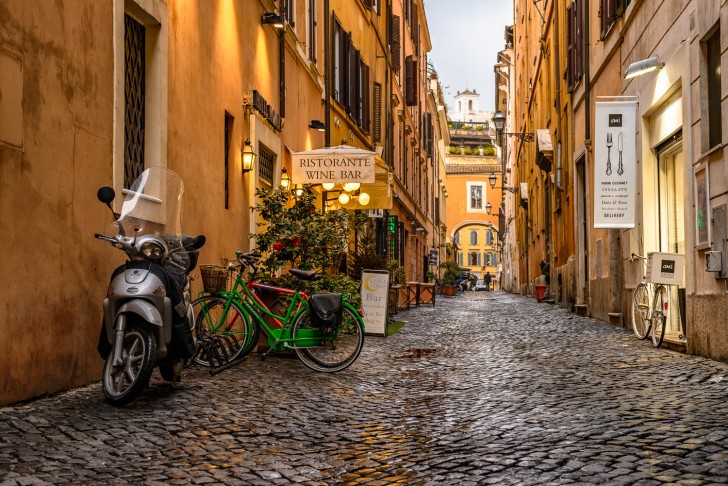
- Italy : Safety by City
- Vatican City
Italy is a country situated in southern Europe, and it is considered to be the cradle of Western culture.
Famous for its food, its culture, and its gorgeous language, it is one of the most visited countries in Europe because it is also where the greatest number of UNESCO World Heritage Sites lie.
You can find monuments and pieces of fine art in every corner of this beautiful country.
From Venice’s gondolas, through Florence’s museums all the way to its bright blue coastline, Italy is the country that keeps on giving.
And while it is considered a very safe country precisely because of the number of tourists, there are some cities and areas that should be avoided.
However, the most dangerous thing likely to happen is pickpocketing near tourist destinations and landmarks, so using common precaution measures should suffice.
- Warnings & Dangers in Italy
OVERALL RISK: LOW
Italy is ranked 34th on the list of world's safest countries, and since it's filled with tourists all the time, you should feel safe traveling here.
TRANSPORT & TAXIS RISK: LOW
Public transportation and taxis are normally safe in Italy, so there is no need to avoid them.
PICKPOCKETS RISK: HIGH
Since Italy is a very attractive and popular tourist destination, there is, naturally, a high risk of pickpocketing. You should keep your valuables in a safe place, make sure nothing of value is in your back pockets, and never keep all your money in the same place.
NATURAL DISASTERS RISK: MEDIUM
Some of the worst natural disasters that could strike Italy are avalanches, though it is somewhat improbable they will.White Friday is the name given to the day when one of the worst avalanches in Italian history happened, during World War I, killing 270 people.
MUGGING RISK: LOW
Italy is relatively safe when it comes to mugging and kidnapping, and such cases rarely happen, even more so to tourists, but do pay attention to your surroundings.
TERRORISM RISK: MEDIUM
It is best to stay alert and aware of your surroundings in Italy, since its neighbors, France and Belgium, have been victims of terrorist attacks. However, Italy hasn't suffered from such occurrences.
SCAMS RISK: HIGH
When a country is a top tourist destination, you should expect people trying to take advantage of it. This rule applies to Italy too, where scammers will likely try to take advantage of tourists and rip them off whenever they can, mostly in large, popular cities and landmark areas. Be on the lookout for anyone trying to distract you, help you with your luggage or groups of people acting strange.
WOMEN TRAVELERS RISK: LOW
Italy, like other popular European destinations, is very safe for women travelers.
- So... How Safe Is Italy Really?
Just like all popular European destinations, Italy is a safe country.
Violent crime is rarely reported and tourists are not likely to have any incidents involving anything more than petty crime.
Pickpocketing is the most prominent form of crime that represents a threat for tourists, especially since pickpockets often work in teams or are in some sort of a deal with the street vendors.
A similar thing happens with beggars – they work in organizations and because of that begging is pretty common in Italy, like in every larger capital, but tourists are unlikely to experience aggressive beggars.
As for terrorism, Italy’s neighbors (France and Belgium) have experienced it and because of that Italy has increased security in almost every larger city, in case of such an occurrence.
Be especially cautious in public transportation or crowded places such as train stations, bus stations, restaurants or airports, and tourist landmarks because this is where the muggers might try and snatch your bag or steal your valuables.
Mugging and bag snatching is a serious problem in Italy, and you should be aware of your surroundings at all times because they might try distraction as a tactic to steal from you.
Take the usual precaution measures like you would when traveling to any other country (do not walk alone at night, leave your valuables unattended in plain sight or carry all your money in one place, easily reachable to potential muggers) and your trip will most probably go smoothly.
- How Does Italy Compare?
- Useful Information
Visa is not required for any stays shorter than 90 days, and members of the EU (Schengen) can stay in Italy for as long as they like. Be sure that your passport is valid for at least six months from your planned date of return to the country you're visiting. However, if you are not sure about your visa status, visit www.doyouneedvisa.com which will let you know whether or not you need a visa based on your nationality and the country you want to visit.
Currency in Italy is the euro, like in most popular European destinations. Although it is cheaper than other European countries, sightseeing and visiting all the remarkable landmarks can add up to a high budget. Take into account that you'll need about 70€ per day, including accommodation.
The weather in Italy is warm and dry; it is absolutely gorgeous in the summer, with a Mediterranean climate calling to tourists all June through September, which is the time when it is best to visit Italy, although you can visit the big cities all year long, and still be amazed.
The busiest airports are in Italy's capital Rome (Leonardo da Vinci International Airport), Milan (Malpensa International Airport, Linate Airport, and Bergamo Orio Al Serio), Naples (Naples International Airport), Bologna (Bologna Guglielmo Marconi Airport), Pisa (Pisa International Airport) and Venice (Venice Marco Polo Airport).
Travel Insurance
Just like anywhere else, we recommend getting travel insurance when traveling to Italy, since it covers not only the costs of medical problems but also theft and loss of valuables.
Italy Weather Averages (Temperatures)
- Average High/Low Temperature
Italy - Safety by City
Explore italy.
- 13 Cheapest Places to Live in Italy
- Are There Snakes in Italy? Should You Be Worried?
- 10 Best Beaches In Italy
- 10 Most Dangerous Cities In Italy
- 10 Best Zoos & Aquariums in Italy
- 4 Cities You Should Explore in Italy
- 10 Most Beautiful Castles in Italy
- Are There Sharks in Italy?
- 10 Best Flea Markets in Italy
- 10 Pros and Cons of Living in Italy
- 10 Safest Cities in Italy
- The Top Hostels in Italy
- Medical Tourism in Italy
- The Top 7 Airbnb Rentals in Italy
- Best Places to See in Italy Without Breaking Bank (on a Budget)
- Top 6 Dishes From the Italian South
- Taking a Trip to Aviano: What to Do & Where to Go
- Where to Next?
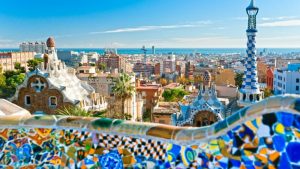
27 Reviews on Italy
Taxis will try to cheat you.
The site needs to be updated regarding taxi scams. I visited in 2017 and went to Florence, Rome, Naples and Sorrento. Out of about 20 taxis I took, only about 2 were honest. The vast majority tried to cheat me either by overcharging; speeding away without giving change; offering insufficient change; or taking an excessively long route to my destination. The drivers were never aggressive but I had to call the police twice – I always got my money before the police showed up.
If you use a taxi in an Italian city, expect to be cheated. Insist on a meter, establish the cost before setting off, and pay while you are still inside the taxi so the driver cannot speed away. When you end up getting cheated, make efforts to call the police and you will get your money.
“It is best to stay alert and aware of your surroundings in Italy, since its neighbors, France and Belgium, have been victims of terrorist attacks.” BELGIUM?? NEIGHBOR OF ITALY?? LOOK AT THE MAP, MAN!
Italy safe country
Who wrote this article has never been in Italy. This is a safe country 100% as in all the countries of the world it is good not to leave bags unattended (not the Italians to steal)
Not totally agree
Italy is not so safe. Rapes in Milan and Rome are getting quite common, and recently near Como there was an armed robbery in a house with family inside.
Not safe like other countries.
100% of security in Italy, is not fair. Or you are in other century or perhaps an italian.
Great country, very historic
My fiance and I went to Italy recently and both really loved it. It is one of the most beautiful places and culturally rich countries we have been to in some time. We are already planning to go back. I never once felt uneasy or unsafe. I loved the food too!
Italy is not a safe country
Ur dumb Syrian dude
Are u Syrian ur dumb
YOU ARE A HIGHLY IRRESPONSIBLE AND TOTALLY UNRELIABLE BUNCH OF IDIOTS
HOW DARE YOU BE SO PATHETIC AND IRRESPONSIBLE ??
What? Who is irresponsible?
Fantastic country
I love southern italy better climate lovely people a great atmosphere. I have been 3x in 18 months .when the covid is under control I would reccomend going .serrento is a beautiful place. God bless italy now!
SOUTH ITALY = MAFIA
If you haven’t already realised no hate but SOUTH ITALY = MAFIA. I have heard that north Italy is definitely more safe, like Milan and places.
You heard it wrong
@Nick WIlson
“north Italy is definitely more safe”
Not really. Just take a trip to the Duomo or in Venice and tell me.
Italians are too busy to acknowledge the crime ongoing in OUR country due to ITALIANS and the people of other countries, which prospers thanks to ITALIANS.
The mafia isn’t going to bother with tourists. Been to southern Italy many times and it’s totally safe, beautiful and less expensive than the north. The people are warm and friendly.
Mafia is hidden to tourists
corona thats all I have to say
well dont go there unless you want corona especially in the northern parts of Italy
Agreed. The Southern part of Italy, where its nice and warm -Palermo, Sicily, no problems, no Corona.
I love that country, very beautiful, delicious food, a lot of places to vistit. And I felt safe there
Compare to other countries its safe
When in Italy don’t go near other foreigners stick staying with Italians.
I visited Italy with my family in 2004 and we were fearful of our safety, especially after 6pm. We witnessed some fights in restaurants and groups of people were hurt.
Don't get scammed
In 2018 my family and friends went to Italy to enjoy the history they have.
Very beautiful place to visit never felt unsafe where we were but had a bad experience with two taxi drivers that we were taking after visiting the Trevi fountain. We were looking for a taxi out on the street near the fountain, so half of us went on one taxi and the other half in the other taxi which was parked right behind the first one we took.
We asked how much would they charge to go to the hotel that was no more than 15 minutes away in the car. The taxi driver said $20 per taxi. We agreed. What was strange to me is he was asking questions about how long we had been there and from where did we come.
It seemed kind of odd since they hardly talk. Well once we got to the hotel I reached into my wallet and got the $20 Euros my wife had given me, so as I was about to leave the taxi I handed the $20 to the driver plus tip and as I started to turn and walk out the driver said, excuse me you gave me a $10 so in my mind, I swear I gave him a $20, but what I did notice as I turned as he did a quick hand movement but did not think much of it. I said hold on went to the back taxi to ask my wife what she had given me and she said hold on.
So I did. She was having the same issue but didn’t know till I asked her for another $20 and I came back paid the driver again, and as soon as I paid they rush off. We talk about it and find out she had gone through the same issue. We both got scammed by two white taxis waiting by the streets near Trevi fountains.
It’s recommended if you are getting a taxi to go and ask in a restaurant or store to call for one so you won’t be scammed as we did. Hope this helps I usually don’t write comments, but hope it helps anyone traveling to Italy. One more thing. Before paying drivers to count out the money in front of them and your family or friends.
A 10 stars-country with so much to visit and explore!
Italy is one of the most beautiful countries in the world, home of many art masterpieces, wonderful landscapes and a big piece of world history. It’s a place where you can find pretty much anything and everything you’d ever want to see, visit or experience. Italy has it all. Is it a super safe place? No, because of its many tourists, this of course attracts a lot of pickpockets and thieves so you need to be careful at all times.
You risk getting your goods stolen on the street even in day time (they go for your phones or anything they can get in a hurry). You need to pay attention to your surroundings and to shady people approaching you for sweet deals which are scams or just a diversion so someone else can steal from you (your watch, wallet, phone, bags, etc). Be very careful in crowded places where pickpockets like to hang out as it’s harder to feel when someone has their hands in your pockets.
As for what to visit, where do I even start? I have been to Italy 8 or 9 times already and I had the chance to visit most of the big attractions but I would need years to visit everything I find interesting and exciting in this country. I saw the imposing Colosseum (even now after all this time) and took a hundred pictures outside it and in it. It’s amazing how well this has stood the test of time.
Then how about the Florence Duomo Santa Maria del Fiore. Such an exquisite cathedral, that makes you feel like you are in another time and age. The dome is one of the most beautiful I’ve seen, ever. Then there’s Pompeii, Mount Vesuvius, the leaning tower of Pisa, Lake Como (how beautiful this place is, such serenity can be found here), the Amalfi coast, Cinque Terre, Vatican City, St. Mark’s Basilica, the Pantheon. And the list can go on and on and on. Like I said, you’d need years to explore everything Italy has to offer.
Beware pickpockets
We were at a train station in Pisa and as we were getting on the train some people getting off assisted us with our bags. Or so we thought.
The three women robbed us while they were helping us! Very light-fingered as we didn’t feel a thing! We reported our loss and we were reunited with some of our possessions including a passport and bank cards but we lost a phone and cash. We have learned to be wary of a helping hand… and that losing a phone is losing access to anything that requires 2-step verification so next time passport, phone etc. will be kept in a money belt.
Apart from that, we enjoyed our trip.
Italy should be experienced
Looking for good pasta and gelato? Italy is the place, Rome is overrated in my opinion but Milan is great!
Very bad people in a countrywho is helping them to survive.
Being at Milan, last June, I need to park my car in center area to pick up keys from apartment. Because Caos that day, I was directed to Olmetto Garage at Via Olmetto. I was received by a latinamerican male and a woman. He order me to let car keys with him, not allowing to park by myself. I don’t like that and and didn’t like that person but I was in a hurry. I took 2 carry on with me and let in trunk 2 more luggages. As soon as possible I returned to garage. My car was drived by one of them and stop at entrance. Five minutes later I parked at other place and took a look at trunk. Both laggges broken, both locks broken and al content open and in disorder. They were looking for values not capable of tracing. They in their condition of refugees or inmigrants are not working, just robbing your goods. This was the only problem of that issue, driving in Svizzera, Osterreich, Germany, Spain and France.
I traveled to Italy a long time ago, early 80s and I was a preteen. We stayed in Venice for three days and visited Florence for a day trip. This was a big trip – we went to several EU countries. My experience was that I found everything to be inflated pricewise. My can of coke was $5 (converted from Lire). I asked for ice. The waiter came back five minutes later with one ice cube. Maybe that’s why my soda was expensive. Or it might have been because I was sitting in the Plaza in Venice? Also, we bought two coral necklaces on the Plaza from a vender. (I still have them btw and never wore them) I forget how much we spent but recall my mom saying it was a lot. Years later I talked with someone who said I was supposed to haggle for a better price. Well I’m an American. You say its a certain price, I pay that price. So we paid more for things because we didn’t understand cultural differences. Also, I ordered pepperoni pizza and it was disappointing. Our hotel had no ac. This was May and it was hot. We had just stayed at the Intercontinental Hotel in Zurich so I was expecting better I suppose. And the shower situation was confusing. Turns out I was supposed to take a bath the way things were set up. I didn’t hate my visit to Italy but it wasn’t as, how should I say, ‘comfortable’ as the other places we went to.
Better than before
Not as bad as it used to be
Share Your Experience Cancel reply
Your Review
Title of your review
Article Contents
- Overall Risk
- Transport & Taxis Risk
- Pickpockets Risk
- Natural Disasters Risk
- Mugging Risk
- Terrorism Risk
- Women Travelers Risk
- Weather Averages (Temperatures)
- User Reviews
- Share Your Experience
Popular Destinations

Safety Index
Recent reviews & comments.
- Shan on Brisbane
- dummy above me on Saudi Arabia
- amora on 15 Pros and Cons of Living in Jamaica
- M.... on Amman
- Anton on Jordan
Popular US States
- Pennsylvania
Get Daily Travel Tips & Deals!
By proceeding, you agree to our Privacy Policy and Terms of Use .
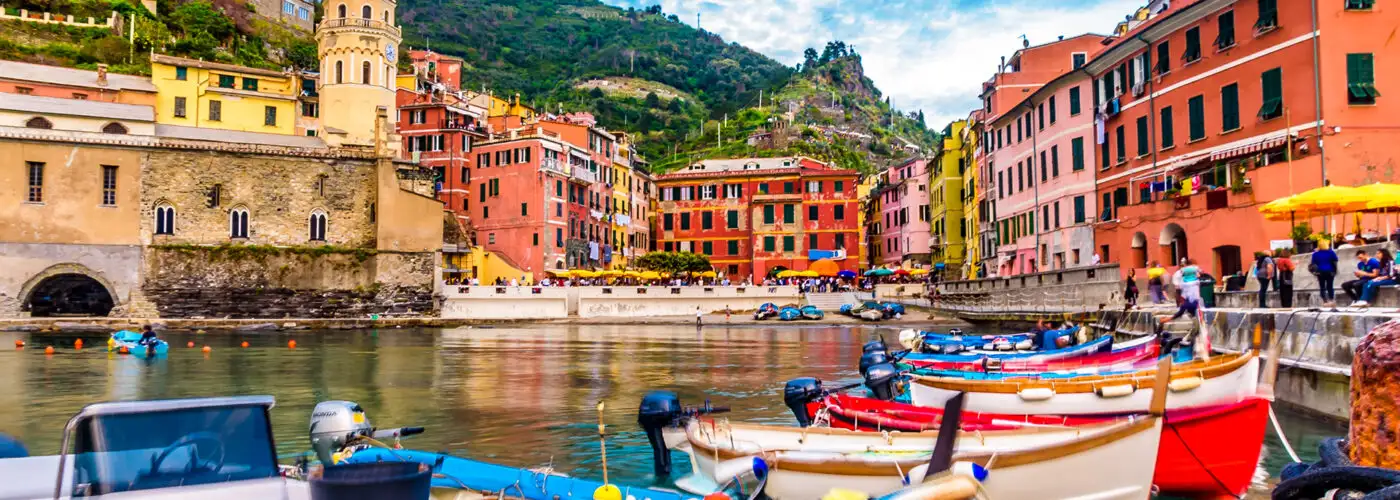
Is It Safe to Travel to Italy? Warnings You Need to Know
The Editors
We are the editors of SmarterTravel! Together we have appeared in countless travel publications including ABC News, Huffington Post, Travel + Leisure, USA Today, and more. We dedicate our days to creating and producing expert travel content, including packing tips, general travel advice, destination inspiration, and helpful videos. Follow us across social media on YouTube , Pinterest , Facebook , Instagram , and Twitter or drop us a line to say hi at [email protected]!
Travel Smarter! Sign up for our free newsletter.
Deciding to visit Italy is almost a no-brainer. The boot-shaped nation has pretty much everything any traveler would want: sights, art, history, dreamy Mediterranean beaches, and arguably the best food in the world. But is Italy safe for travel right now?
What with terror threats ongoing throughout Europe and Italy’s notorious reputation for organized crime, as well as the country’s susceptibility to natural disasters, it’s a fair question.
Generally, the answer is yes, Italy is indeed a safe country to visit. The nation’s violent crime rates are low these days, and global safety rankings consistently place Italy higher than both England and the United States. That said, there are some factors that travelers should keep in mind in order to protect themselves when traveling to Italy.
Tips for Staying Safe in Italy
- Is it safe to travel to Italy? Yes, but you have to know where to go—and where it’s best to keep your wits about you. Understand that there are parts of Italy where you’re more likely to become a crime victim, including packed city centers, crowded tourist attractions, and certain parts of Milan.
- If you’re planning on traveling around Italy, stay safe by being vigilant on public transit, making sure that any taxi you get into is official, taking the typical rideshare precautions, and keeping all valuables under wraps.
- How safe is Italy when it comes to terrorism? Fortunately, Italy hasn’t been as plagued by terrorism as its neighboring countries have been. But travelers to Italy are still advised to be on high alert in crowded tourist spots, report suspicious packages and people, listen to local authorities in the event of an attack, and enroll in the STEP program to make it easier to find you in the event of an emergency.
Crime in Italy
Although there aren’t any truly dangerous parts of Italy—most tourists won’t have to deal with safety concerns other than petty crimes—there are cities and regions of Italy that do tend to be less safe than others.
Travelers in Rome, for instance, have a higher than average risk of being pickpocketed or scammed and a moderate risk of being mugged, according to SafeAround . And though Venice is mostly safe, popular tourist spots are also popular targets for pickpockets and scammers.
As for Naples, it has the unsavory reputation of being a mafia hotspot (in Italy, more than 1,600 mafiosi are arrested per year), although it’s quite rare for mafia activity to affect tourists. Nonetheless, the risk of scams is high in Naples, and drive-by purse snatchings do happen.
Florence also suffers from a higher than average risk of pickpocketing and scams, especially in the popular Piazza Del Duomo area , where thieves have been known to pose as beggars to distract tourists while the crooks’ accomplices steal purses and wallets.
Milan, for its part, is slightly more dangerous than other major Italian cities, holding the dubious distinction of being Italy’s top spot for thieves (followed, respectively, by Bologna, Florence, Turin, Catania, and Rome). So be even more defensive against pickpockets and scammers in Milan, especially while you’re riding on public transit.
Milan’s city center is rife with counterfeiters selling fake goods. Note if you’re caught having purchased any of it, you can be fined up to 10,000 euros . In the city’s Brera and Montenapole districts, home of Milan’s exclusive high-fashion shops, the police presence is palpable; nonetheless, be wary of petty criminals here as well—and avoid the area around Central Station, especially after dark.
The most common crime in Italy is theft. More than 1 million cases are reported per year, with the highest theft rates being in the provinces of Rimini and Milan. The big city centers, such as Rome, are more vulnerable to pickpockets and bag snatchers, so it’s especially important to keep your belongings under wraps there, and to guard against being distracted.
Common scams targeting travelers in Italy often involve street vendors selling counterfeit goods, usually fashion items. Occasionally, Italian thieves will impersonate police officers who ask to see your ID, then take your wallet. Other times, thieves use motor scooters to snatch purses or bags—so never leave your belongings unattended. If you’re driving, keep your doors locked and windows rolled up. And if you’re drinking alcohol, never leave your drink unattended, as there have been instances of spiked cocktails at Italian bars and nightclubs.
Natural Disasters in Italy
If it’s natural disasters you’re concerned about in Italy, you’ll want to beware of summer wildfires, especially on the islands of Sardinia and Sicily, and of autumn rain’s resulting in coastal landslides, including in Calabria, on the Amalfi coast, in Cinque Terre, and in Sicily and Tuscany. Venice is famously prone to flooding as well.
All of Italy is an active seismic zone, and recent years have seen multiple earthquakes cause death and destruction. The country also has several active volcanoes, including Mt. Etna in eastern Sicily; Mt. Stromboli, on the island of Stromboli; and Mt. Vesuvius, near Naples.
How to Get Around Safely in Italy
Though Italy’s crime rate is generally low, it’s still smart to be aware of your surroundings on public transit and in crowded areas like city centers, especially in and around Rome’s Termini station . (Note that you need to endorse your ticket in a ticket machine before starting a train trip—if you don’t, you’re liable to be fined on the spot.)
When using taxis in Italy, stick to officially licensed vehicles with a taxi sign on the roof, and make sure that the driver resets the meter before you get going. Fake taxis have been known to prowl Milan, stealing passengers’ belongings before they get in or wildly overcharging them at their destination.
Uber rides are available only in Rome and Milan, and it’s as important in Italy as it is anywhere else to take the typical precautions when using app-based hired cars: Choose a busy, well-lit area when waiting for your ride, confirm that your vehicle’s license plate and driver match what’s listed on your phone, sit in the back, and share your ride’s progress with a friend or loved one. Also, don’t tell the driver your name when you arrive; ask for the name on the booking instead.
As in most places, safety in Italy is more of a concern if you’re female. Italian men aren’t exactly known for their subtlety, and this can translate into what most American women would consider harassment. Solo female travelers may get a lot of unwanted or aggressive flirtation, along with direct and prolonged eye contact that’s beyond U.S. cultural norms. Your options in this situation include walking away, ignoring the attention-seeking perpetrator, telling him that your husband (“ marito” ) is due shortly, or reporting groping incidents to the police. In Italy, the three worst cities for sexual assault are Bologna, Florence, and Milan .
Another factor to know in the realm of Italy travel warnings is that prostitution is rampant and legal in Italy, and that sex workers are easy to find on streets, at “massage” salons, and online. However, organized prostitution, solicitation, and brothels are all illegal, and their existence spikes the Italy crime rate, especially in northern Italy, where prostitution-related crimes are more abundant . Trieste leads the pack, followed by Catania, Ravenna, Ancona, and Alessandria.
Terrorism in Italy
As in many parts of Europe, a key consideration when pondering whether Italy is safe to travel to is the threat of terrorism. Thankfully, Italy has largely sidestepped the incidents of terrorism that have plagued some of its neighboring countries—you won’t see terrorism covered often in Italy news—but that doesn’t mean that it’ll never happen.
Italy is considered at moderate risk for terrorism, and the U.S. Department of State advises Americans to “exercise increased caution in Italy due to terrorism.” The agency also states, “Terrorist groups continue plotting possible attacks in Italy. Terrorists may attack with little or no warning, targeting tourist locations, transportation hubs, markets/shopping malls, local government facilities, hotels, clubs, restaurants, places of worship, parks, major sporting and cultural events, educational institutions, airports, and other public areas.” The U.K. government seems a little less alarmed, noting that “there are isolated cases of domestic terrorism … generally aimed at official Italian targets.”
Either way, to ensure your safety in Italy—and anywhere you travel—be hyper-aware of your surroundings whenever you’re in crowded tourist spots, report suspicious packages and people, listen to whatever the local authorities tell you to do in the event of an attack, monitor local media and Italy news stations for breaking information, and sign up for the Smart Traveler Enrollment Program (STEP) so that you become easier to find in case of emergency.
More from SmarterTravel:
- 8 Hidden Italian Islands Where You Can Escape the Crowds
- Bringing Ruins to Life at Rome’s Cat Sanctuary
- 11 Secret Italian Villages to Visit Before the Crowds Do
—original reporting by Avital Andrews
We hand-pick everything we recommend and select items through testing and reviews. Some products are sent to us free of charge with no incentive to offer a favorable review. We offer our unbiased opinions and do not accept compensation to review products. All items are in stock and prices are accurate at the time of publication. If you buy something through our links, we may earn a commission.
Top Fares From

Don't see a fare you like? View all flight deals from your city.
Today's top travel deals.
Brought to you by ShermansTravel
Australia: 12-Night Sydney, Cairns & the...
Down Under Answers

Greenland: Luxe, All-Incl. 11-Nt Exploration Small-Ship...
Swan Hellenic

Ohio: Daily Car Rentals from Cincinnati

Trending on SmarterTravel
Vai al Contenuto Raggiungi il piè di pagina
Follow us: Facebook Twitter Instagram YouTube Linkedin
- The President of the Council of Ministers
- The Government
- The Presidency of the Council of Ministers
Covid-19: travel information
Considering the epidemiological situation, Italy has foreign travel restrictions in place depending on where you are travelling from/to.
An interactive questionnaire is available from https://infocovid.viaggiaresicuri.it to check the rules currently in force regarding travel to and from Italy.
Please find below a list of other useful web pages:
- Covid-19 Information for travellers
- Information for Italian nationals returning to Italy and foreigners in Italy
- Information from Embassies and Consulates
- Useful information for travellers on the ‘Viaggiare sicuri’ website

- Last Updated On
- August 20, 2023
Is Italy Safe? A Friendly Guide to Travel Safety

Are you contemplating whether Italy is the ideal destination for your family getaway?
You might be asking, “Is Italy safe?”
Italy, with its enchanting villages and lively cities, promises a safe and unforgettable journey.
Of course, a few areas might need a bit of extra vigilance.
But with a mix of practical safety measures and awareness of regional nuances, Italy’s treasure trove of culture and art is yours to explore without worry.
Your vision of an Italian holiday is not only feasible but also undeniably pleasurable.
In this read, I’ll let you in on vital insights and tips to smoothly journey through Italy and soak up the experience, totally stress-free.
Covering topics from travel advisories and rules to personal safety guidelines for explorers and solo female voyagers, we have all the bases covered.
Buckle up and get ready for an exciting tour by making your Italian adventure safe, enjoyable, and one for the books.
Key Takeaways
- Italy is generally safe for families, though some areas may require extra caution.
- Staying informed about regional differences and following practical safety tips can enhance your travel experience.
- Exploring Italy’s cultural and artistic highlights confidently ensures a memorable trip.
Is Italy Safe Overall?
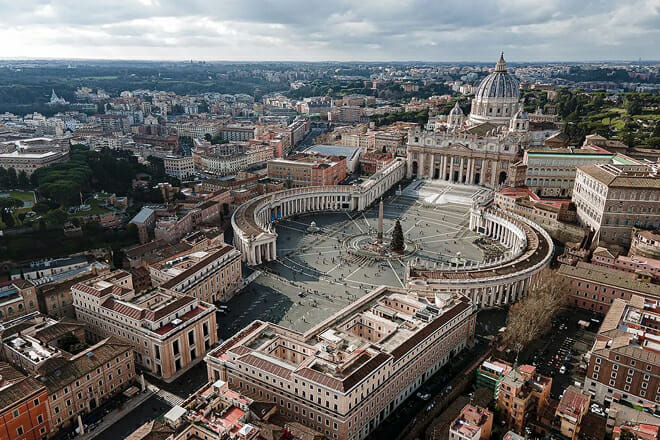
When considering the overall safety of Italy, it is essential to examine safety statistics and crime rates.
By analyzing these factors, we can gain insight into the general safety conditions and assess the level of security for residents and visitors in the country.
Safety Statistics
When planning a family vacation, it’s essential to know how safe your destination is.
According to the 2020 Global Peace Index, Italy ranks 31 out of 163 countries for safety and peace , while in Europe, it’s ranked 22 out of 36 countries.
Now, these numbers might have you wondering whether Italy is safer than the United States.
The answer is yes.
The U.N. and the 2023 Global Peace Index rank Italy as the 34th safest country in the world, well ahead of the U.S.
Impressive, right?
Of course, no country is entirely crime-free.
Just like any other popular tourist destination, Italy faces some crime issues like pickpocketing, especially in crowded areas near famous landmarks.
But don’t let that deter you from visiting.
Taking common precautionary measures like securing your valuables and staying vigilant should keep you and your family safe throughout your Italian adventure.
To give you a better understanding of Italy’s crime rates compared to other countries, here’s a table that sums it up nicely:
General Travel Warnings
Despite the pandemic restrictions being lifted, some general travel warnings still apply.
Italy is considered to be a Level 2 country in terms of safety .
This means you should exercise increased caution, mainly due to terrorism concerns.
What’s a family to do?
- Stay Alert : Keep an eye on your surroundings, observe local announcements, and follow instructions from authorities.
- Not All Areas are Equal : Be extra careful in tourist hotspots and crowded places where you may be more vulnerable.
- Have a Plan : Know the location and contact information of your nearest embassy or consulate, just in case.
Regional Safety Differences

Italy’s diverse regions exhibit notable safety differences, with distinct characteristics observed between Northern and Southern Italy as well as popular tourist cities.
Understanding these variations is crucial for travelers seeking to navigate the country and make informed decisions regarding their safety and well-being.
Northern Italy
Northern Italy, home to cities like Milan and Turin, offers stunning landscapes, rich history, and beautiful architecture.
The larger urban areas may experience higher levels of crime, but it’s generally safe, especially for tourists.
Stay vigilant with your belongings, as pickpockets may be more active in these cities.
When exploring Northern Italy, you’ll also come across smaller towns and picturesque destinations such as Bologna and Tuscany.
These areas are quite safe, offering the perfect getaway for families visiting Italy.
Southern Italy
Venturing to Southern Italy brings you to sun-kissed shores and spectacular sights like Naples and Sicily.
While there may be some areas with higher crime rates, most tourist destinations remain relatively safe.
As with any location, keeping an eye on your belongings and being cautious in crowded spots will help ensure you have a fantastic family trip to Southern Italy.
Popular Tourist Cities
Rome, the eternal city, is undoubtedly one of the best places to visit in Italy.
Safety-wise, it’s on par with other popular tourist cities in the country.
As the famous saying goes, “When in Rome, do as the Romans do.”
Remain vigilant, keep your belongings secure, and stick to well-trodden paths when exploring the city’s rich history.
This city wasn’t built in a day.
Take your time to truly discover the best things to do in Rome .
Milan, Italy’s fashion capital, offers a mix of both style and safety.
As in Rome, it’s essential to stay aware of your surroundings, especially when enjoying the vibrant city life.
Organized Crime in Italy
Let’s dive into organized crime in Italy and what that means for your travel experience.
The most iconic Italian organized crime group is the Mafia or Sicilian Mafia, also known as Cosa Nostra.
But don’t let that scare you away from the beautiful landscapes, mouth-watering food, and charming towns Italy has to offer.
Though crime is present, it usually shifts between low to moderate levels, including murder, sexual violence, and corruption.
When sightseeing and exploring Italy’s popular attractions, your biggest concern should be petty crimes such as pickpocketing and scams.
Thankfully, you’ll find Italy’s violent crime rates are very low, making it a safe destination for pedestrians and exploration during day and night.

Personal Safety Tips for Tourists
When traveling to Italy, tourists need to prioritize personal safety in various aspects of their journey.
By following these safety tips, visitors can ensure a secure and enjoyable experience while exploring the captivating landscapes and rich culture of Italy.
Public Transportation
When exploring Italy’s beautiful cities like Rome, Florence, and Venice, you’ll likely rely on public transportation.
Do your homework in advance, researching which buses and trains are best suited for tourists.
Be aware of your surroundings and keep your belongings secure, especially in crowded areas like airports and train stations.
Don’t hesitate to ask friendly locals for help if you’re unsure about something.
Hotels and Accommodations

Finding the best hotels in Italy can be a fun part of trip planning.
Look for accommodations with good reviews on safety and location.
Once you arrive, familiarize yourself with exits and emergency procedures.
When leaving your hotel room, always double-check that doors and windows are locked.
Avoid using hotel safes for valuables, as they’re not always secure.
Restaurants and Food
Since Italian cuisine is world-renowned, you’ll naturally want to experience the best restaurants in Italy .
Use trusted guides and recommendations from locals to find places with authentic dishes and a good reputation.
When it comes to food safety, pay attention to cleanliness and hygiene.
Ask about food preparation and storage if you have allergies or dietary restrictions.
It’s okay to say no to complementary bread or tap water if you’re concerned.
Parks and Public Areas
Italy’s parks and public areas are perfect spots for relaxing with the family or taking in stunning views.
However, pickpocketing and bag-snatching can occur in crowded places.
Stay alert, and use crossbody bags with secure closures.
When sitting in outdoor spaces, hook your bag around your leg to deter thieves.
And lastly, always follow posted rules and regulations to ensure a fun and safe experience for everyone.
Avoiding Scams and Petty Theft
When traveling to Italy, it’s important to be aware of the potential risks of scams and petty theft that can occur in tourist-heavy areas.
From pickpocketing to theft and robbery, understanding how to navigate these situations and interact with suspicious locals will help ensure a safe and enjoyable trip.
Pickpocketing
Ah, pickpocketing…it’s an age-old concern for travelers.
How can you avoid those pesky fingers?
Firstly, always be aware of your surroundings – If something or someone seems suspicious, trust your instincts.
Keep your belongings close to your body, preferably in front pockets and zippered compartments.
When you’re in crowded places or on public transport, it’s wise to keep your hand on your valuables.
Here’s a pro tip: try using a money belt or a bag with anti-theft features.
Trust me, it’s a game-changer.
Theft and Robbery
Theft and robbery can happen anywhere, even in beautiful Italy.
The good news is that Italy’s violent crime rates are low, but it’s still important to be cautious.
Be extra vigilant in tourist hotspots and always lock your accommodation’s doors and windows.
Don’t leave valuables in plain sight, whether it’s in your hotel room or rental car.
One of my favorite tricks: use a small luggage lock on my backpack – it just adds that extra layer of security.
Dealing with Suspicious Locals
Connecting with locals is one of the best experiences while traveling through Italy, but not everyone might have your best interests at heart.
Be cautious when accepting help or engaging with people who approach you unsolicited.
A classic example: distraction tactics used by unsavory folks to snatch your belongings.
Keep an eye out for signs of trouble and know that it’s okay to politely decline offers and walk away.
Your gut feeling is your best friend in these situations.
Safety for Solo Female Travelers
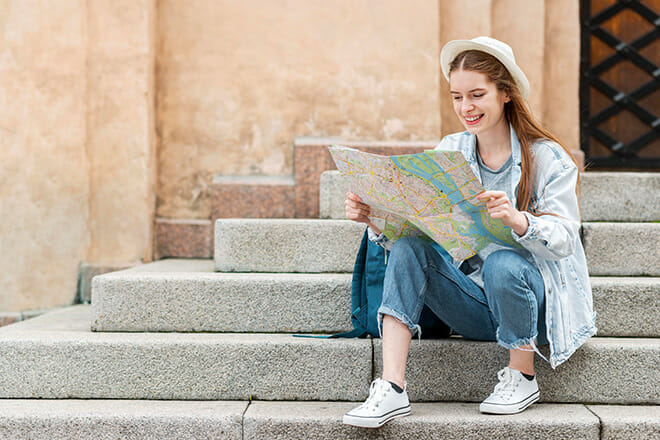
Traveling solo as a female can be an empowering experience, and Italy is a captivating destination that offers a rich cultural tapestry.
Let’s explore valuable safety tips specifically tailored for solo female travelers in Italy, including advice on handling catcalling and navigating the vibrant streets with confidence.
Solo Travel Tips
One of the most important aspects of staying safe while traveling solo is to trust your instincts.
If you feel uncomfortable in a particular situation, it’s best to leave and seek a safer location.
When booking accommodation, research the neighborhoods you plan to stay in and choose well-lit, populated areas.
Opt for reputable hotels or vetted options to ensure a secure stay.
When exploring, plan your route and let someone know where you’re going, especially if you’re heading out for a long day
One essential tip is to keep your personal belongings safe.
Use a cross-body bag and avoid carrying all your valuables in one place.
Split up your cash and documents, keeping them in separate bags or pockets.
Dealing with Catcalling
Unfortunately, catcalling can happen to solo female travelers in Italy, as it can in many other countries.
It’s essential to know how to deal with it calmly and confidently.
If you experience catcalling or unwanted attention, the best response is often to ignore it and keep walking.
Do not engage with the individual, as this may encourage their behavior.
In more persistent cases, seek help from nearby locals or authorities.
Italian people are generally very friendly and supportive, which is why you shouldn’t hesitate to ask for assistance.
It’s also helpful to know some basic Italian phrases, such as “Mi lasci in pace” (Leave me alone), to communicate your disinterest when necessary.
You deserve to enjoy your trip to Italy without harassment.
Parting Words
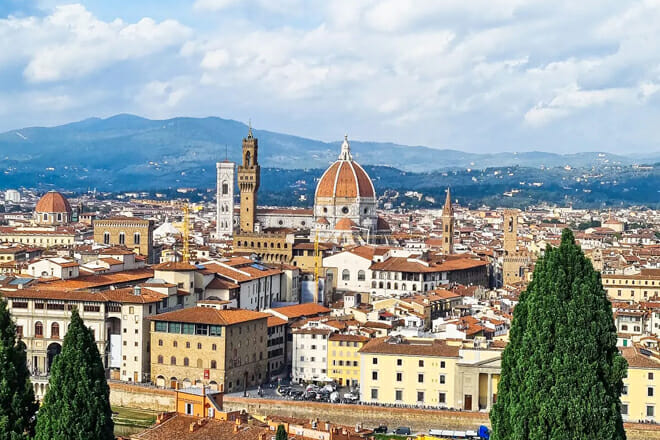
So, is Italy safe for you and your family?
Absolutely.
Italy is a country known for its rich culture, picturesque landscapes, and delicious cuisine, which makes it a fantastic destination for your next vacation.
Though every destination has its challenges, Italy is generally a very safe country with low crime rates.
When traveling, it’s essential to take common-sense precautions like keeping an eye on your belongings, avoiding sketchy areas, and staying informed about local news.
These practices will help you relax and focus on what truly matters: creating lifelong memories with your loved ones.
Remember, the key to a successful trip is preparation.
Before embarking on your Italian adventure, do your research and familiarize yourself with the local customs and environment.
By doing so, you’ll have a wonderful and worry-free time exploring all that Italy has to offer.
Related: Places to Avoid in Italy
Frequently Asked Questions
Is rome safe for tourists.
Rome is generally safe for tourists, but as with any popular destination, staying aware of your surroundings is important. Petty crimes like pickpocketing can happen in crowded areas. Keep an eye on your belongings and exercise increased caution due to potential terrorism threats.
What Are The Safety Concerns On The Amalfi Coast?
The Amalfi Coast is picturesque and generally safe for travelers. However, you should pay attention to road safety since coastal roads can be narrow and winding. Stick to the speed limit and watch out for other drivers.
How Safe Is Cinque Terre For Travelers?
Cinque Terre is a relatively safe destination, but like any popular tourist area, it’s crucial to maintain awareness. Be cautious on the hiking trails because they can be steep and slippery, especially after rain.
Are There Any Places To Avoid In Italy For Safety Reasons?
There aren’t specific places in Italy that you should completely avoid for safety reasons. In general, use common sense, stay informed of local news, and consult travel advisories for the most up-to-date information on potential risks.
How Safe Is Traveling At Night In Italy?
Traveling at night in Italy is typically safe, but always exercise common sense, stay in well-lit areas, and avoid wandering alone in unfamiliar places. Be mindful of your belongings, especially in busy nightlife spots, and trust your instincts if something doesn’t feel right.
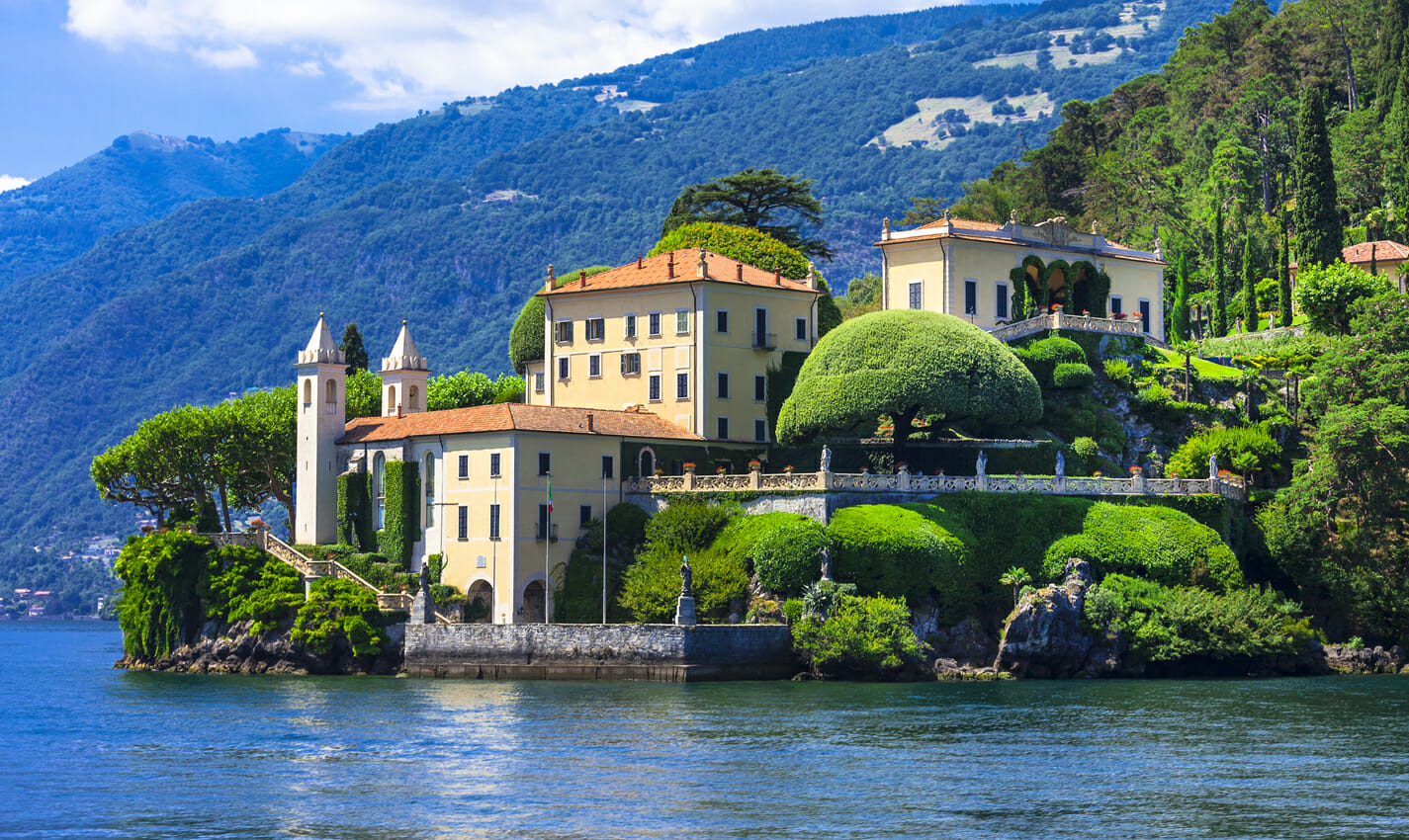

Italy travel requirements 2024: What travelers need to know
We aim to keep this post updated about Italy travel in 2024 with official Italy travel restrictions, requirements, and health and safety guidance. Our goal is to help you make informed decisions so you can travel confidently, safely, and responsibly in this new post-pandemic world of ours.
Italy has a special place in our hearts, and we finally returned in Fall 2022.
As restrictions vary based on the traveler’s citizenship, we will focus primarily on rules affecting U.S. citizens.
Last update: January 28, 2024. Originally published: July 2020.
* Get our free Post-Pandemic Travel Checklist *
Photo credit: Annalisa, Rome January 2024: “Tourism in Italy right now is flourishing, and although it is low season, there is a considerable amount of travelers both in art cities such as Rome, Florence, and Venice, and in small villages. In tourist spots such as museums and archaeological areas there are no restrictions of any kind, except in cases of overbooking such as for the Colosseum in Rome, so I recommend booking tickets at least two months in advance. The business of restaurants, hotels, and vacation homes is normal and busy. Access to health care takes place as usual, with regular and free access to checkups and treatment through hospital emergency rooms for Italian residents and nonresidents. As for Covid tests, although they are not required by any tourist facility, they can be done in all Italian pharmacies for a cost of €10-15.” -Annalisa of Rome Travelogues , Resident of Italy
At the end of the post, we share on-the-ground perspectives from local residents and travelers to Italy so you’ll get a true sense of what to expect.
Table of Contents
Can US citizens travel to Italy? Can I travel to Italy right now?
Italy is open to all travelers, including US citizens who are traveling for tourism.
As of June 2022 , all travelers, including US citizens are no longer required to show a vaccination, recovery, or test certificate upon arrival to Italy. All travelers can enter Italy without quarantine.
Most Italy travel restrictions have been lifted as of May 1 for activities inside the country. See regional restrictions here and regional zone classifications here .
Visitors from over 60 visa-exempt countries , including the U.S., will soon be required to have a European Travel Information and Authorisation System (ETIAS) travel authorization to enter Italy and other European countries . The start date has been delayed from 2024 to 2025.
See details about ETIAS here
Quarantine rules in Italy: What happens if I get Covid?
Travelers are not required to quarantine upon arrival in Italy.
For those who test positive for Covid while in Italy, self-isolation for five days or until testing negative, followed by masking up to 10 days, was the latest requirement. More recently, locals report that quarantine is no longer being enforced.
Italy Green Pass Requirements to Enter Restaurants, Attractions and Large Events
You might be wondering: Do I need a vaccine certificate or Covid test to enter restaurants and attractions in Italy?
Italy’s green pass (basic or super green pass) is no longer required to access restaurants, businesses, public transport, or participate in certain activities.
However, the Super Green Pass is still temporarily required for anyone age 12 and older to access hospitals or care homes.
Can Americans travel to Italy in April 2024? Can US citizens travel to Italy this Spring?
Travel to Italy in April is open . Read on for details and check back for updates.
What is it like to fly to Italy FCO or CIA Rome International Airport right now? In Rome, body temperature checks through thermo scanners may be taken at the entrance of the airports. The airports sanitize their spaces daily.
For travelers entering Italy from other countries, check with your airline about current mask requirements on board.
Do Americans have to quarantine when traveling to Italy? Quarantine is not required upon arrival.
See details above.
Does Italy check COVID-19 symptoms of incoming travelers? Body temperature may be scanned in the airports for inbound and outbound travelers.
Does Italy require a negative Covid 19 test for American travelers? A negative Covid test is no longer required to enter Italy.
Does Italy require a proof of Coronavirus vaccine for American travelers? Proof of Coronavirus vaccine is no longer required to enter Italy.
Do I still need to provide a negative Covid test or quarantine if I have been vaccinated? Neither proof of vaccination, negative test, nor quarantine are required to travel to Italy.
Is a booster shot required for travel to Italy? A booster shot is no longer required to enter Italy.
However, a booster shot is needed for the US vaccination card to be considered a valid Green Pass to enter healthcare settings while in Italy. See Green Pass Requirements above.
What Covid testing options are available for travelers in Italy? PCR and antigen tests are available for U.S. citizens and visitors in Italy. Antigen tests cost approximately 20-30 euros while PCR tests can cost around 70.
Individuals in Italy can get a Covid test from the following:
- Government-approved testing labs
- Testing facilities with English-speaking doctors in Italy
- On-site testing facilities at international airports in Italy, such as Milan, Rome Fiumicino, Cagliari, Florence, Malpensa, Bari, Venice, Pisa, and others.
- Private testing labs and pharmacies in Italy
What healthcare options are available to travelers in Italy who get the virus? Tourists and visitors may access Italian health care and emergency services by paying out of pocket or with privately purchased travelers’ insurance. Tourists can also contact the Italian Covid hotline at 1500 (free toll number).
For travel insurance that covers Covid, check out Nomad Insurance by Safety Wing >
What service businesses and restaurants are open in Italy? Bars, restaurants and all other establishments are open. Both indoor and outdoor dining are allowed.
Are face masks required in Italy? As of October 2022, wearing of masks in Italy is no longer mandatory except in healthcare settings.
Are buses and trains running in Italy? Public transportation is available throughout Italy at normal capacity. Masks are no longer required on buses, trains, etc.
Will Italy impose new Covid restrictions? What’s next is difficult to predict. Historically, most countries impose COVID-19 restrictions when strains on the health care system might become unsustainable.
How has the Coronavirus impacted Italy?
Italy was the first country in Europe affected by COVID-19 and was hit hard by the outbreak, requiring strict lock downs. Another large spike in cases occurred at the end of October 2020. A nationwide state of emergency continued through 2022.
Italy’s economy, which includes a large tourism sector, has faced its deepest recession in history. More than 200,000 tourism-related jobs were discontinued in Italy by the end of 2021– accounting for a massive shortage of workers in the country.
In May 2021, Italy formally opened its borders to international travelers from select countries to revive tourism. In June, Italy eased its restrictions for international travelers, then tightened somewhat due to the Delta variant and Omicron variant.
Italy’s state of emergency ended on March 31, 2022.
Italy obtains its vaccines via an EU procurement program. On December 27, 2020, Italy vaccinated the first residents against COVID-19. Currently, three quarters of Italians are fully vaccinated.
For the current situation in Italy – including how bad is covid in Italy today, total COVID-19 positive cases; daily number of cases in Italy; and COVID-19 recovery rates in Italy, please see the statistics here .
What should you pack for safely traveling in Italy?
😷 Face Masks – Face coverings are recommended in public spaces and required in healthcare settings. Find N95 masks at Bona Fide > or designer options at Vida >
💊 Medicine – Bring enough prescription and over-the-counter medication for your entire trip to avoid trips to the clinic.
💳 Vaccine Card Holder – Protect that paper CDC card when traveling abroad (if your country doesn’t offer a digital version). Get a simple plastic protector > or Vegan leather clippable > or Leather passport + card combo holder >
👃 Covid self-test – The most studied rapid antigen self-test with FDA emergency authorization. NOT valid to enter countries. Use for your own peace of mind. Order from CVS > or Walmart >
💧 Sealed water bottle – Make sure your reusable water bottle has a lid that’s not exposed to the air. We use one of each of the following: Shop insulated water bottles with protective lid > Shop water bottles with purification filter and protective lid >
✈️ Travel insurance that covers Covid – We’ve started using Nomad Insurance by Safety Wing for affordable evacuation, international medical, and trip coverage.
What do Italian locals and recent travelers say about visiting Italy now?
What is it like to visit Italy right now? It’s our goal to provide regular updates here from real people on the ground, to help potential visitors know what to expect.
The following are subjective opinions only. Official travel guidance can be found above.
October 2023 – Louisa Loring of EatingAroundItaly , resident of Italy: “Expect to come to Italy and travel as freely as before the COVID pandemic. Currently, there are no laws or recommendations for masking, social distancing or public gatherings. Today, all historic monuments are open as usual without restrictions.
There is no requirement for those who show symptoms. The Italian public healthcare system has removed its state of emergency and it’s easy to access the emergency room.. Private healthcare facilities are free to test patients if they choose too.
Since COVID, there has been an enormous increase in pre-bookings for museums in Italy. Although not all museums require that you pre-book, most people do and it can save you a lot of time waiting in line. Most museums have an easy and hassle free online booking system with paperless tickets.”
September 2023 – Linda of insieme-piemonte.com , resident of Italy: “Italy has, especially in summer, many crowded places. However, beautiful Piedmont, in the northwest of the country, remains a hidden gem: cheap, hospitable and visited by Italians at most in high season.
At the moment, Covid is no longer an issue. There are no restrictions or protective measures. During the pandemic, however, very strict rules prevailed throughout the country, including house arrest for several weeks.”
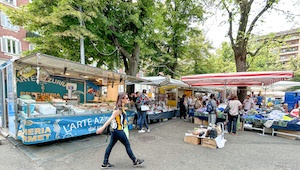
June 2023 – Natalie Deduck of Best of Turin , visitor: “My husband and I come to Turin to stay a month and later travel to other destinations in Italy.
The main tourist destinations such as Rome, Amalfi Coast, Florence, and Milan are receiving a tremendous influx of tourists this Spring and Summer. We are glad that we choose Turin for our longer stay. It is an incredible destination but not as famous as the other places, so here we can enjoy all the best of Italy without hassling with crowds.
Since I landed in Italy, I didn’t see any advice or signals about Covid measures or how to behave in public spaces. No one wears masks, and businesses are open as usual, including bars, restaurants, clubs, museums, and open-air markets.
Everything is pretty much back to normal. My husband and I lived in Turin in 2019 and 2020 during the pandemic. We experienced Italy in its worst moment, and it’s so good and heartwarming to see life back to what it was before the pandemic.”
January 2023 – Zoe of Together In Switzerland, EU visitor: “For our visit to Como, Italy for 2023, the location was pretty busy and lively. All shops and restaurants are open and seemed like a good mix of locals and tourists.
It’s not mandatory, but many do choose to wear a mask such as on the local bus or when in the main shopping area. There were absolutely no checks during our whole visit in Como, however you do see that local stores do still have a those plastic protection areas at the cashier tills and hand sanitizers is available at entrances. We personally didn’t see many people using these and no minimum space was needed. The only crowded area we encountered was for a busy local restaurant that everyone wanted to eat at.”
October 18 2022 -Michelle, Intentional Travelers: “Italy’s tourism feels back in full force and daily life has resumed as normal. Some people wear masks in grocery stores, trains, or other public areas but not many. On the train back to Rome airport, we saw staff sanitizing handrails in all the train cars. Lines at FCO airport seemed typical, and we passed through check-in, security and customs relatively quickly (25 minutes) on a weekday morning. We didn’t have to show any Covid documents, only passports.”
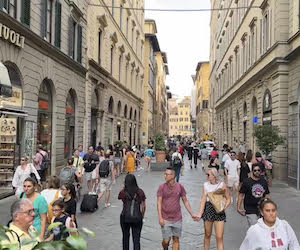
September 2022 – Michelle, Intentional Travelers: “We flew into Florence, Italy and took trains through Tuscany in September. To enter Italy, we only needed our passports. Air Dolomiti airlines required masks on the flight.
The Florence airport tram into town had signs that masks were required but maybe 50% of people were masked. Around Florence, it is as busy as ever and highly recommended to make reservations for big attractions in advance. Masks were still required on the regional trains in Italy, enforced by staff and audio announcements. Otherwise, tourism does seem back to normal.”
June 3, 2022 – S.M, American digital nomad – “I flew today to Rome from Croatia. They didn’t ask for anything covid related. No test or vax cards. But we had to wear N95 mask on the plane, that’s it.”
May 2022 – Lyndsay at thepurposelylost.com : “I’ve been living in Italy and exploring the country for six months now, and the past few days were the busiest I’ve seen the cities! As the weather gets warmer, we’re expecting an uptick in tourism, which is definitely what I’ve encountered so far. Tourists are eager to experience la dolce vita again!
Although you don’t need to wear a mask walking around outside, masks are still required on public transportation like busses, metros, and trains, and highly encouraged for all inside spaces like restaurants and shops. You’ll even find a mix of people wearing masks at public outdoor events.”
March 24, 2022 – Heather American/Italian dual citizen: “I flew into Rome and then proceeded to take several trains and a bus to get to a tiny village in Abruzzo where I will be living for the next five months. Masks are required inside all buildings, and most buildings have signs indicating you need to show a Super Green Pass for entrance. Trains and buses did check for my Super Green Pass and my CDC card showing my booster was accepted readily.
Italians are still taking things pretty serious, regarding masks, etc.”
March 2, 2022 – Sarah Wilson of Life Part 2 and Beyond , British visitor: “I’m in Florence for 10 days learning Italian. I was surprised how many tourists were here over the weekend. Queues were long to many of the major sites. They do check your Green Pass every time you enter a tourist attraction, and restaurant. Some shops also insist on seeing your Green Pass but not all. Masks are being worn inside but not needed outdoors.
There are plenty of pharmacies, many offer COVID testing or the rapid antigen tests. All the pharmacists in a city like Florence speak great English. To reduce waiting in line, I recommend booking attraction tickets online in advance.”
Candice of Mom in Italy , Permanent Resident: “It’s a nice time to visit because you can visit places like the center of Florence and its museums without any crowds.
We’ve also been visiting smaller villages like Pienza, Montepulciano, and San Gimignano, but they’re a little too empty. Almost all shops and restaurants are closed, due to the lack of local visitors. For anyone thinking of coming to Italy right now, I’d stick to the bigger cities, where you’re guaranteed to find things open and still full of Italian ‘vita.’
Throughout the entire pandemic, I’ve been impressed by the cooperation of Italians. People here wear masks when/where required and for the most part, respect the rules. Visitors need to follow the rules too – for example, if you don’t have the Green Pass here, you can’t sit down in an indoor restaurant. Owners don’t distinguish between locals and tourists – everyone has to have their Green Pass scanned or checked.
It’s easy to get tested in Italy – there are private clinics and you can also get tested in pharmacies. You can also get English translations easily. It’s not a great time to come to Italy if you aren’t vaccinated (or have proof of recovery from COVID within the last 6 months). Pretty much anything you’d want to do as a tourist right now requires the Green Pass.
We haven’t found any long lines or crowds, although I expect there will be an influx of visitors in the spring because Italy’s precautions help make it a less risky destination and people are ready to come back to Italia!”
January 2022 – Claudia of Strictly Rome , Italian resident: “All attractions and places of interest for tourists are currently open in Italy. Visits to restaurants typically start with the staff coming to the table to check your “green pass” (the Italian vaccination card). Much like locals, tourists are required to show proof of vaccination or of having recovered from Covid to access attractions, restaurants, hotels and transport – including trains and local / city buses. Everyone in Italy follows the rules, wearing masks wherever required and showing their vaccination card to access public places, restaurants, attractions, transportation and the like. Antigen tests are available at any pharmacy, best if upon booking and depending on the city and region in Italy there may be a line to get tested. Access to health care remains free for everyone on Italian territory, including visitors. You will be significantly better off making restaurant reservations as with Covid restrictions and social distancing availability for tables in popular tourist destinations may be limited.”
December 2021 – Or of My Path in the World , Israeli traveler: “I flew to Turin for a one week leisure trip in December 2021. I felt very safe in Turin as everything was well organized and it seemed like the locals were determined to live “normally” again. Everyone follows the current restrictions, and some people even wear masks outdoors though it’s not mandatory. You can’t enter a museum or a restaurant without your Green Pass being scanned (unless you’re sitting outside), and some attractions require a reservation in advance because you need to pick a specific timeslot for your visit. There are quite a few places for covid tests, and a PCR test for your flight back home will cost you about 70 Euros.”
November 30, 2021 – Morgan Fielder, Crave the Planet , E.U. expat: “It’s so great and easy to get reservations at awesome restaurants with fewer tourists. The airports in Italy have gotten more efficient and travel has been extremely easy since August if you are vaccinated and keeping your mask on appropriately. Yes, people follow the rules. Access is good to hospitals and if there’s any hint of problems, then businesses and events have gone to only letting in vaccinated or recovered people. Contract tracing is done via app when you go inside a venue or restaurant.”
September 20, 2021 – Sarah Wilson , British expat in Malta: “I was in northern Italy at the beginning of September for two weeks and now I’m in Sicily until the end of the month. The locals are very welcoming. It’s been a tough time for many businesses in Italy, so they are very happy to receive tourists. I literally had Rome to myself, so if you enjoy travelling without the crowds, now is the time to visit. To enter any restaurant, museum or tourist site, you do have to show your vaccine certificate. Some places like the restaurants in Lake Como also asked for your name and phone number. Masks are worn on all public transport and indoors and majority comply. Sicily has recently turned yellow which means masks are supposed to be worn indoors and outdoors – very few wear them outdoors – it’s too hot.”

August 2021 – Abigail, American traveler : “I went to Italy for a weekend. I felt safe and all of the stores were open. There was a green pass that people used to dine indoors, however since I’m a US Citizen I did not have one. Instead I showed my vaccination card, and it was asked for at every establishment. They did not ask for the Covid pass for public transport for Venice or Milan during my stay. For sit down restaurants, they wouldn’t let you in the door if you could not show vaccination. I did see a lot of seats for outdoor dining everywhere I went though.”
August 2021 – Caroline A., South African/Italian visitor: “My husband, 7 year old son, 4 year old daughter and I are in Rome for three months for an adventure as we have dual citizenship. Tourists are very much welcome in Rome at the moment although museums are requiring the green pass to enter. Since we are not vaccinated, we have been getting tested for entering museums, which lasts 48 hours. Testing is widely accessible. Most attractions are open for visits with covid protocols in place. There is a festive mood in the air as many people take their vacation over this time. It is wonderful not to have to wear a mask outside.”
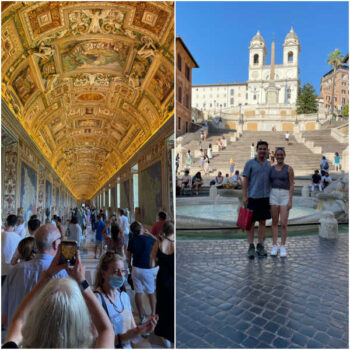
July 2021 – Kathryn, American Traveler: “I flew from Spain to Naples, Italy and stayed 2 days in Positano, 2 days in Sorrento, and 4 days in Rome. The locals were happy to have patrons in their cafes and restaurants. We had several people tell us how happy they are to see return of tourism. All public transportation was running as it would pre-pandemic (masks always required). We took planes, trains, taxis, boats and buses with no restrictions. Some restaurants required you to write down name, phone number, country of origin for contact tracing. Otherwise, no restrictions for outdoor dining and tables were quite close to each other as you would typically experience in Europe. Indoor dining often had more space between tables to allow for social distancing. In Rome, there were quite a few walk-up COVID testing tents throughout the city to use if needed. Rome sights were much less crowded than what I’ve experienced past summers. All major tourist sites were open. They offered both advance tickets and walk-up (usually wouldn’t be possible due to large numbers of tourists in the summer, but with less tourists this year it was possible to purchase day-of tickets). They had temperature checks at most major sites and required masks if indoors.”
June 2021 – Alexander and Cynthia, Travel your Memories , Dutch visitors: “We flew to Rome and visited for 4 days. After Rome we travelled to Florence for 2 days. Because you can do many activities outside, Italy is prefect to travel to at the moment. The population pays very close attention to the guidelines of COVID. All sights have been adjusted accordingly. Only a maximum number of people are allowed in the shops (depending on the size). If you get cold symptoms, you can go to a test street. For major sights it is important to book your ticket in advance because you have to fix a time slot.”
May 2021 – Sarah, Benvenuti Arts, American: “I have a visa as I’m here to teach at a University, and traveling into Italy felt joyful! The crew on the flight were so happy to see us all, and there were only about 30 passengers on the plane. The customs officials were very nice and the people doing COVID-testing in the airport were very friendly. While the rules, as read, seemed more strict than the US, I’m noticing people’s interpretation of those rules is just as scattered as in my country. I happened to arrive right when they reopened after the Easter lockdown, and people seem to be thrilled to be outside. We wear masks in all public areas, and there is no indoor dining, so in general it feels safe. But I am finding myself a bit overwhelmed by crowded areas, like places where students hang out. That’ll take some time to get used to again! I would say, if someone is traveling soon, be respectful and be overprepared. Rules were changing weekly in the lead up to my visit, so I have so much documentation printed that I haven’t needed. Everything takes a bit more preparation than you might be used to in Italy, too. Some restaurants require reservations. Museums are open, but with timed, pre-reserved tickets. There is no indoor dining. There’s a curfew. I am usually loose with my planning when I travel, but am doing more of it just because it’s required. But the food is amazing, the people are lovely, and the city is beautiful, so even with some adaptations, it’s amazing to be here!”
April 2021 – Chicca, Cooking in Tuscany , Italian resident: “We have been living a lockdown life since October – I have to say we’ve got so use to it. But just these days our prime minister has announced to relax some of the strict coronavirus measures starting April 26. The vaccination plans are rolling out quite consistently to have the majority of the population vaccinated by this summer. I read here and there that maybe borders will be opening first to Europeans and then to Americans. We don’t know when but, yes, I start dreaming of having visitors again.”
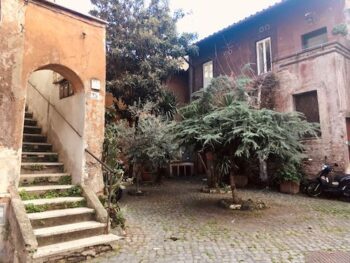
January 2021 – Clotilde, A Princess Travelling with Twins , Italian living abroad: “I flew to Rome, with my husband and our twins over the Christmas period for 10 days to visit family. People working in the tourist sector are really welcoming and try their best to respect, and make customer respect, the rules and regulations. They have been suffering a lot from the lack of tourists and all the imposed restrictions, so they are happy to see tourists coming back but other people are more cautious. News of the new variants of the virus have particularly made people more alert. The biggest issue when travelling to Italy right now is the rules change really quickly, the country can ban specific countries without warning as happened over Christmas with people coming from the UK. On top of that, each Italian region is defined by a colour depending on the level of the infection rate. This reflects also in services opening times that change unexpectedly and often forget to update their websites or search engines. For example you could be stranded at the airport wondering what to do as the rental car office where you booked your vehicle has closed and the curfew time is approaching, as happened to us! “
September 2020. Rebecca Ann Hughes, journalist – permanent resident of Venice: “Tourist numbers in Italy have been low all summer. For those who come to visit, they are seeing popular tourist destinations as never before, but many businesses are struggling. Locals whose work is fed by tourism are eager to welcome back visitors but many of them, along with those who do not work in the tourism sector, are pushing for a change in tourism. Particularly in Venice, they want visitors who travel “slow”, who are respectful, and who interact with the community. This includes following COVID regulations imposed by local councils and the government. Recently, a tourist on a vaporetto (waterbus) in Venice refused to wear a mask, angering locals and causing a fight to break out. Visitors should be well prepared to follow the regulations in Italy, even if they differ from their home country.
Most tourist attractions, public transport, restaurants, bars and other amenities are open and functioning as normal, albeit with social distancing rules and the obligation to wear a mask. It is possible that some tourist attractions will require advanced booking and may have longer queues if the venue is taking temperatures upon entry. Visitors may often have their temperature taken when entering a restaurant. When entering a building or getting on public transport, use hand sanitiser if it is provided. Testing booths have been set up in many airports and visitors can download a contact tracing app for Italy.”
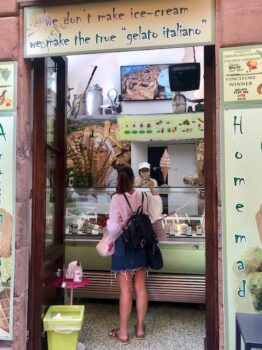
Planning a trip to Italy?
Check out our other Italy travel resources: – Self Guided Walking Tour of Florence – Lucca Day Trip Guide & Walking Tour – A Guide to Tuscany’s Etruscan Coast – Cooking in Tuscany Classes – Hiking Cinque Terre Itinerary – Packing List for Europe in Fall/Winter – 7 Hidden Gem Towns on Tuscany’s Coast – Best Beaches in Tuscany Italy – Tuscany Castles to Rent or Visit – Why Visit Italy in September
If you have questions or updates about travel to Italy during the Coronavirus crisis or post-pandemic, please let us know in the comments below.
~ Pin this post for later or share with friends ~
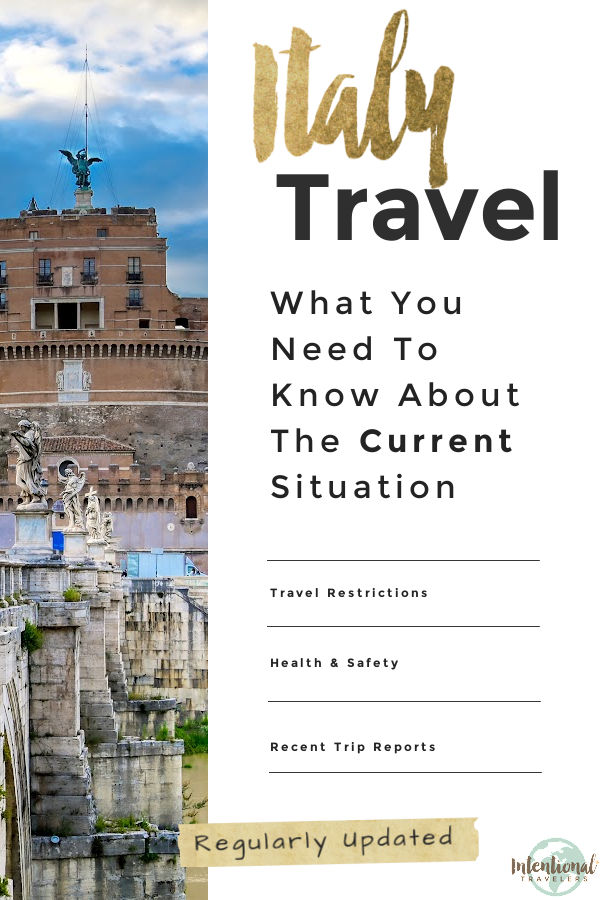
Disclaimer: Please note, travel restrictions change frequently. Readers must take responsibility for verifying information through official sources like the State Department and CDC, in respect to their specific situations. No responsibility can be accepted by Intentional Travelers for action or inaction as a result of information provided through IntentionalTravelers.com. Any information provided here is issued as general information only.
Similar Posts
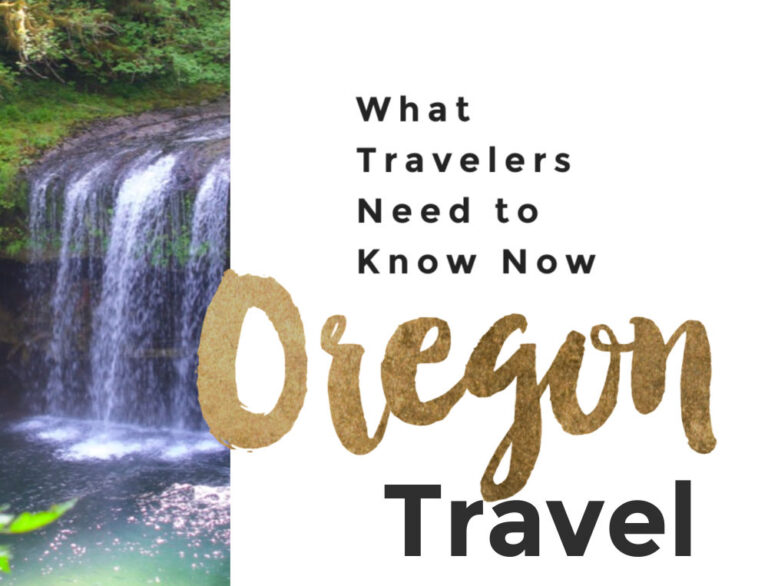
Oregon travel requirements 2024: What travelers need to know
We aim to keep this post updated about Oregon travel in 2024 with official Oregon travel restrictions, requirements, and health and safety guidance. Our goal is to help you make informed decisions so you can travel confidently, safely, and responsibly in this new post-pandemic world of ours. We are Oregonians so this destination is very…

Cooking in Tuscany With Chicca: One Day Home Cooking Classes in Italy
At the heart of Italian culture is – of course – Italian food. That’s why one of the best cultural experiences for visitors to Italy is a cooking class. If you’re looking for one day cooking classes in Tuscany, then we have a great recommendation for you! Cooking in Tuscany with Chicca is not only…
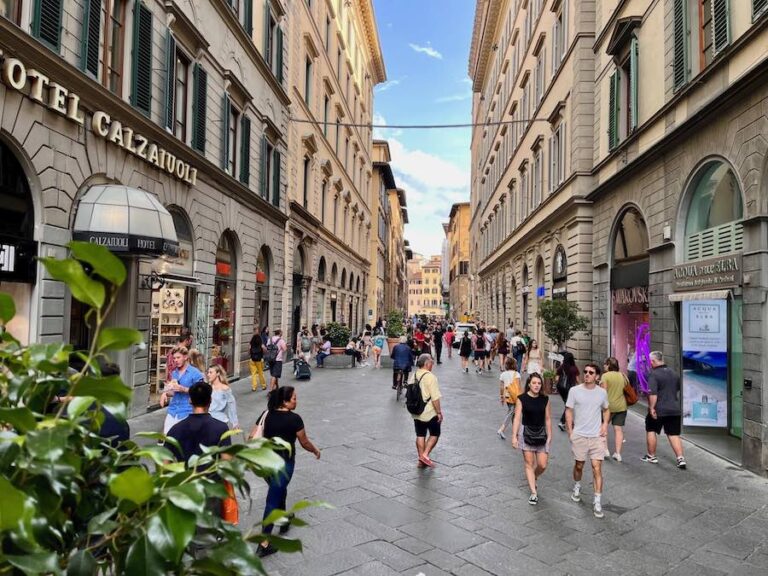
Italy in September: Best Activities, Destinations, Weather, & Packing Guide
Personally, I think September in Italy is one of the best times for visitors. In fact, I’m writing this from Italy now, in September, as we typically come here in Autumn. Italy in September and early October usually means good weather and beautiful sunsets. While there are still crowds in Italy’s top destinations and main…
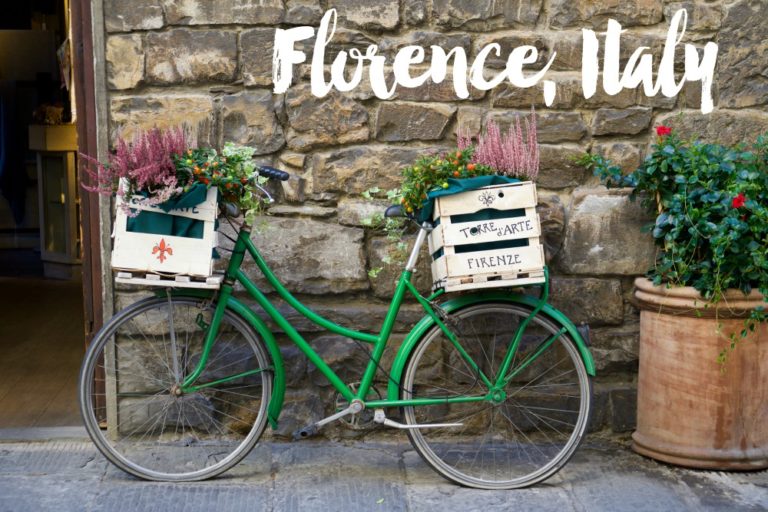
Free Self Guided Walking Tour of Florence Italy: One or Two Day Itinerary
If you’re visiting Florence, Italy for just one or two days – or you want to get to know the main attractions of the city quickly – this free self guided walking tour of Florence is perfect for seeing Firenze by foot. You’ll find two versions of our suggested Florence walking tour itinerary in this…
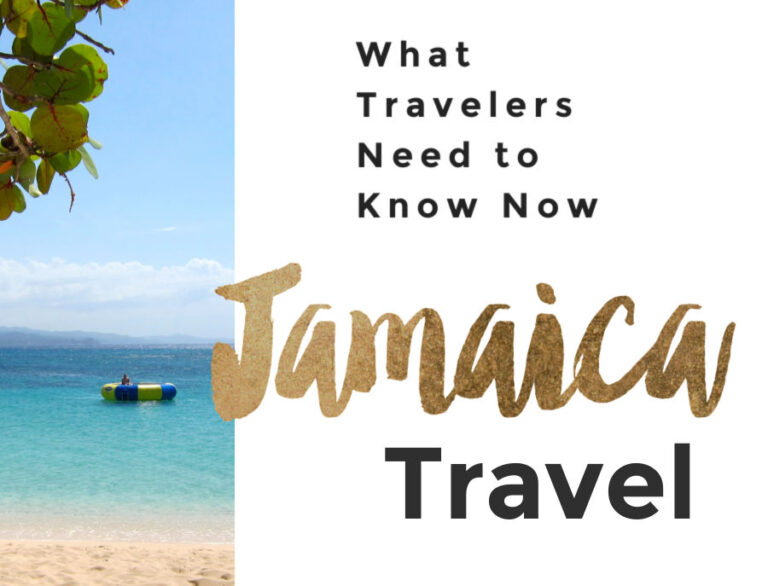
Jamaica travel requirements 2024: What travelers need to know
We aim to keep this post updated about Jamaica travel in 2024 with official Jamaica travel restrictions, requirements, and health and safety guidance. Our goal is to help you make informed decisions so you can travel confidently, safely, and responsibly in this new post-pandemic world of ours. At the end of the post, we share…
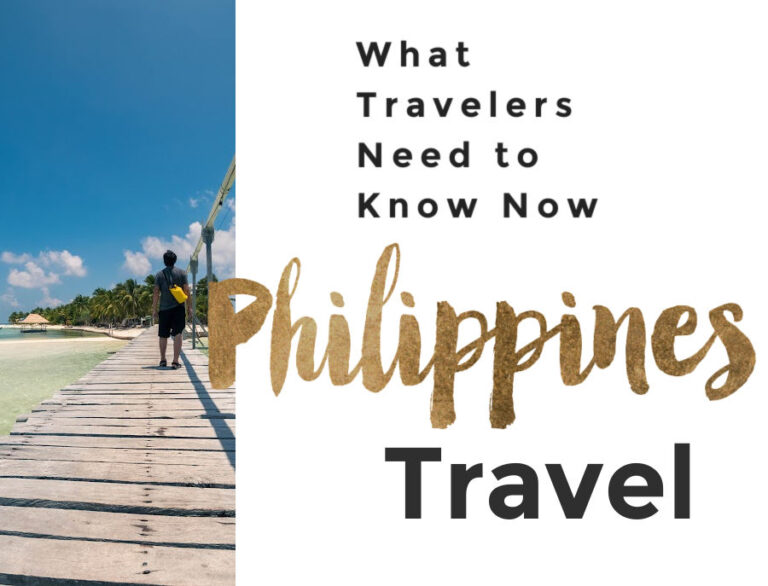
Philippines travel requirements 2024: What travelers need to know
We aim to keep this post updated about Philippines travel in 2024 with official Philippines travel restrictions, requirements, and health and safety guidance. Our goal is to help you make informed decisions so you can travel confidently, safely, and responsibly in this new post-pandemic world of ours. As restrictions can vary based on the traveler’s…
32 Comments
Very useful information, thank you, I will be staying in Sicily for 10 days this July!
Hi! Great info! Is it safe traveling to Italy now from the US because of Ukrania- Russia conflict? Thanks!
Thanks, Wilda. We have a good friend in Tuscany who tells us there is no concern about safety in Italy currently, however, prices and availability of some products/delivery is being significantly affected. We recently sent out a Europe update to newsletter subscribers with the following: “If you have plans to travel to Europe, you may be wondering if it’s still safe. Right now airspace over Russia, Ukraine, Belarus, Poland, Slovakia, Hungary, Romania and Moldova are on the EASA risk list [CNN]. But most of Western Europe is hundreds of miles from the conflict, and experts are saying there’s no need to cancel trips [AFAR].” We are planning to travel to Italy ourselves in September-October. Of course, as with Covid, each of us have to make our own assessment based on the level of risk we’re willing to accept when we travel.
Is there a current ban on US citizens (vaccinated or not) traveling to Italy?
Why are US citizens not allowed to travel to Italy at this time as you stated below. I copied and pasted from your article…. Can Americans travel to Italy in January 2022? Can US citizens travel to Italy this Winter? Travel to Italy in January is now allowed for US citizens visiting for any reason, including tourism. Read on for details and check back for updates.
Hi Jamie. I think perhaps you have misread “is NOW” as “is not”? I’ll reword it to prevent future confusion. As you’ll find throughout the rest of our post, Italy IS open to Americans under certain protocols. Thanks for visiting.
Hi Michelle, thank you for making this information easy to digest. I’m unclear on the “green pass” and “super green pass”.
– Green pass: proof of vaccination – so our white vaccination cards work – correct? And no proof of booster is required?
– Super Green Pass: unclear here.
Also, is the “health declaration form” and the “dPLF” form the same? If not, are both needed?
I plan to visit Italy starting late Feb – Mar ‘22 and am now wondering if I should push this to June. With it all changing so fast, maybe I’m being overly-cautious?
Kate, I’m glad you’ve found our post helpful. Whether pushing the trip back to June will make much difference is hard to say. I’ve shared a bit about my philosophy on canceling/rescheduling trips here .
Some of the green pass rules are quite new and it is admittedly confusing. Also it may change again by March! Firstly, yes, your white CDC vaccination card will work as your pass, as long as the latest vaccination date qualifies.
There is now a time limit on vaccination for the Green Passes (though not for entry into the country). At the moment, this means that if your last Covid shot was more than 9 months ago, you would need a Covid test within 48 hours before checking into accommodations or taking public transit. Starting February 1st, a booster shot will be needed for persons who have been fully vaccinated for more than 6 months. As I read it, if your last Covid shot is more than 9 months old, then you would not be allowed to do the activities under the Super Green Pass like indoor dining, museums, or spas without a booster. Again, there is not a lot of detail available about how this works practically yet.
Sorry for the confusion about the forms – the self-certification health form I think might be an old term so I’ll update that in our post. The dPLF digital Passenger Locator Form is what is now required before travel.
Hi there and thank you for your lovely blog. I am traveling to Italy in February, and my second vaccine dose would be older than 6 months, and not able to get a third dose before arrival. Does than mean that I won’t have a green pass and need to undergo a pcr to enter some places?
Auba, thank you for your question. We were surprised by this restriction. It’s all quite new so how this works out practically may change, but I read it as you do. To confirm, I also found this: “All arrivals to Italy with vaccinations considered as expired by Italian standards (see line above) are required to do Rapid COVID-19 tests (available in local pharmacies and test centres) to obtain a Green Pass, which will be valid for 48 hours. The test provider will print your test results and will email you a unique code. You will then need to access the Government website (in Italian) and enter your details. Select the option ‘Utente senza tessera sanitaria’ (‘User without a health card’). You will be prompted to enter the type and number of the ID you showed when you got your test, as well as the code on your test certificate. Click ‘Ricupera certificazione’ (‘Get certificate’) to download your digital test result. You will need to continue with this process for the duration of your stay to enable travel within Italy and to access hospitality and leisure venues including bars, restaurants, museums, exhibitions, sporting events, fairs, civil or religious ceremonies and large events.”
Nice post! I recently applied for an Italy Visa but was sceptical about the travel restrictions imposed by Italian authorities. So, I started searching for some answers and that is how I came across your informative article. It talks about all the important details that a first-time Italian traveller like me should know. Do share such informative blogs about other countries and any possible restrictions that they are imposing. It might come in handy for a lot of tourists who want to get out of their homes after a long season of the pandemic.
Thanks for a great info. Did they ask the covid pass in the public transport? I read that in intercity trains require at least but would like to know the reality. And if Unvaccinated customers can enter an establishment to buy food, but they are not allowed to eat indoors, are there many restaurants with outdoor areas that can be used without the passport? Thanks a lot
Thanks for your questions. The green pass is required in Italy for domestic planes, ferries, inter-regional trains and long-distance buses. For public transit within a city like buses and metros, there are capacity controls and masks required but not the green pass. Taxi drivers do not check for the green pass. Yes, many restaurants in Italy have outdoor seating. We’ll do our best to gather more testimonials about what this looks like on the ground to update our post in the future.
Trying very hard to find out exactly what happens and what options are available to you should you happen to test COVID positive before your flight back to USA. Especially now that fully vaccinated folks are testing positive. Please advise as soon as possible. Thank you!!
Hi and thanks for visiting our blog. According to the CDC website , “People should self-isolate and delay their travel if symptoms develop or a pre-departure test result is positive until they have recovered from COVID-19. Airlines must refuse to board anyone who does not present a negative test result for COVID-19 or documentation of recovery.” So options are pretty limited at the moment if you test positive before returning to the U.S., and I haven’t heard whether that will be reevaluated any time soon.
Hi Michelle! I am a US citizen and I planned for an Italian trip Sept 3-15. Today is the first day i see about the quarantine requirement lift being ended on August 30. Does this mean August 30 they may decide to implement the quarantine period again? Do you think I will be able to do my trip or will it depend on how the Italian government reacts to this upcoming month? Thank you!
Kim, thanks for visiting our blog. The requirements may not necessarily be lifted but rather *reevaluated* at the end of August. It’s not possible to predict what the decision will be at this time. I’m sure Italy wants to keep tourism open and has new protocols like the Green Pass in place to do so more safely, but each country has to weigh that against health and hospitalization risks. For vaccinated travelers, being able to travel is more likely this Fall but nothing’s guaranteed as things continue to change quickly with this delta variant. I know the uncertainty is difficult, which I wrote about in our recent post here: https://intentionaltravelers.com/should-i-reschedule-my-trip/
Hi Michelle! Thank you so much for the reply, we knew there would be a risk to canceling the trip and we are very understanding and flexible. I just hope that we know in advance enough to not give our hopes up. We are vaccinated so hopefully if they restrict anything it’s unvaccinated folks. I’ll keep an eye out for updates!
We are having a lay over at Heathrow Airport. My interpretation of the Covid rules say we will have to quarantine in Venice for 5 days. Is there a “safe zone” in Heathrow that will allow us to enter Venice when we arrive. We are both vaccinated and have digital copies of our CDC vaccine card.
Thanks for visiting our blog, David. It is my understanding that a layover in the UK would mean you’d need to quarantine for five days in Italy, even if you’re only transiting through the airport unfortunately. I have seen reports of recent travelers rerouting flights to avoid the UK for this reason. It appears the requirement is to be in place through August 30, so if you travel after that, it’s possible the rule could change but there are no guarantees.
Hi. I am traveling to Italy in 3 weeks. Where can i get a negative covid test for my re entry to the US. Pharmacy?? Thanks.
Ciao Gianna. Please see the section in our post labeled “What Covid testing options are available for travelers returning to the U.S.?” for these details.
Great blog We’re travelling to Northern Italy in September and supposed to go to a outdoor concert in Marostica. Do you know if there is any plans to cancel outdoor gatherings? Thanks
Hello and thanks for visiting our blog. It’s still too early to know what restrictions might be in place in which regions come September, but we will be sure to update this post as the situation changes. If the concert takes place as scheduled, you’ll likely need a “green certificate” to attend.
How as an American travelers do I obtain a Green Pass?
Thanks for your question. We were actually just in process of updating this post with new information! More details may be forthcoming but it appears that Americans will be able to show a hard copy of their vaccination card, official proof of recovery, or a negative test result taken within 48 hours in place of the digital pass. We’ll be sure to update our information here as more details become available.
Is colosseum ticket free on the first Sunday of every month after pandemic?
That is a good question. We have covered the free first Sunday opportunity previously on our blog, however, the colosseum now follows a different schedule. Entrance is free on select dates throughout the year, however, I have not been able to find a list of those dates for 2021. I would expect that might be published in a bit further in the future.
News all say US travelers can present CDC vaccination card to skip testing. Not true? June 30 2021
Hi Jiang. Thank you for visiting our blog. That information is correct. A CDC vaccination card can be used by US travelers to obtain a “Green Pass”. US travelers with a “Green Pass” are no longer required to undergo testing or quarantine in Italy.
Excellent info!
Thank you for visiting the blog. Safe travels.
Leave a Reply Cancel reply
Your email address will not be published. Required fields are marked *
This site uses Akismet to reduce spam. Learn how your comment data is processed .
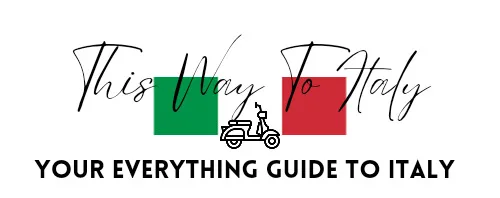
13 Safest Cities in Italy + Travel Safety Tips
If you’re looking for the safest cities in Italy to visit, here’s a guide to help you.
The beautiful Italy , as enchanting as it is, has its share of issues when it comes to safety. Petty thievery remains to be a major concern in Italy, along with the fact that the Mafia originated in Italy as well as the ever-present active volcanoes.
Is Italy safe? There’s a lot of information out there about Italy that could make you wonder. That’s why we put together this list of Italy’s safest cities to help you plan your visit.

Table of Contents
Italy Travel Safety Tips
Before we get to our list of the safest cities in Italy, here are a few tips to keep in mind when traveling to any part of Italy:
1. Sunscreen is essential.
Keep your skin safe from the sun, so make sure you have at least a couple of tubes in your luggage. When the sun is at its most intense during the day, seek shelter or apply sunscreen liberally.
2. Take care of your property in tourist spots.
Pickpockets have an easier time snatching victims when there are more tourists ink a certain location. A money belt will help you avoid becoming a target.
3. Be an “invisible” tourist.
Pickpockets can easily recognize a visitor in a throng, so try to avoid looking like a tourist in popular tourist areas.
Learn a bit about the local language as well as customs and etiquettes. Dress appropriately to avoid getting singled-out. Also refrain from always displaying your camera and selfie stick.
These are some of the things you could do to keep from looking like a tourist.
4. Always carry your bag.
In public places, make sure you keep your bag slung over your shoulder or neck or arm. When dining, have the bag on your lap. Even if you leave it on the floor, you’re leaving yourself vulnerable to theft. Holding your stuff on your lap while you eat or drink is a better option.
5. Don’t show off your money and valuables in public.
In a country like Italy, where there are a lot of pickpockets, so this is extremely important advice. Don’t show off your money or valuables in public because you never know who is looking.
6. Avoid the Roma community at all costs!
Not to judge, but this advice is given by relatives and friends who have fallen prey to these groups. People from the Roma community are notorious pickpockets and scammers who prey on unsuspecting travelers.
Also, avoid huge groups of children selling candy and approaching you.
911 in Italy

The national emergency number in Italy is 113, which is toll-free from any phone. Dial this number if you need the Italian State Police. For medical emergencies, you can call 118.
However, since 2017 you can also call by the European emergency number 112 for the other Italian Police force called the Carabinieri. This number is generally used for police/fire/medical emergencies .
Safest Cities in Italy
Here are 13 safest cities in Italy to travel to.

The Adriatic port city of Bari is also the capital of Puglia , a region in southern Italy. A headland between two bays, Bari is home to the historic village of Barivecchia, which is like a maze. Some of St. Nicholas’ relics are housed in the pilgrimage site’s 11th-century Basilica di San Nicola, which is tucked away in a winding alleyway.
With its 19th-century architecture, pedestrian-only shopping sections, and the Murat quarter to the south, Bari is a popular destination for tourists.
For the most part, Bari is a safe place to visit and live, despite being close to areas that rank low in the safety index. Tourists just need to practice the usual safety precautions for a hassle-free trip; but generally, this port city is often on the list of safest cities in Italy.
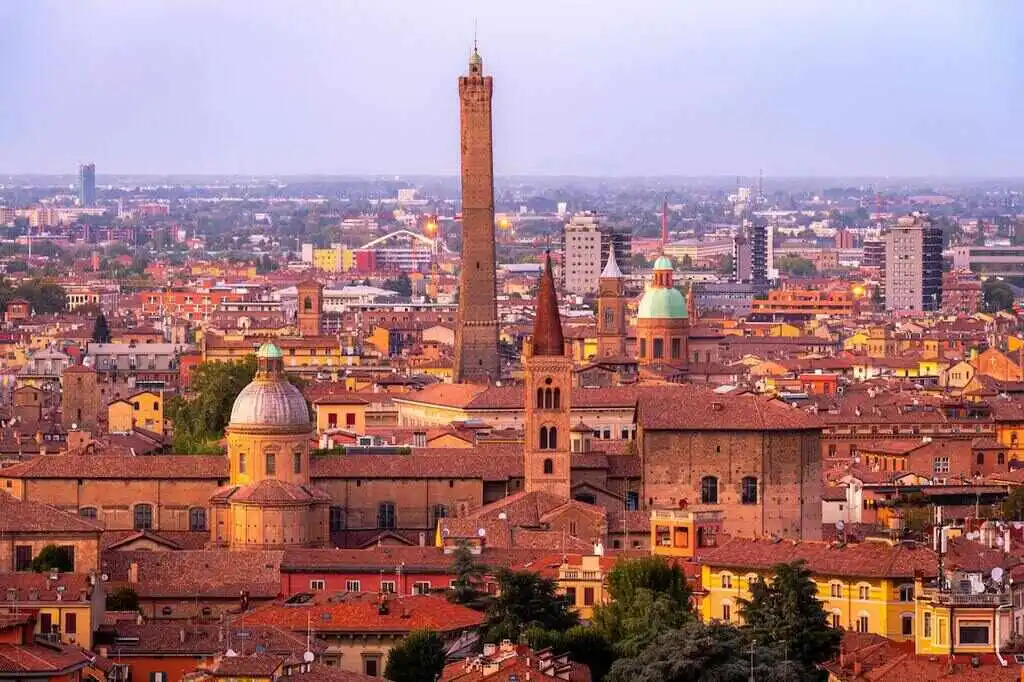
An ancient metropolis in the Emilia-Romagna region, Bologna is regarded as Italy’s gastronomic hub.
Consider this hidden gem when planning a vacation to Italy to enjoy the country’s rich culinary tradition. Authentic ragù bolognese may be found here, as well as the freshest prosciutto di parma and Parmigiano Reggiano, which has been dubbed the “king of cheeses.”
Bologna is one of the safest cities in Italy, even for solo female travelers. You’ll feel safe as you stroll around the city’s historic core, and take in the various medieval and Renaissance-era structures and towers, including the Two Towers, the city’s most iconic landmark.
Other noteworthy attractions in Bologna include the Gelato Museum and the Carpigiani and the Medieval Civic Museum, which shows some of Bologna’s finest examples of medieval architecture.
3. Florence
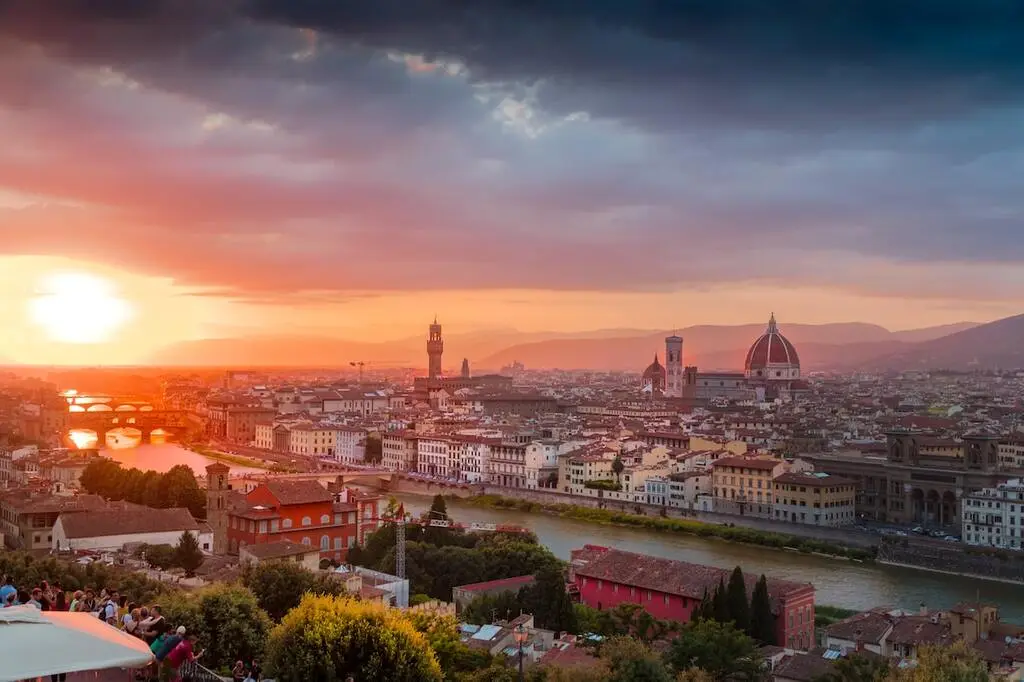
The city of Florence , the Tuscany region’s capital, is home to many Renaissance masterpieces.
The Duomo, a cathedral with a Brunelleschi-designed terracotta-tiled dome and a Giotto-designed bell tower, is one of the city’s most recognizable landmarks. Michelangelo’s David sculpture, meanwhile, is on exhibit in the Galleria dell’Accademia that every visitor must see. Botticelli’s The Birth of Venus and da Vinci’s Annunciation , on the other hand, are on display at the Uffizi Gallery.
Florence is also one of the most attractive and safest cities in Italy that you can explore on foot, making it an excellent choice for those looking for a peaceful and relaxing vacation. Renting a car and exploring the Italian countryside will allow you to take advantage of some fantastic day trips from Florence.

Genoa (Genova) is the capital of the Liguria region in northwest Italy and a major port city. It has played a crucial role in the marine trade for many years.
With its black-and-white striped front and frescoed interior, the Romanesque Cathedral of San Lorenzo dominates the old town. A bronze fountain and the Teatro Carlo Felice opera theatre lie in Piazza de Ferrari, a massive plaza with narrow alleyways that connect up to the city’s great squares.
This beautiful port city is a great place for both tourists and those who want to live here. Just avoid the city’s quieter streets after dark, and you won’t have to worry about safety.

This shopping mecca is a fashionista’s dream come true. The cosmopolitan city of Milan is a haven for everyone who loves Italian clothes and design, on par with Paris, New York, and London . It is also one of the safest cities in Italy for single travelers from all over the world to get about!
If you’re looking for lavish shopping with gorgeous arched glass windows and mosaic flooring, don’t miss the Galleria Vittorio Emanuele II. In addition to the gothic cathedral and the 15th century Castello Sforzesco, one of Europe’s largest fortresses, the Quadrilatero della Moda shopping district is also a must-see.

The Veneto region of northern Italy is home to the gorgeous city of Padua. The 1303–05 Scrovegni Chapel frescoes by Giotto and the massive 13th-century Basilica of St. Anthony are two of the city’s most famous landmarks. The Basilica, with its Byzantine domes and artwork, houses the remains of its patron saint.
Padua is one of the safest cities in Italy, according to the FBI’s annual Safe Cities Index. Aside from tourists, students from the University of Padua, founded in 1222, fill the city’s old town’s arcaded streets and fashionable cafés.
However, there are several areas to avoid such as the Stanga/via Venezia in the Centro Giotto region and around the city’s main train station (Stazione di Padova). Try not to call attention to yourself to stay safe.

While Emilia-Romagna region’s Ravenna served as the capital of the Western Roman Empire from 402-to 476 AD, its influence persisted long after the fall of the Romans. Although Ravenna is one of the smallest cities on this list, its mosaics are some of the most famous in the world. Despite its cultural significance, few tourists visit Ravenna, hence the city’s petty crime rate is minimal.
Since tourism is such an important part of the local economy in Ravenna, the police department here is pretty strict when it comes to enforcing the law. Even if they are alone, women should feel comfortable when visiting.

When it comes to a modern metropolis that is also steeped in thousands of years of history, Rome has it all. The Colosseum, Roman Forum, and the city’s predominately classical architecture are just a few of what makes Rome a top tourist hub. Rome is also home to the Spanish Steps, the Trevi Fountain, delicious cuisine, beautiful parks and gardens, world-class art, and burgeoning film industry.
Rome remains to be one of the safest cities in Italy to visit despite the petty crimes targeting tourists. If you are heading this way soon, just be careful of scams and thefts.

Tourists and locals alike flock to this little Tuscan enclave known for its arts and architecture. Amid picturesque countryside, Siena, perched atop three hills, exudes a cozy village atmosphere. The burnt orange hue of the city’s structures and stones inspired the name “Siena” for the Crayola crayon color.
The city of Siena is a highly secure place to visit. The city’s crime rate is very low, thanks to the city’s well-lit streets and regular police patrols. The most common threat is a brawl between inebriated revelers. Petty crimes like vandalism also do occur from time to time.
10. Sorrento

On the Sorrentine Peninsula in southern Italy, Sorrento is a seaside town that overlooks the Bay of Naples. Sprawled out on an expanse of land that separates it from the busy marinas below, this town is noted for its panoramic water views and piazza dotted with coffee shops. Many little streets lead to the Chiesa di San Francesco, an ancient 14th-century church with its peaceful cloister.
Sorrento is a generally secure destination, and one of the safest cities in Italy to travel to. Just keep your belongings safe and out of sight while riding the bus or in crowded tourist locations, as fraud and pickpocketing are rampant in any part of Italy.

Turin is surrounded by the Western Alps, which are located in Piedmont. Art Nouveau and Neoclassical buildings abound in this storied metropolis. The 16th and 18th centuries saw the construction of many of Turin’s public squares, castles, gardens, and palazzi, including the Palazzo Madama. Even then, crime has been quite low in Turin.
Due to its lower cost of living and milder weather than the south, Turin is a popular destination for Italian retirees. There are also fewer tourists in the city, which lowers the crime rate.

One of the most romantic cities in Italy is Verona, the setting for Shakespeare’s Romeo and Juliet . There are also several Roman sites in Verona, Italy, which make it feel like a mini-Rome. As an example, the Arena di Verona, a replica of the Colosseum in Rome, was constructed in the first century. However, since it is better kept and less crowded, it remains to be one of the most spectacular ancient structures in Italy.
Verona may be one of those places frequented by tourists, but it is a safe city with low rates of violent crime. Just be on the lookout for con artists and pickpockets.

There’s no other city quite like Venice. More than 100 tiny islands dot the Adriatic Sea, and the city’s Grand Canal connects them all.
Venice is regarded as one of the safest citiesin Italy, and an excellent choice for your next vacation.
The 12th-century St. Mark’s Basilica, the city’s most sumptuous landmark, is located in the center plaza – the St. Mark’s Square. If you want to see Venice’s most important history museum in one of its most beautiful buildings, Doge’s Palace is an absolute must-see. The Venetian Carnevale, Italy’s premier Mardi Gras event in late winter, is the best time to experience Venice’s cultural side.
Leave a Comment Cancel reply
Save my name, email, and website in this browser for the next time I comment.
Notify me of follow-up comments by email.
Notify me of new posts by email.
Cookies on GOV.UK
We use some essential cookies to make this website work.
We’d like to set additional cookies to understand how you use GOV.UK, remember your settings and improve government services.
We also use cookies set by other sites to help us deliver content from their services.
You have accepted additional cookies. You can change your cookie settings at any time.
You have rejected additional cookies. You can change your cookie settings at any time.
- Passports, travel and living abroad
- Travel abroad
- Foreign travel advice
Getting help
The Foreign, Commonwealth & Development Office ( FCDO ) cannot provide tailored advice for individual trips. Read this travel advice and carry out your own research before deciding whether to travel.
Emergency services in Italy
If you need to contact the emergency services, call these numbers:
Ambulance: 118
Police: 112
You can also download the 112 Where Are U app , the official European emergency number app. It is only available in some parts of Italy.
Contact your travel provider and insurer
Contact your travel provider and your insurer if you are involved in a serious incident or emergency abroad. They will tell you if they can help and what you need to do.
Refunds and changes to travel
For refunds or changes to travel, contact your travel provider. You may also be able to make a claim through insurance. However, insurers usually require you to talk to your travel provider first.
Find out more about changing or cancelling travel plans , including:
- where to get advice if you are in a dispute with a provider
- how to access previous versions of travel advice to support a claim
Support from FCDO
FCDO has guidance on staying safe and what to do if you need help or support abroad, including:
- finding English-speaking lawyers , funeral directors and translators and interpreters in Italy
- dealing with a death in Italy
- being arrested in Italy
- getting help if you’re a victim of crime
- what to do if you’re in hospital
- if you are affected by a crisis , such as a terrorist attack
Find more support for British nationals abroad .
Contacting FCDO
Follow and contact FCDO travel on Twitter , Facebook and Instagram . You can also sign up to get email notifications when this travel advice is updated.
Help abroad in an emergency
If you are abroad and you need emergency help from the UK government, contact the nearest British embassy, consulate or high commission .
You can also contact FCDO online .
FCDO in London
You can call FCDO in London if you need urgent help because something has happened to a friend or relative abroad.
Telephone: 020 7008 5000 (24 hours)
Find out about call charges
Risk information for British companies
The Overseas Business Risk service offers information and advice for British companies operating overseas on how to manage political, economic, and business security-related risks.
Related content
Is this page useful.
- Yes this page is useful
- No this page is not useful
Help us improve GOV.UK
Don’t include personal or financial information like your National Insurance number or credit card details.
To help us improve GOV.UK, we’d like to know more about your visit today. We’ll send you a link to a feedback form. It will take only 2 minutes to fill in. Don’t worry we won’t send you spam or share your email address with anyone.

Search Smartraveller

Latest update
Exercise normal safety precautions in Italy.
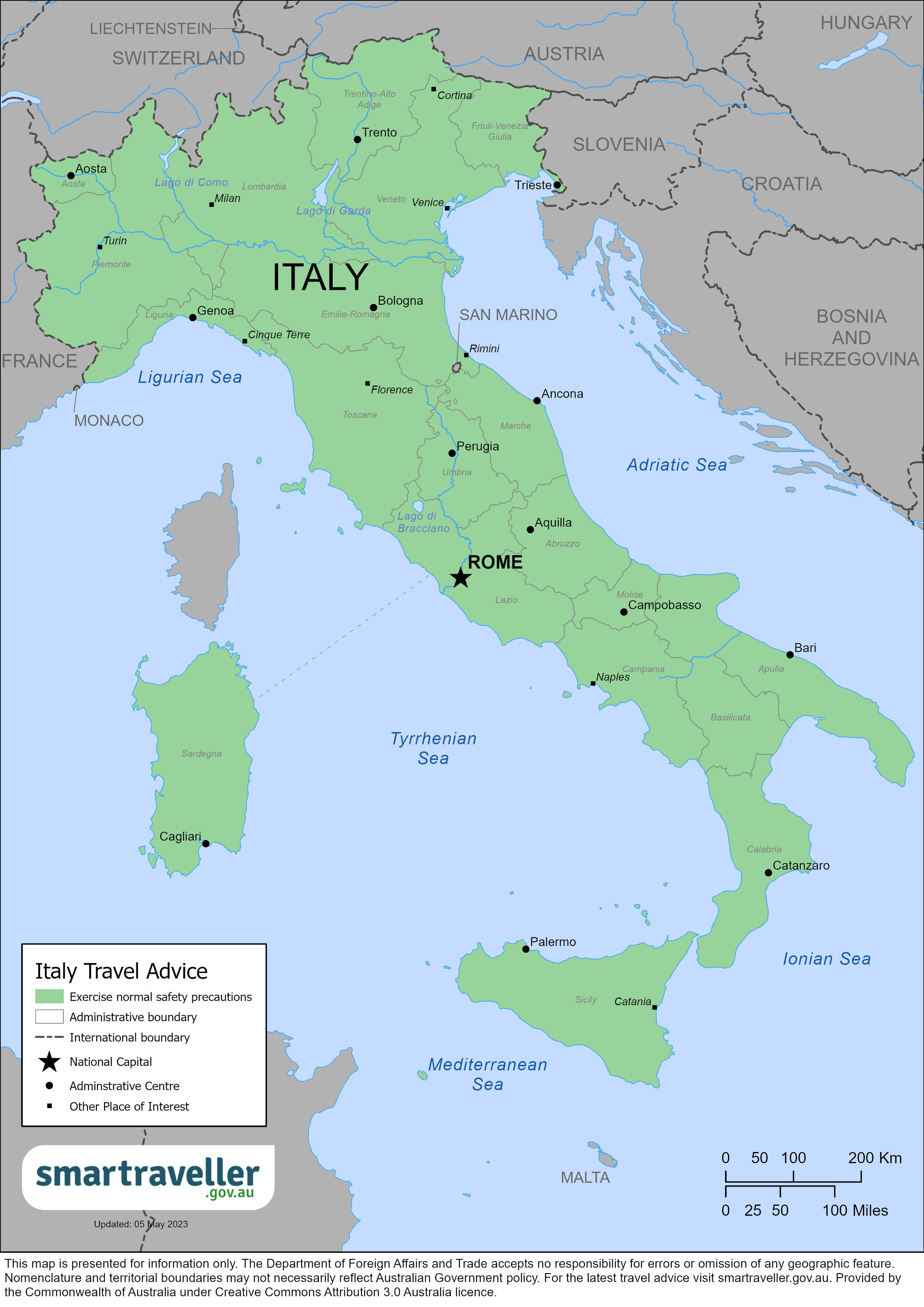
Italy (PDF 898.97 KB)
Europe (PDF 2.62 MB)
Local emergency contacts
Fire and rescue services.
Call 112 or 115.
Medical emergencies
Call 112 or 118.
Call 112 or 113.
European Emergency number
Advice levels.
- Petty crime is common. Be aware of pickpockets and bag snatchers at tourist spots and on transport, particularly at central train stations. Thieves often work in groups on trains. Take care of your belongings.
- Bombings against political targets happen. Avoid protests and crowds. Monitor local news.
- Always be alert to terrorism. Terrorists have targeted European cities, including transport hubs and places visited by travellers. Take official warnings seriously.
- Italy experiences earthquakes and volcanic activity. Large earthquakes cause landslides and avalanches. Forest fires are common from June to September. Monitor the media and follow the advice of local authorities.
Full travel advice: Safety
- If you need urgent medical assistance, call 112. English-speaking operators are available.
- Medical facilities are good in major cities and limited in rural areas.
- Australia has a Reciprocal Health Care Agreement with Italy. You can get treated in public medical facilities if you show your Medicare card and Australian passport. You still need travel insurance.
Full travel advice: Health
- You may be fined for littering, sitting, eating or drinking near churches and public buildings or in public spaces. Obey signs about conduct.
- Organised pub crawls are banned in some cities, including Rome.
- It's illegal to take photos of official buildings and military areas. Check with local authorities first.
- Don't buy fake brands and products from illegal street vendors. It's against the law.
Full travel advice: Local laws
- Several cities in Italy impose a 'tourist tax' per person for each night of stay. You pay this directly to your accommodation provider. You may also need to pay an access fee to visit Venice on a day trip from 25 April onwards. For more information, see advice from the Venice authorities - Venice Access Fee .
- Temporary border checks have been introduced at Italy's borders with Slovenia. You should allow extra time for crossing the land border between Italy and Slovenia.
- Italy is part of the Schengen area along with many other European countries, meaning you can enter Italy without a visa in some cases.
- Entry and exit conditions can change at short notice. You should contact the nearest embassy or consulate of Italy for the latest details.
- You may need to pay an access fee if you're visiting Venice.
Full travel advice: Travel
Local contacts
- The Consular Services Charter details what we can and can't do to help you overseas.
- For consular help, contact the Australian Embassy in Rome or the Consulate-General in Milan.
- To stay up to date with local information, follow the embassy's social media accounts.
Full travel advice: Local contacts
Full advice
Petty crime.
Petty crime is common, particularly in the summer and autumn tourist seasons. It includes bag snatching, pick-pocketing, passport theft and theft from cars.
Thieves are most active:
- in larger cities
- in and around major tourist spots
- on public transport
- at major airports
- at railway stations and bus terminals
- at beaches (including cars parked near beaches)
- at hotel reception areas
To reduce the risk of theft:
- take care of your belongings
- remain alert in tourist spots
- avoid walking in quiet and poorly lit streets, especially at night
Monitor local sources for advice about new safety or security risks.
Theft on trains
Theft is common on trains, including to and from Fiumicino airport near Rome and on overnight journeys.
Thieves often work in groups to distract victims and rob them while they're not looking.
On trains, they do this by:
- asking for directions while a train is stopped at a station
- dropping attractive items on the floor of the train
- blocking the view of overhead luggage racks
- throwing rubbish or sauce at the victim
Often, a member of the group will pretend to come to help the victim while others steal their valuables.
Check the Italian Public Security System site Polizia Di Stato for advice on how to avoid theft on trains.
Fraud and fake money
Credit card and ATM fraud happens, often involving 'skimming' machines. Monitor your bank statements.
To protect yourself from fraud:
- use ATMs in secure places, such as banks, shops and shopping centres
- keep your ATM and credit cards in sight
Police have warned that counterfeit European currency is in circulation. Check any notes you receive.
Spiking, robbery and assault
Tourists have been robbed and assaulted after consuming spiked food or drinks. This has happened in cities and towns, including Rome, Milan, Florence and Naples.
Some victims have been sexually assaulted or needed hospitalisation.
In Rome, many incidents have taken place:
- around Termini station
- in tourist areas, such as the Colosseum
- in bars and restaurants in the city centre
In Milan, such attacks happen in bars, nightclubs and other late-night venues.
In Florence and Naples, these attacks happen mainly near train stations and in bars and cafes in the city centres.
To protect yourself from drink spiking:
- never accept drinks from strangers
- don't leave food or drinks unattended
- stick with people you trust in bars and nightclubs
More information:
- Partying safely
Theft from cars
Vehicle break-in and theft is common. Many Australians have had belongings, including passports and other valuables, stolen from their parked cars.
Thieves steal from cars at traffic lights, rest stops, service stations and on the roadside.
Lock your car doors and keep luggage and valuables out of sight.
There are reports of thieves slashing tyres or staging roadside emergencies. They aim to persuade drivers to pull over and get out of their cars. While the driver is distracted, the thieves steal personal belongings.
Popular targets for thieves are unattended campervans or mobile homes either:
- parked at camping sites
- in the streets near historic sites
To reduce your risk of theft from your vehicle:
- don't leave valuables in your vehicle
- when you leave your vehicle, lock all doors
- try to use a secure parking facility, especially overnight
Cyber security
You may be at risk of cyber-based threats during overseas travel to any country. Digital identity theft is a growing concern. Your devices and personal data can be compromised, especially if you're connecting to Wi-Fi, using or connecting to shared or public computers, or Bluetooth.
Commenting on local or political events on social media can also be risky in destinations where there are social or political tensions, including commenting on laws that may seem unreasonable by Australian standards.
More information:
- Cyber security when travelling overseas
Civil unrest and political tension
Public protests and events that draw large groups of people can turn violent and spark violent unrest, demonstrations and riots.
To protect yourself from violence and unrest:
- avoid crowds and protests if you can
- monitor local media for possible unrest
- follow the advice of local authorities
- Demonstrations and civil unrest
Strikes are common.
They can cause building closures, particularly in tourist areas. They can also disrupt public transport, including air, shipping, train, bus, tram and taxi services.
Strikes may involve roadblocks and petrol station closures and can cause transport delays and cancellations.
Trenitalia (Italian) gives details on train disruptions. Call 89 20 21 in Italy or +39 0668745475 from outside Italy.
To avoid transport delays or missing flights:
- confirm flights or travel with your travel provider
- allow plenty of time for travel to airports and train stations
Political-based violence
Some violence occurs due to domestic social or political issues.
Bombings have occurred. Bombers have targeted:
- Italian police
- the offices of well-known politicians
- government institutions
- public and commercial buildings
While there have been no recent terrorist attacks in Italy, they can still happen.
In recent years, terrorists have staged attacks in several European cities. Targets have included public transport, transport hubs, and places frequented by foreigners.
European security services have also disrupted some planned attacks in recent years.
The Italian Government has reported that Italy is a potential target for international terrorist attacks.
Security measures are in place in and around major tourist attractions, including:
- the Vatican
- on cruise ships
- at airports, seaports and railway stations
To protect yourself from terrorism:
- be alert to possible threats, especially in public places
- take care around areas terrorists tend to target
- monitor the media for new threats
- take official warnings seriously
Report suspicious activity or items to the police.
If there's an attack, leave the area as soon as it's safe. Avoid the affected area in case of secondary attacks.
Terrorism is a threat worldwide.
Climate and natural disasters
Italy experiences natural disasters and severe weather .
In the event of a natural disaster:
- monitor the media
- keep in touch with friends and family
- check the Global Disaster Alert and Coordination System for updates
Forest fires
Forest fires often occur during summer, usually from June to September. They tend to happen in heavily forested regions. Wildfires can reach major towns during extreme conditions.
Forest fires can be unpredictable and dangerous. They can affect air quality in a way that harms your health.
Monitor the media for updates and follow the advice of local authorities. Visit the Italian Civil Protection Authority website for more information.
Storms and flooding
Heavy winter rains often cause widespread flooding and mudslides.
The areas most often affected are:
- the Veneto, Piedmont and Liguria regions in the north
- the Calabria and Sicily regions in the south
Flooding and mudslides can result in loss of life, destruction of property and evacuation of inhabitants.
Earthquakes
Italy is in an active seismic region and has several earthquakes each year.
Large earthquakes can cause landslides and avalanches. This can result in injuries, death and damage to infrastructure, homes and property.
When travelling in Italy, find out your hotel's earthquake procedure.
If there's been seismic activity in the area you're in or going to, check with your airline or travel provider about disruptions.
- earthquaketrack.com
- Civil Protection authority
- European Avalanche Warning Service
Italy has active volcanoes . These include:
- Mount Etna in Sicily
- Mount Stromboli and Mount Vulcano in the Aeolian Islands chain north of Sicily
Volcanic activity can cause travel disruptions, including temporary airport closures.
Fatalities have occurred from volcanic eruptions.
Travel insurance
Get comprehensive travel insurance before you leave.
Your policy needs to cover all overseas medical costs, including medical evacuation. The Australian Government won't pay for these costs.
If you can't afford travel insurance, you can't afford to travel. This applies to everyone, no matter how healthy and fit you are.
If you're not insured, you may have to pay many thousands of dollars up-front for medical care.
- what activities and care your policy covers
- that your insurance covers you for the whole time you'll be away
Physical and mental health
Consider your physical and mental health before you travel, especially if you have an existing medical condition.
See your doctor or travel clinic to:
- have a basic health check-up
- ask if your travel plans may affect your health
- plan any vaccinations you need
Do this at least eight weeks before you leave.
If you have immediate concerns for your welfare or the welfare of another Australian call the 24-hour Consular Emergency Centre on +61 2 6261 3305 or contact your nearest Australian Embassy, High Commission or Consulate to discuss counselling hotlines and services available in your location.
- General health advice
- Healthy holiday tips (Healthdirect Australia)
Medications
Not all medications available over the counter or by prescription in Australia are available in other countries. Some may even be considered illegal or a controlled substance, even if prescribed by an Australian doctor.
If you plan to bring medication, check if it's legal in Italy. Take enough legal medication for your trip.
Carry a copy of your prescription or a letter from your doctor stating:
- what the medication is
- your required dosage
- that it's for personal use
Health risks
Italy has experienced outbreaks of measles (World Health Organization). Make sure your vaccinations are up to date before you travel.
- Measles immunisation service
Insect-borne diseases
West Nile virus (WNV) (World Health Organization) cases have been reported. There's no vaccine for it.
To reduce your risk of insect-borne disease:
- make sure your accommodation is insect-proof
- use insect repellent
- wear long, loose, light-coloured clothing
Other health risks:
Medical care, medical facilities.
Medical facilities in major cities are of good standard. In regional areas, facilities may be limited.
Reciprocal Health Care Agreement
There's a Reciprocal Health Care Agreement between Australia and Italy.
Under this agreement, you can get care in Italian public medical facilities if:
- you have a sudden acute illness or accident
- your illness or accident happens in your first six months in Italy
To access care under this agreement, you must provide your Medicare card and Australian passport.
The Reciprocal Health Care Agreement doesn't replace the need for private travel health insurance.
It also doesn't cover treatment for ongoing health conditions you already had when you arrived.
Private medical care
Private doctors, specialists and diagnostic services will ask you to pay up-front.
Private hospitals generally require a large deposit before they will start treatment.
You're subject to local laws and penalties, including those that appear harsh by Australian standards. Research local laws before travelling, especially for an extended stay.
If you're arrested or jailed, the Australian Government will do what it can to help you under our Consular Services Charter . But we can't get you out of trouble or out of jail.
Penalties for drug offences are severe and can include long jail sentences.
- Carrying or using drugs
Conduct at tourist spots
Pay attention to signs about conduct around tourist areas in major cities, including Rome and Florence.
Officials may fine you for littering, sitting, eating or drinking on steps and courtyards around churches and public buildings or in public spaces in these cities.
Alcohol laws
Some cities, including Rome, have banned:
- organised pub crawls
- drinking on the street
- drinking in public places
Police have arrested Australians for disturbing the peace under these laws.
It's illegal to:
- block the pedestrian flow in public spaces
- drive without headlights on main roads outside urban areas or on highways - see Local travel
- buy fake brands and products from illegal street vendors
If you want to take a photo of an official building or military area, check with local authorities first.
The owner will ask you for a photo ID if you use an internet cafe. The law requires them to sight and keep an electronic record of their clients' photo ID.
Australian laws
Some Australian criminal laws still apply when you're overseas. If you break these laws, you may face prosecution in Australia.
Staying within the law and respecting customs
Dual nationality
Dual nationality is recognised in Italy.
Dual nationals
Visas and border measures
Every country or territory decides who can enter or leave through its borders. For specific information about the evidence you'll need to enter a foreign destination, check with the nearest embassy, consulate or immigration department of the destination you're entering.
Italy is part of the Schengen area along with many other European countries. This means you can enter Italy without a visa in some cases.
In other situations, get a visa before you travel.
Entry and exit conditions can change at short notice. Contact the nearest embassy or consulate of Italy for details about visas, currency, customs and quarantine rules.
Temporary border checks have been introduced at Italy's borders with Slovenia. Allow extra time when crossing the land border between Italy and Slovenia, and be ready to show your passport or residency card if you're asked to do so by the border police. Checks may also involve vehicle inspections.
Entry and transit rules may change at short notice. Read the travel advice for each destination (including transit) and check with the embassy or consulate of that country. Contact your airline or travel provider for the latest update on entry or transit rules before travelling.
Some countries won't let you enter unless your passport is valid for six months after you plan to leave that country. This can apply even if you're just transiting or stopping over.
Some foreign governments and airlines apply the rule inconsistently. Travellers can receive conflicting advice from different sources.
You can end up stranded if your passport is not valid for more than six months.
The Australian Government does not set these rules. Check your passport's expiry date before you travel. If you're not sure it'll be valid for long enough, consider getting a new passport .
Lost or stolen passport
Your passport is a valuable document. It's attractive to people who may try to use your identity to commit crimes.
Some people may try to trick you into giving them your passport. Always keep it in a safe place.
If your passport is lost or stolen, tell the Australian Government as soon as possible:
- In Australia, contact the Australian Passport Information Service .
- If you're overseas, contact the nearest Australian embassy or consulate .
Passport with 'X' gender identifier
Although Australian passports comply with international standards for sex and gender, we can't guarantee that a passport showing an 'X' in the sex field will be accepted for entry or transit by another country. Contact the nearest embassy, high commission or consulate of your destination before you arrive at the border to confirm if authorities will accept passports with 'X' gender markers.
- LGBTQIA+ travellers
The official currency of Italy is the euro (EUR).
You must declare amounts over 10,000 euro or equivalent if you're travelling between Italy and any non-European Union (EU) country, including all forms of currency, not just cash.
You don't need to declare cash if you're travelling to or from another EU country.
You'll be fined if you don't declare currency or give incorrect information on entry or exit.
ATMs are widely available across the country. Hotels, restaurants and shops accept international credit cards.
Local travel
Tourist tax.
Several cities in Italy impose a 'tourist tax' per person for each night of stay. You pay this directly to your accommodation provider, and it's often requested as a cash payment.
You may also need to pay an access fee to visit Venice on a day trip from 25 April onwards.
- Venice access fee
Driving permit
If you're not a resident, you'll need both:
- an Australian driver's licence
- an International Drivers Permit (IDP) or an official translation of the Australian licence
You must get your IDP before leaving Australia.
You must get an official translator (traduttore giurato) to translate your licence in Italy. Find a list of official translators in the Italian Yellow Pages .
If you take up legal residence (residenza) and stay more than 1 year, you must apply for an Italian licence. Italy doesn't allow you to convert your Australian licence, meaning you'll have to take written and driving exams in Italian. You can do the exam in German or French in some cases.
Contact an Italian embassy or consulate to find out about obtaining an Italian driver's licence.
Road travel
Driving can be dangerous. Driving conditions are disorganised compared to Australia.
By law, you must use headlights on main roads outside urban areas and highways, including during the day.
On-the-spot fines apply for some minor traffic offences.
Many municipalities have outsourced traffic fine collection to European Municipal Outsourcing (EMO).
- Driving or riding
Traffic restricted zones
Limits on car access to the city centres exist to help reduce traffic. They are traffic-restricted zones (ZTL). Be aware that:
- ZTLs and their hours of operation vary from city to city
- fines apply if cars don't carry a ZTL pass in a ZTL zone
- hire cars usually don't have a ZTL pass
If you're staying in the centre of an Italian city, ask your hotel or host about traffic restrictions. You can also check the website of the relevant municipality (comune) before you arrive.
Driving in summer and winter
You must use snow tyres or chains in some mountainous regions or areas where snow is common.
Road signs will indicate if they are mandatory.
Authorities may fine you if you don't have the right snow gear for your car.
In summer, only residents can take their cars to the islands of Capri, Ischia and Procida.
Travel by foot
Italy has regular pedestrian fatalities. Drivers often fail to give way to pedestrians, even though they have to under Italian law.
Take care when crossing roads, even at pedestrian crossings.
Motorcycles
Check whether your insurance covers you when using a motorbike, quad bike, or similar vehicle.
Always wear a helmet.
Only travel in licensed taxis with signage, roof lights and meters.
Unauthorised taxis don't carry meters and overcharge.
Public transport
There are frequent strikes that cause delays and cancellations to public transport services. See Safety
Pre-paid tickets are available from tobacconists or coffee shops that display the public transport company's logo/name. They are also sometimes available for purchase through a smartphone app.
You'll find ticket machines at every metro and major train station.
In some cities, you may purchase a ticket using contactless card payment immediately upon boarding a bus.
When catching public transport, validate your ticket:
- before boarding a train or a metro
- on board a bus or tram as soon as you get on
If you don't, you could get an on-the-spot fine.
- Transport and getting around safely
DFAT doesn't provide information on the safety of individual commercial airlines or flight paths.
Check Italy's air safety profile with the Aviation Safety Network.
Emergencies
Depending on what you need, contact your:
- family and friends
- travel agent
- insurance provider
Always get a police report when you report a crime.
Your insurer should have a 24-hour emergency number.
Consular contacts
Read the Consular Services Charter for what the Australian Government can and can't do to help you overseas.
For consular help, contact:
Australian Embassy Rome
Via Antonio Bosio 5 00161 Rome, Italy
Phone: +39 06 85 2721 Email: [email protected] Website: italy.embassy.gov.au Facebook: Australian Embassy, Italy X: @AusAmbRome
Australian Consulate-General Milan
3rd Floor Via Borgogna 2 20122 Milan, Italy
Phone: +39 02 7767 4200 Email: [email protected] Website: www.austrade.gov.au/en/contact-us/international-offices/italy
Check the Embassy website for details about opening hours and any temporary closures.
24-hour Consular Emergency Centre
In a consular emergency, if you can't contact an embassy, call the 24-hour Consular Emergency Centre on:
- +61 2 6261 3305 from overseas
- 1300 555 135 in Australia

Travelling to Italy?
Sign up to get the latest travel advice updates..
Be the first to know official government advice when travelling.

Travel Safety in Italy
Rome Metro || creative commons photo by Nicola
Travel safety is an important thing to think about before any trip, if for no other reason than the fact that we’re treading unfamiliar ground. Although Italy is generally a safe place to visit, it’s still good to take some precautions before you leave home – as well as know about some common travel scams to avoid once you’re there.
Don’t be concerned that taking travel safety measures on an Italy trip will detract from your experience. The things I recommend aren’t outlandish, and once you get used to them (if you’re not already) you’ll hardly notice you’re taking precautions at all.
Travel Insurance
Some people never leave home without buying travel insurance. Some people never buy it. My own history is mixed, and when it comes to Italy I’ve only bought travel insurance when I’ve spent more than a week or so in the country (in case of medical issues). You can do your own research on the merits of travel insurance – I think it’s quite affordable, and if it gives you peace of mind then it’s worth it. Getting a quote is free.
Generally speaking, travel insurance is a good idea if you’re planning to do any adventure sports or activities (skiing, hang gliding, rock climbing, etc.), if you’ve paid up front for tours or cruises that may be cancelled (check the insurance policy to make sure you’ll get refunded for cancellations of any kind, including weather or “acts of God”), or if you’ve got medical insurance at home that does not cover you outside your home country.
Safety Tips in Italy
Big Italian cities are no strangers to pickpockets and petty thieves, but they’re just like big cities in any other part of the world that way. This is partly due to the fact that with so many travelers, there are lots of easy targets.
When we’re in unfamiliar territory, it’s easy to forget to be diligent about closing your purse after you take out your camera. It’s easy to get swept away by a majestic view and forget that your backpack is slightly open. It’s easy to fall into the old habit of putting your wallet in your back pocket. My thought process when I travel is that there is always going to be someone who looks like an easy mark in a crowd – your job is to make sure it’s not you .
Some important safety tips for Italy travel:
- Don’t advertise wealth. When you leave the hotel wearing a Rolex or expensive baubles, you’re a neon sign to a thief. Leave the expensive stuff at home, and don’t wear accessories that make you look like you’re worth enough to steal from.
- Be aware of your surroundings at all times. This should be your rule of thumb anywhere, but especially when you’re in a foreign place. If you’re getting bad vibes from a neighborhood, leave. And if you don’t know where the “bad neighborhoods” might be, ask at the tourist information office if there’s any place you shouldn’t go without a guide.
- Be especially aware in busy markets and on public transportation. Busy places are particularly rife with pickpockets. You think you’ll feel someone trying to grab your wallet, but you’re wrong. You won’t feel it until it’s gone.
- Make your purse hard to grab. Make your travel bag a small cross-body purse, or (at the very least) make sure the shoulder on which you’re carrying your bag isn’t right next to the street. That way it’s not easy for a passing thief on a scooter to grab your bag and keep motoring.
- Carry your wallet in your front pocket. Guys, I know it will feel weird for most of you, but trust me on this one. Slim down your wallet to only the bare essentials, and consider an even-slimmer money clip instead.
- Use a money belt. Get a money belt and know how to use it . That way, even if your wallet or purse is nicked they won’t get everything.
- Use a purse hook. I swear by purse hooks when I travel. Throwing a bag over the back of your chair at an outdoor cafe is an open invitation to a thief.
Tourist Scams in Italy
There are travel scams in pretty much every touristed place in the world, although there aren’t as many common to Italy as there are in some other countries. Still, it pays to know about them before you go, and remain skeptical of offers that seem too good to be true.
Read more about tourist scams in Italy , including details of common scams and some helpful photographs.
What to Do if Something is Stolen
Even if you take all the necessary precautions, you may still be the unlucky victim of some kind of theft. If you assume that will happen, you’ll do a few things before you leave home to make dealing with the aftermath a little less painful.
Before you travel, make photocopies of the signature/photo page of your passport, and keep them in different places than your actual passport. You’ll need all that information in order to get an emergency replacement, and a photocopy makes it go more quickly. Also, write down the “in case of emergency” phone numbers on the back of your credit cards. If the cards are stolen, you can’t very well dial the number on the back of a card you no longer have.
It’s a good idea to carry two credit cards (one in your wallet, one in your money belt) just in case one is taken. It’s also smart to carry most of your cash in your money belt rather than your wallet, so you’ll still have some cash if your purse is stolen.
If you find your credit card has been stolen:
- Call your bank(s) immediately. You’ve cleverly photocopied the cards, or written down the pertinent information (card number and phone numbers on the back) so you can do that easily even if the card is gone. Most cards have a number customers can dial collect from overseas in case of emergency.
- Call debit card banks first. It’s much easier to dispute charges on a credit card than direct withdrawals from your bank account, so it’s imperative that you cancel any cards connected to your bank account as quickly as possible.
- Report the theft to the police and get a police report. They may say there’s nothing they can do about it, or imply that it’s not a “police report” level offense, but be persistent (bring a translator if needed). If you have problems with identity theft later on, you may need that police report.
- Call one of the credit reporting agencies to file a fraud report. You don’t need to call all of them (they share information).
There’s even more detailed information in this article about what to do if your wallet/purse is stolen (it applies whether you’re at home or abroad).
Leave a Reply Cancel reply
Your email address will not be published. Required fields are marked *
This site uses Akismet to reduce spam. Learn how your comment data is processed .
Get our Newsletter
Sites i love.
- At Home in Tuscany
- Bleeding Espresso
- Ciao Amalfi
- Cook in Venice
- Dream of Italy
- Driving Like a Maniac
- Italy Beyond the Obvious
- Jessica's Personal Site
- Ms. Adventures in Italy
- My Bella Basilicata
- My Bella Vita
- Napoli Unplugged
- Revealed Rome
- Sacred Destinations in Italy
- The Bittersweet Life Podcast

Update April 12, 2024
Information for u.s. citizens in the middle east.
- Travel Advisories |
- Contact Us |
- MyTravelGov |
Find U.S. Embassies & Consulates
Travel.state.gov, congressional liaison, special issuance agency, u.s. passports, international travel, intercountry adoption, international parental child abduction, records and authentications, popular links, travel advisories, mytravelgov, stay connected, legal resources, legal information, info for u.s. law enforcement, replace or certify documents.
Share this page:
Learn about your destination
Take 90 seconds for safer travel.
Travel Advisory Levels
Enroll in step.

Subscribe to get up-to-date safety and security information and help us reach you in an emergency abroad.
Recommended Web Browsers: Microsoft Edge or Google Chrome.
External Link
You are about to leave travel.state.gov for an external website that is not maintained by the U.S. Department of State.
Links to external websites are provided as a convenience and should not be construed as an endorsement by the U.S. Department of State of the views or products contained therein. If you wish to remain on travel.state.gov, click the "cancel" message.
You are about to visit:
More From Forbes
How to plan the best solo female trip to milan, italy.
- Share to Facebook
- Share to Twitter
- Share to Linkedin
Milan is a smart, safe, and stylish destination for solo female travel in Italy.
Based on post-pandemic tourism data compiled by Italy’s tourist board , planning vacations to the the beloved Mediterranean country has never been more popular. While cities like Rome and Venice will always remain bucket list destinations, what should you do if you’re a solo female traveler looking for an Italian city that’s less crowded, safe, and just as beguiling?
Consider Milan. Italy's second-largest city has long been dismissed as the country’s design and fashion capital, but in reality, there’s far more to Milan’s appeal than Salone del Mobile and Miuccia Prada. From historic attractions to fantastic food, the city is an underrated gem. Plus, getting around is a breeze thanks to inexpensive public transportation, including Milano Centrale—which has several hundred domestic trains departing daily so you can explore even more of Italy.
Here, a handy guide on how to plan a safe and unforgettable solo female trip to Milan.
Where to Stay
Hotel NH Collection Milano CityLife pays homage to the church it occupies, 1934's Chiesa del Cristo ... [+] Re.
Anchored by three architectural masterpieces from Zaha Hadid Architects, Daniel Libeskind, and Arata Isozaki, CityLife is a mixed-use development that’s home to stylish shops, enticing restaurants, and as of 2022, one of Milan’s buzziest new hotels, Hotel NH Collection Milano CityLife . Spread across two structures including Chiesa del Cristo Re, a 1934 neoclassical-style church, the 185-key hotel offers a stay that’s removed enough from Milan’s city center to ensure peace and quiet, but close enough to access by foot.
The Best Romantic Comedy Of The Last Year Just Hit Netflix
Apple iphone 16 unique all new design promised in new report, rudy giuliani and mark meadows indicted in arizona fake electors case.
Hotel NH Collection Milano CityLife's exterior lounge and reception area
The gleaming all-white structure’s original facade, arches, and soaring columns were carefully restored to nod to Chiesa del Cristo Re’s previous life. The design ethos flows indoors to the main lobby, where seven-meter-high bronze elements resembling organ pipes make the mundane act of checking in a grand one.
Religion, however, isn’t the only source of inspiration for Hotel NH Collection Milano CityLife. The city’s fashion legacy is woven into the property’s signature restaurant and lounge Tailors. Lovely for an aperitivo—which in true Italian style arrive with salty nibbles like Taralli and potato chips—a sophisticated dinner of housemade duck ragu paccheri drizzled with Vacche Rosse Parmigiano Reggiano bechamel, or the daily breakfast spread, Tailors celebrates craftsmanship in the kitchen. When the sun’s out, zip up to the roof, where one of only two hotel rooftop pools in Milan and chic al fresco bar await.
NH Collection Milano Citylife has ten duplex suites outfitted with private terraces and hot tubs.
Though the guest rooms skew snug (as do many European hotels), they’re smartly laid out. On top of that: the low-slung beds are dreamy; the branded NH bathroom amenities incorporate sustainable packaging and formulas; and the ceiling-to-floor windows bathe the space in natural light for a more open feel. In the mood to splurge? Then reserve one of the hotel’s ten duplex suites . Cloaked in calming earth tones, they sport one-of-a-kind configurations and come with private terraces and hot tubs.
Federico Vaccari leads personalized tours of his hometown Milan in a beautiful restored vintage ... [+] Fiat 500.
If you’ve been to Milan before, and want to discover a lesser-known side of the city, book a private tour with Federico Vaccari . Over the course of three hours, Vaccari will scoot you around in a beautiful restored vintage Fiat 500 and reveal spots travelers rarely get to see, like Via Abramo Lincoln’s candy-colored houses. Since the car can only carry two passengers, it’s especially well-suited for solo female travelers.
For first-timers: no visit would be complete without seeing the Duomo, Milan's most famous cathedral, and enjoying expansive city views from the rooftop. Teatro alla Scala and Santa Maria delle Grazie, home of Leonardo Da Vinci's famous Last Supper painting, are other cultural landmarks worth scoping out. For retail therapy, head to Milan’s legendary fashion district Milan's Quadrilatero and Via della Spiga. Reserved for pedestrians, this glamorous strip showcases Italy’s biggest fashion houses such as Prada and Moschino. (Bring your passport to enjoy tax-free shopping.)
Where to Eat
A traditional Puglian snack of fried dough stuffed with cheese and tomatoes, Panzerotti is one of ... [+] Milan's most popular street snacks.
Despite being frequently overshadowed by Naples, Rome, and Bologna, Milan is a worthy dining destination in its own right. As of 2023, it’s home to 17 Michelin-starred restaurants like Rome, which run the gamut from Enrico Bartolini ’s innovating tasting menus to IYO , where modern Japanese fare with European flourishes take center stage.
Bice remains a city stalwart for classic Tuscan fare (Ossobuco alla Milanese, Ribollita) and Federico Delrosso’s timeless design, while Peck has attracted discriminating palates since 1883 with an extensive (and immaculately presented) selection of gourmet meats, prepared foods, cheese, sweets, and wines. Ciacco turns out high-quality, small-batch gelato in classic and experimental flavors like the Robiola-infused “Almost Cheesecake.” For a quick bite to go, Panzo has you covered with made-to-order panzerotti, a traditional Puglian snack of fried dough stuffed with melty cheese and tomatoes.

- Editorial Standards
- Reprints & Permissions
Factbox-Italian Tourist Hotspots Start to Raise Defences Against Overcrowding

FILE PHOTO: People walk near Rialto bridge during Venice carnival in Venice, Italy, January 27, 2024. REUTERS/Guglielmo Mangiapane/File Photo
ROME (Reuters) - Venice became the first city in the world on Thursday to introduce a payment system for visitors in an experiment aimed at dissuading tourists from arriving during peak periods.
However, it isn't the only place in Italy that has recently introduced new measures aimed at slowing tourist flows.
Here are some of the initiatives currently in force.
The lagoon city has introduced tickets for day trippers that cost 5 euros and are valid from 0830 to 1600 local time. The experiment came into force on April 25, a national holiday in Italy. Tickets will be needed for the following 10 days and thereafter for most weekends until mid-July.
Venice residents, students, workers and home owners are exempt from paying or booking a slot. Visitors aged under 14 and tourists with hotel reservations will need to be registered, but access for them will be free of charge.
Photos You Should See - April 2024

Other cities, such as Como, have said they are considering introducing a similar measure, but are waiting to see how the Venice initiative works before deciding.
Besides this, Venice has also said that from June it will limit the size of tourist groups to 25 people and ban the use of loudspeakers by tour guides.
Florence announced in October it was banning new short-term residential lets on platforms such as Airbnb in its historic centre. It also offered three years of tax breaks to landlords of short-term holiday lets if they start offering ordinary leases for residents.
The city's famous museum, the Uffizi, offers discounts to people who arrive before 8.55 a.m. and lower prices off-season. To spread out crowds, it also closes at 10 p.m. once a week.
CINQUE TERRE
The five villages that make up the Cinque Terre on the Italian Rivieria regularly get swamped with visitors.
To try to reduce the overcrowding at peak periods, the authority which oversees the area said this week it would charge visitors 15 euros to walk the most celebrated coastal path. In addition, the path can only be walked in one direction.
The picturesque small island that lies across the bay from the southern city of Naples has doubled its entry fee, which is automatically added to ferry tickets, to 5 euros. The fee will be charged from April 1 to October 1.
CAPRI, ISCHIA, PROCIDA, LAMPEDUSA, LINOSA
These islands have introduced limits, or outright bans, on cars for non-residents during the main tourist season.
(Reporting by Crispian Balmer; Editing by Peter Graff)
Copyright 2024 Thomson Reuters .
Join the Conversation
Tags: Italy , Europe
America 2024

Health News Bulletin
Stay informed on the latest news on health and COVID-19 from the editors at U.S. News & World Report.
Sign in to manage your newsletters »
Sign up to receive the latest updates from U.S News & World Report and our trusted partners and sponsors. By clicking submit, you are agreeing to our Terms and Conditions & Privacy Policy .
You May Also Like
The 10 worst presidents.
U.S. News Staff Feb. 23, 2024

Cartoons on President Donald Trump
Feb. 1, 2017, at 1:24 p.m.

Photos: Obama Behind the Scenes
April 8, 2022

Photos: Who Supports Joe Biden?
March 11, 2020

What to Know: Bird Flu Virus in Milk
Cecelia Smith-Schoenwalder April 26, 2024

Inflation a Stubborn Foe for the Fed
Tim Smart April 26, 2024

The Curse of the Modern Vice President

‘A Rule for the Ages’
Lauren Camera April 25, 2024

Sale? Ban? What’s Next for TikTok?
Laura Mannweiler April 25, 2024

The Status of the Cases Against Trump
Lauren Camera and Kaia Hubbard April 25, 2024


IMAGES
COMMENTS
Travel Advisory. July 26, 2023. Italy - Level 2: Exercise Increased Caution. T. Reissued with obsolete COVID-19 page links removed. Exercise increased caution due to terrorism. Country Summary: Terrorist groups continue plotting possible attacks in Italy. Terrorists may attack with little or no warning, targeting tourist locations ...
As far as safety is concerned, however, Italy comes 38th on the list of 163 countries measured on 2018's Global Peace Index. That's a good score. But as mentioned earlier, there are serious issues with organised crime that really runs deep throughout the country and that directly affects 22% of citizens.
Enroll in the Smart Traveler Enrollment Program (STEP) to receive security messages and make it easier to locate you in an emergency. Call us in Washington, D.C. at 1-888-407-4747 (toll-free in the United States and Canada) or 1-202-501-4444 (from all other countries) from 8:00 a.m. to 8:00 p.m., Eastern Standard Time, Monday through Friday ...
You can contact the Italian State Tourist Board for advice on safety and weather conditions before you travel. Regulations for the ski season include: third party liability insurance is a legal ...
The Centers for Disease Control and Prevention (CDC) has issued a Level 4 Travel Health Notice for Italy due to COVID-19, indicating a very high level of COVID-19 in the country. There are restrictions in place affecting U.S. citizen entry into Italy. Your risk of contracting COVID-19 and developing severe symptoms may be lower if you are fully vaccinated with an FDA authorized vaccine. Before ...
Travel Restrictions and Regulations in Italy . On March 16, the EU (which includes Italy) proposed a ban on all non-essential travel to its member countries for 30 days, and that was later extended to May 15. As of December 31, 2020, the EU has slowly lifted travel restrictions on a country-by-country basis, although tourists from the U.S. are ...
Many countries, including the US, require passengers to present a negative COVID-19 test result before boarding their flight home from an international trip. Fortunately, tests are widely available across Italy in pharmacies, labs and testing centers. Antigen tests cost approximately €20, while PCR tests are generally around €65.
The decision to travel is your choice and you are responsible for your personal safety abroad. We take the safety and security of Canadians abroad very seriously and provide credible and timely information in our Travel Advice to enable you to make well-informed decisions regarding your travel abroad.
Train travel safety in Italy. Drink spiking in Italy. 1. How bad is crime in Italy? Italy is a safe place to travel, and violent crime is rare. In the 2023 Global Peace Index, Italy ranks 34 out of 163 countries when it comes to safety and peace. Travelers should take the usual precautions to avoid becoming a victim of petty crime in Italy ...
However, if the CDC raises a country's COVID-19 THN to a Level 4, the State Department's Travel Advisory for that country will also be raised to a Level 4: Do Not Travel due to COVID-19. This update will leave approximately 10% of all Travel Advisories at Level 4: Do Not Travel. This 10% includes Level 4 Travel Advisories for all risk ...
From Venice's gondolas, through Florence's museums all the way to its bright blue coastline, Italy is the country that keeps on giving. And while it is considered a very safe country precisely because of the number of tourists, there are some cities and areas that should be avoided. However, the most dangerous thing likely to happen is ...
Generally, the answer is yes, Italy is indeed a safe country to visit. The nation's violent crime rates are low these days, and global safety rankings consistently place Italy higher than both ...
Still current at: 24 April 2024 Updated: 25 January 2024 Latest update: Information that if you are visiting Venice, you may need to pay an access fee (Under 'Tourist tax' on the 'Safety and ...
Considering the epidemiological situation, Italy has foreign travel restrictions in place depending on where you are travelling from/to. An interactive questionnaire is available from https://infocovid.viaggiaresicuri.it to check the rules currently in force regarding travel to and from Italy. Please find below a list of other useful web pages:
According to the 2020 Global Peace Index, Italy ranks 31 out of 163 countries for safety and peace, while in Europe, it's ranked 22 out of 36 countries. Now, these numbers might have you wondering whether Italy is safer than the United States. The answer is yes. The U.N. and the 2023 Global Peace Index rank Italy as the 34th safest country in ...
Photo credit: Natalie. June 2023 - Natalie Deduck of Best of Turin, visitor: "My husband and I come to Turin to stay a month and later travel to other destinations in Italy.. The main tourist destinations such as Rome, Amalfi Coast, Florence, and Milan are receiving a tremendous influx of tourists this Spring and Summer.
Sorrento is a generally secure destination, and one of the safest cities in Italy to travel to. Just keep your belongings safe and out of sight while riding the bus or in crowded tourist locations, as fraud and pickpocketing are rampant in any part of Italy. 11. Turin. Mole Antonelliana, Turin.
FCDO has guidance on staying safe and what to do if you need help or support abroad, including: finding English-speaking lawyers, funeral directors and translators and interpreters in Italy ...
Still current at: 23 April 2024. Updated: 02 November 2023. Latest update:We've reviewed our travel advice for Italy and continue to advise exercise normal safety precautions. Temporary border checks have been introduced at Italy's borders with Slovenia. You should allow extra time for crossing the land border between Italy and Slovenia.
Italy Is Italy Safe? 5 Essential Travel Tips for Visitors. Just how safe is Italy? This is what you need to know about health, theft, women's safety, train travel, drink spiking and the mafia. Italy Driving in Italy: 5 Things Travelers Should Know.
Travel Safety in Italy. Travel safety is an important thing to think about before any trip, if for no other reason than the fact that we're treading unfamiliar ground. Although Italy is generally a safe place to visit, it's still good to take some precautions before you leave home - as well as know about some common travel scams to avoid ...
Italy Travel Advisory : Level 2: Exercise Increased Caution: July 26, 2023: Jamaica Travel Advisory: Level 3: Reconsider Travel: January 23, 2024: ... Subscribe to get up-to-date safety and security information and help us reach you in an emergency abroad. Recommended Web Browsers: Microsoft Edge or Google Chrome. ...
Train Travel is Popular. Train travel is one of the best ways to travel around Italy and one of my top travel tips for Italy is to utilize the system. The train networks are extensive and fairly affordable. Fast trains cost between €30 - €70, while regional slow trains can cost €6 - €30 depending on the distance traveled.
Milan is a smart, safe, and stylish destination for solo female travel in Italy. getty. Based on post-pandemic tourism data compiled by Italy's tourist board, planning vacations to the the ...
The lagoon city has introduced tickets for day trippers that cost 5 euros and are valid from 0830 to 1600 local time. The experiment came into force on April 25, a national holiday in Italy.
Italy's canal city has begun charging an entry fee for people visiting for the day, a controversial measure to tackle chronic over-tourism at peak times. Highlights from the 2024 NFL Draft